

Big Australia Bucket List
Absolutely EVERYTHING to see, do and experience in Australia
Travel to Christmas Island: A Complete Visitors Guide
Christmas Island , also known as Australia’s ‘Galapagos’, is a remote island territory in the Indian Ocean. Boasting several endemic species of birdlife & host to the annual red crab migration – an event that does not occur anywhere else in the world, it’s an Eco-paradise just waiting to be explored.
Add in the beautiful landscapes, amazing coral & marine life, impressive rain-forest & the friendliest locals that just want you to enjoy and love the island as much as they do – and you’ve got the ingredients for an unforgettable adventure.
We’ve got everything you need to know to Travel to Christmas Island including recommendations for where to eat, where to stay and the incredible things to do on Christmas Island plus essential visitor information such a flight routes, what things costs, how to get around and recommended tour operators and resources to make your stay the best it can be.
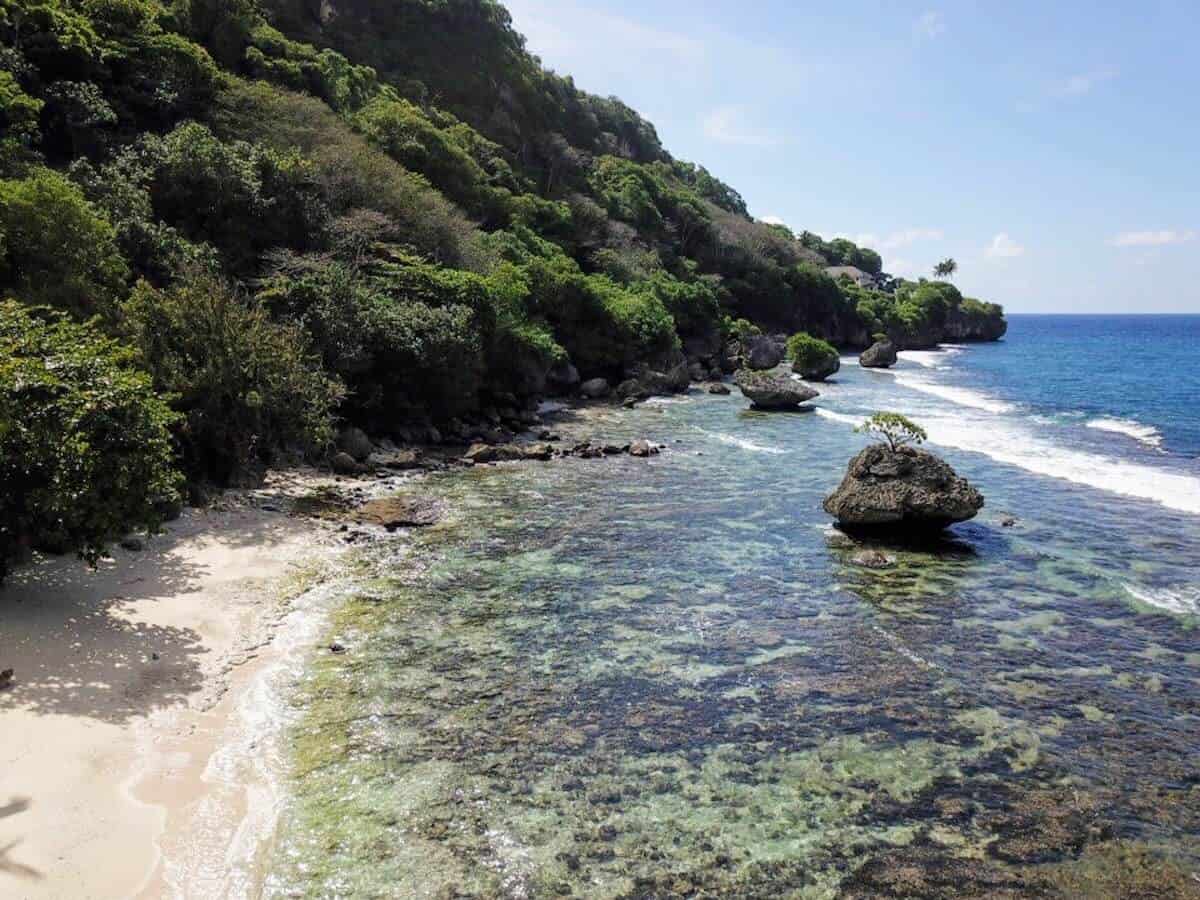
Disclaimer: Almost all posts on this site contain affiliate links, and this one about How to Travel To Christmas Island Australia is no different. This means that if you click on any of the links in this post (and make a purchase) I may receive a small commission at absolutely no cost to you . Each post is carefully crafted to (hopefully!) answer all your questions and recommendations are made where we believe they will improve your trip and help with your planning. As such we thank you in advance should you decide to click & buy. Read my full disclosure here .
Table of Contents
- 1.1 Why is Christmas Island Called Christmas Island?
- 1.2 Where is Christmas Island?
- 1.3 How to Travel to Christmas Island
- 1.4 Do You Need a Visa for Christmas Island?
- 1.5 How to Get Around Christmas Island
- 1.6.1 What Things Cost on Christmas Island
- 1.6.2 Duty Free on Christmas Island
- 1.7 Telephone Networks & Wifi on Christmas Island
- 1.8 Weather & Climate on Christmas Island
- 1.9 Mosquito’s on Christmas Island
- 1.10 Time Zone on Christmas Island
- 2.1 Flying Fish Cove
- 2.2 Meet the Crabs
- 2.3 Diving & Snorkeling
- 2.4 Walk The Boulder Track
- 2.5 See A Blockbuster at the Outdoor Cinema
- 2.6.1 Margaret Knoll
- 2.6.2 LB4 Lookout
- 2.6.3 Territory Day Lookout
- 2.6.4 Golf Course Lookout
- 2.7 Swim in the Crystal Clear Waters of The Grotto
- 2.8 Get Sprayed At The Blowholes
- 2.9 Jump of the Jetty (in Flying Fish Cove)
- 2.10 Birdwatching
- 2.11.1 Hugh’s Dale Waterfall
- 2.11.2 Merrial Beach
- 2.11.3 Anderson Dale & Cove
- 2.11.4 Martin Point
- 2.12 Go Fishing
- 2.13 Play Golf
- 2.14.1 Lily Beach + Boardwalk
- 2.14.2 Ethel Beach
- 2.14.3 Dolly Beach
- 2.14.4 Greta Beach
- 2.14.5 West White Beach
- 2.15.1 Freshwater Cave
- 2.15.2 Daniel Roux Cave
- 2.16 Tai Jin House (aka. Buck House)
- 2.17 Immerse Yourself with Local Culture at the many Temples on the Island
- 3.1 In Settlement
- 3.2 In Poon Saan
- 3.3 For those looking for luxury
- 4.1 Cafe 1888
- 4.3 Koziak Cafe (at the Recreation Centre)
- 4.4 CLA (Chinese Literary Association)
- 4.5 Lucky Ho
- 4.6 Malay Club
- 4.7 Rumah Tinggi Bar & Grill
- 4.8 The Golden Bosun
- 5.1 Indian Ocean Experiences
- 5.2 Faulkner Photography Tours
- 5.3 Christmas Island Fishing & Adventure
I visited Christmas Island as part of the Google Street View Capture Project and had the privilege of working with Christmas Island Tourism , Parks Australia and the GoogleDownUnder Team on the launch of their Pixel2 Phone. I was not required to produce any content as part of the project, but I was so blown away with Christmas Island as a destination, that I wanted to share it with the world.
Christmas Island Essential Visitor Information & FAQs
Why is christmas island called christmas island.
First sighted in 1615 by Richard Rowe, master of the Thomas , it wasn’t until Captain William Mynors of the Royal Mary , an English East India Company vessel, named the island when he sailed past it on Christmas Day, in 1643. It is always referred to as Christmas Island and not Xmas Island.
Where is Christmas Island?
Christmas Island is an Australian External Territory located in the Indian Ocean and is in fact closer to Indonesia than Australia. As such, Christmas Island residents always say their address is is ‘Christmas Island Indian Ocean’ (and can be seen on all tourism products) rather than Christmas Island, Australia. (Other external Australian territories include the Coral Sea Islands , Norfolk Island , Ashmore and Cartier Islands and Heard Island and McDonald Islands.) In latitude and longitude terms, Christmas Island location lies at 10.4475° S, 105.6904° E.
How to Travel to Christmas Island
Christmas Island (and the nearby Cocos Island) are one of the most remote parts of Australia and is far removed from the regular tourist track. Flights into and off Christmas Island are only serviced by three airlines: Virgin Australia from Perth and Garuda from Jakarta, Indonesia. Virgin fly to Christmas Island on Tuesday and Friday; Garuda operate their return service on Fridays only and Malindo Air have just (late 2018) started a service from Kuala Lumpur which flies on Monday and Tuesdays.
The difficulty in getting to Christmas Island (and sometimes getting off! – especially with Virgin who only have 1 plane that services the Island and the offshore mines in the area – you can probably guess who takes preference. Note, it’s not visitors to or Christmas Islands residents) is part of it’s charm.
However all visitors should take potential delays into account when planning their trips. ( READ: Buy Travel Insurance ) But remember – the most incredible places on this earth are off the beaten path, and the effort it takes to get to them is always worth it. (And that includes sharing how to go Christmas Island and our top tips for visiting Christmas Island!)
Do You Need a Visa for Christmas Island?
As an external territory of Australia, Australian immigration rules apply. These vary quite dramatically from country to country, but visitors from several countries are able to apply for a free e-visa prior to arrival, which would also be valid for the mainland. Please check on the Australian Home Affairs Website to find out which visa you will need.
How to Get Around Christmas Island
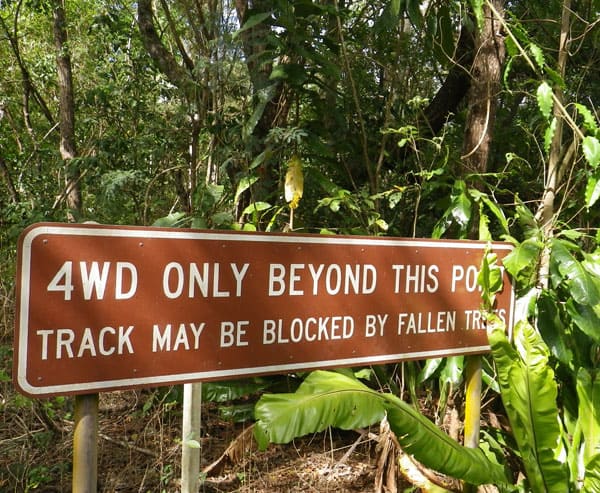
Covering a total area of 135 square kilometers (of which 63% is Covered by incredible flora and fauna in Christmas Island National Park), visitors will need to hire a vehicle in order to get around Christmas Island. There is no public transport, and only 1 taxi firm available.
As such if you are wanting to get the most out of your visit, you will need car hire. A variety of 2 or 4WD cars are available to collect at Christmas Island airport and are ideal for exploring the various unsealed roads and bush tracks which wind around the Island.
Visitors are encouraged to take care and drive slowly on Christmas Island, both to protect the various crab species which can often been seen on the roads and because the tracks can become slippery with the intermittent rain and constant humidity on the Island. Experience with 2 or 4 wheel driving can only be helpful to visitors, but of course, is not mandatory.
Currency, Cash & Card Usage on Christmas Island
As an Australian external territory, the Aussie Dollar is legal tender and the Australian Government remain in charge. All supermarkets, shops and restaurants etc accept credit and debit cards, but cash in small notes is very much appreciated at most establishments. There is only one bank on the Island owned by Westpac, however cash can be withdrawn if you spend over $20 in the supermarket or from the post office located just above Flying Fish Cove.
What Things Cost on Christmas Island
Christmas Island Australia is remote and all supplies – food, drink, fuel, products etc – have to be imported. Air freight is meant to arrive every few weeks, and the shipping container with bulk items/products is meant to arrive every few months but can be delayed due to a number of factors. The residents deal with these delays as a consequence of Island life, and unless there is a serious shortage of supplies visitors will not notice.
These supply issues and distance they have to travel do have a couple of consequences though. The first is that food items – particularly fresh items such as fruit and vegetables carry a premium price point:
- Small meals average between $10-25
- Large meals anywhere between $20-50
- Coffee $3-6
- Iced Coffee $10
- Soft Drinks $3
- Beer (bottle) $5-8
- Wine (250ml) $5-9
Duty Free on Christmas Island
Despite the fact that Christmas Island is officially one of the Australian Indian Ocean Territories, Duty Free is still available to purchase when entering or leaving the Island. However, I would highly recommend that you skip the Duty-Free in Perth and buy your booze (or other such goodies) on the Island.
This is due to the fact there is no tax on Beer, Wine, Spirits and Cigarettes on the Island, making these items ridiculously cheap – even better than Duty Free Prices. 750ml of Smirnoff will set you back $12 and 1 Litre of Gin comes in under $20. And you still have the 2.25l import limit per person when re-entering mainland Western Australian.
Telephone Networks & Wifi on Christmas Island
At present, the Island has a 2G network operated by Telstra, which is available in residential and airport areas. This means everyone on the Telstra network has the ability to call and text in these serviced areas, and international roaming charges apply to those on alternative networks. There is no data available on any mobile network.
Wifi on the Island is restricted to the Internet cafe in the Visitor Information Centre and a few hot-spots in residential areas where the connection that can be bought by the hour, day or week. Additionally, several hotels offer their own wifi networks as standard, perfect for emails and social networks, but not for streaming or heavy bandwidth tasks.
However – this is set to change with a superfast cable network slated to come from Singapore in the pipeline (literally) and is expected to go live in the next 12 months; and when this happens, the wifi will likely be better than mainland Australia (not that that is such a hard task!)
Weather & Climate on Christmas Island

Christmas Island is located only 10 degrees South of the Equator (+ 2750km from the Australian mainland) and offers a year round tropical climate with wet and dry seasons. The temperature is warm all year round with average lows of 22°C and average highs of 28°C (don’t forget your sunscreen!) and constant humidity levels between 70-90%. The wet season runs between December and April when it is advisable to pack a light rain jacket, although showers at this time of year rarely last long.
Mosquito’s on Christmas Island
Yes there are plenty of mosquitoes – in the jungle, on the beaches and in the bars and restaurants – they are everywhere. And yes they love to bite (one night without bug spray and I got 50 bites on my legs alone – the mozzies have always been a fan of my English skin and the lack of bug spray often results in bites wherever I am in the world).
BUT – on Christmas Island, the Mosquitos do not carry any diseases . There is no risk of malaria or dengue or yellow fever – or any of the other associated conditions that result from Mosquito bites, just a potential for itchy skin. We highly recommend taking a serious supply of bug spray and reapplying generously throughout the day. And in the event you run out (which if your plane is cancelled twice can definitely happen!) – you can purchase more at the supermarket in Settlement.
Time Zone on Christmas Island
Christmas Island is UTC +7 time zone (also known as IndoChina time), making it one hour behind Western Australia.
Incredible Things to Do on Christmas Island
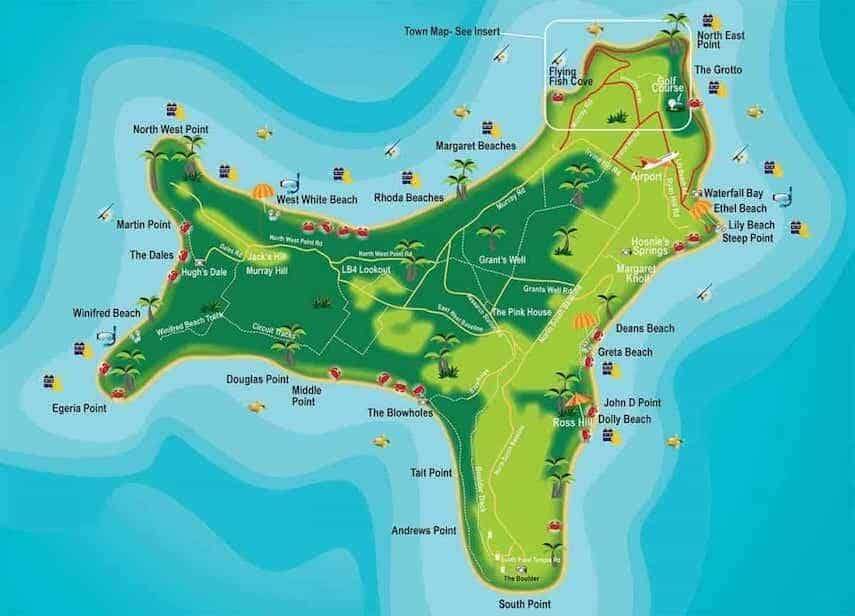
Flying Fish Cove
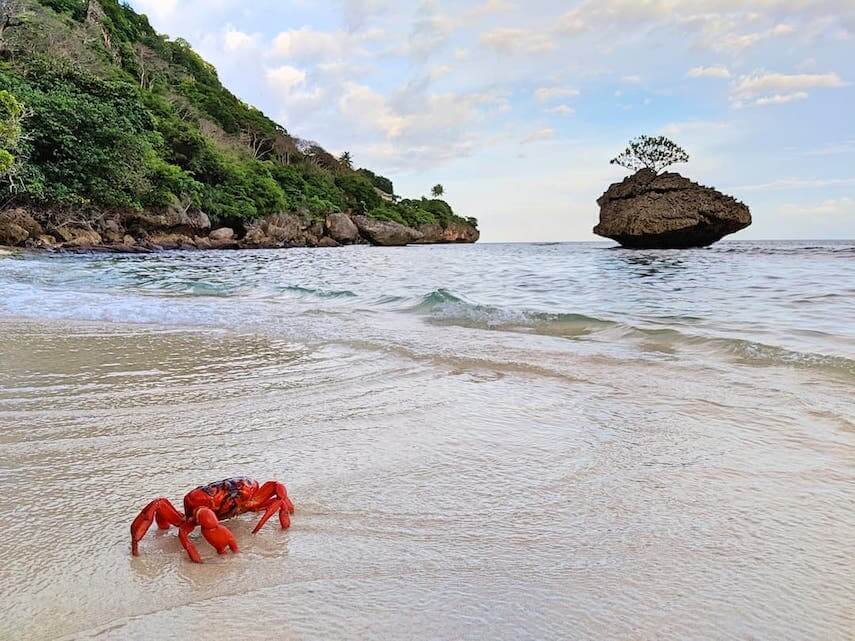
Flying Fish Cove is the official ‘capital city’ of Australia’s Christmas Island, and is the central point to life on the Island for many locals. On any given afternoon you’ll find families relaxing under the cabanas along the foreshore, people swimming and snorkeling in the cove, children jumping off the jetty and the port going about it’s daily business.
On days where the swell is up it is also possible to surf in the cove – although, with no surf experience myself, I’ll leave it up to your own abilities/competence to decide whether it’s a good idea or not (it looked very shallow to me!).
The Cove is also a great sunset spot and major Christmas Island tourist attraction s so be sure to include an evening here on your Christmas Island Itinerary. Grab a cold one (or two, or three) and pull up a seat as mother nature turns the sky different shades of pink and purple in front of your eyes – and keep a lookout for spinner dolphins on the horizon!
RELATED: Visiting Christmas Island is just one of my 100+ Things to See, Do & Experience in Australia post – click here to read my other recommendations!
Meet the Crabs
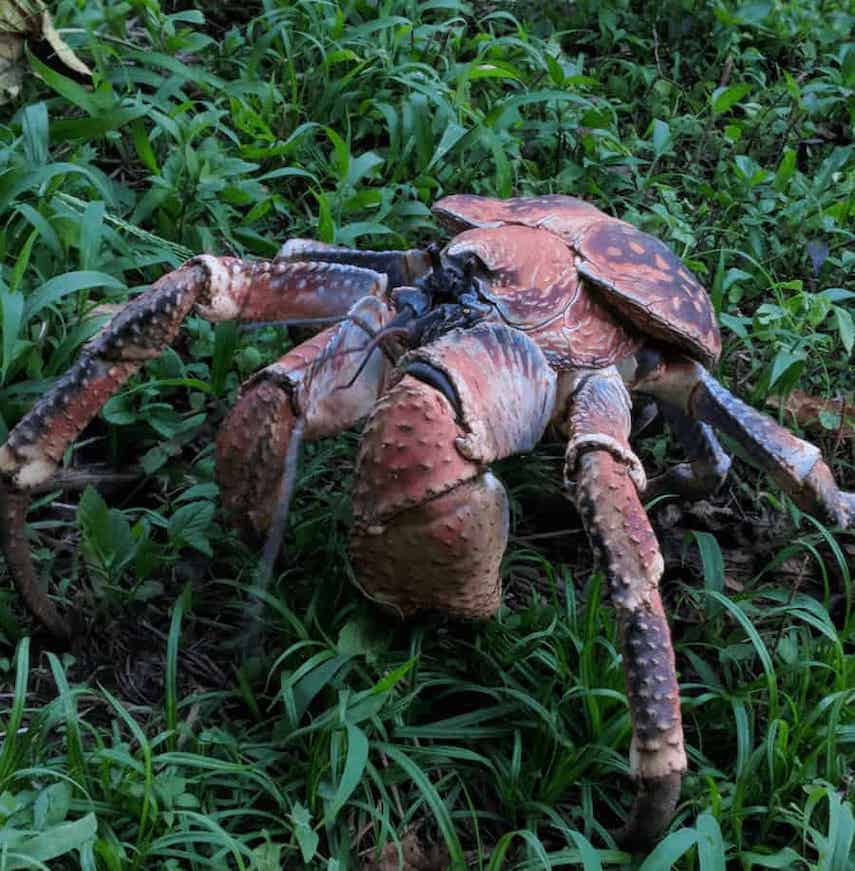
If someone says “Christmas Island” to you, your first thought may be the Christmas Island red crabs who’s spectacular migration is one of the most impressive on the planet (more below) but the Island is so much more than a habitat for red crabs. There are in fact over 20 different crab species that have been found on the Island.
From the endemic blue crabs that inhabit the wetlands, to the extraordinary Robber Crabs (also known as Coconut crabs) who are the world’s largest land crustaceans and wander across the Island’s roads as if they own the place (and you will be required to Slow down. Drive Around when navigating the Island).
They also have a habit of stealing any shiny and foreign objects that they find in their path, to the point that locals will hang bags from trees rather than leave them on the ground when camping or hiking (Just be sure to remember where you put it!).
There are also various species of hermit crab, ghost crabs, nipper crabs, land crabs and cave crabs on the Island (to name a few) and if you are really interested in getting to know them I recommend reading Crabs of Christmas Island by Max Orchard. – or if you want to see it all in action, take a look at my Christmas Island Photo Essay post for some wanderlust worthy pictures!
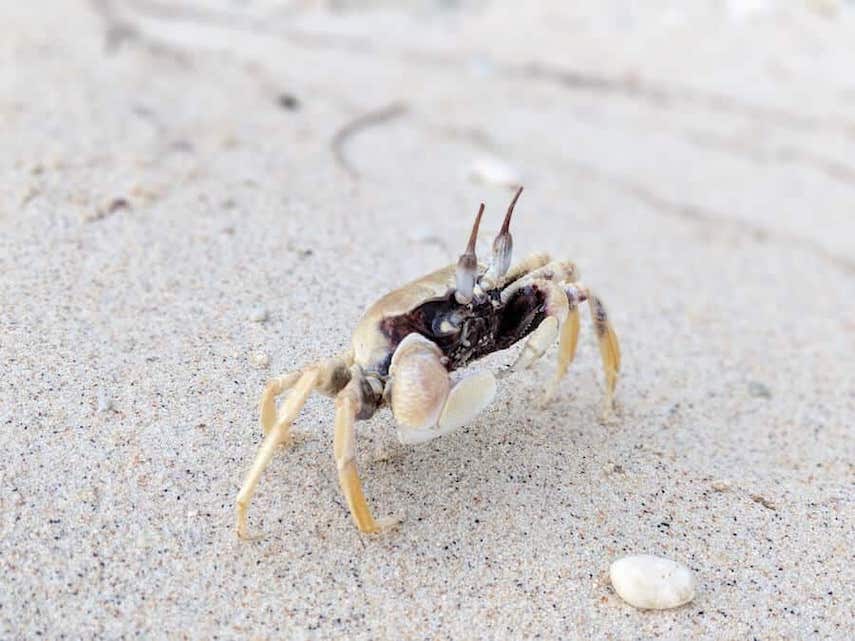
And now, a little bit about the main event.

The Island is home to 50 million red crabs (scientific name Gecarcoidea natalis – which are only found on Christmas Island) and each year the adults migrate from the jungle to the coast to breed and spawn. The event takes place between October and January, although it’s commencement is dictated by the wet season and levels of moisture in the air.
The synchronized and island wide migration is truly a one of the worlds natural wonders – the carpet of crabs a sight that needs to be seen to be believed. Click through to my full post about the Christmas Island Red Crabs where I (hopefully) have given them the attention they deserve.
Diving & Snorkeling
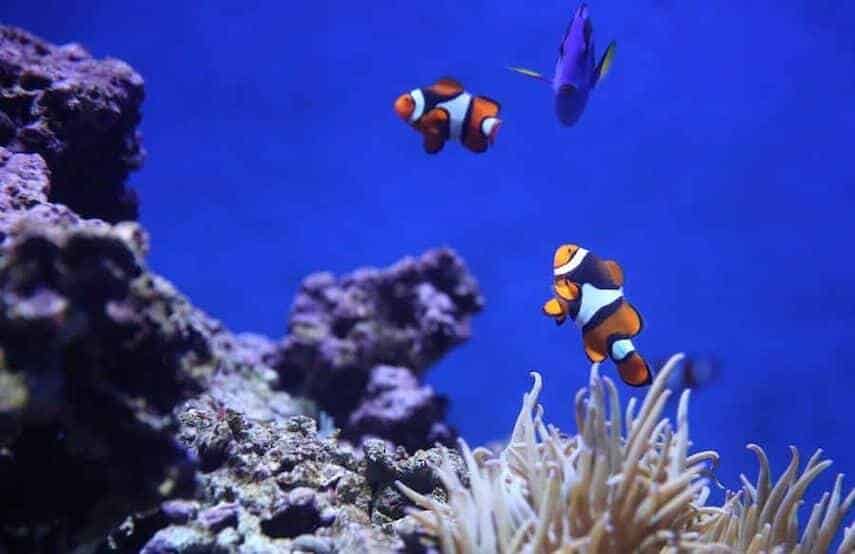
Offering some of the best snorkelling and diving in the world, the narrow fringe of reef that surrounds Christmas Island is home to 88 different species of coral and 600 species of fish. (This is one place that you don’t want to forget your GoPro when you jump in the water!)
On any given day and at any dive site s there are turtles, manta rays, giant trevally, lion fish, spinner dolphins, various small shark species and between October and January, the chance to see Whale Sharks on their migration.
The tiered structure of the Island – which is much like a wedding cake – also continues into the water, with the ocean floor dramatically dropping away into the abyss less than 50m from the coastline. This provides scuba divers and snorkelers with beautiful views of the coral and fish in the shallows and a shelf and wall which drops down to the depths where the fish become larger, and the chances of spotting a (small) shark increase.
Check out Extra Divers (who also have an incredible Facebook page with inspirational underwater imagery from around the Island) and Wet ‘n’ Dry Adventures . Both organisations can arrange day or night scuba diving trips or coordinate a full on Christmas Island diving trip if you are super keen to spend most of your time underwater.
Walk The Boulder Track
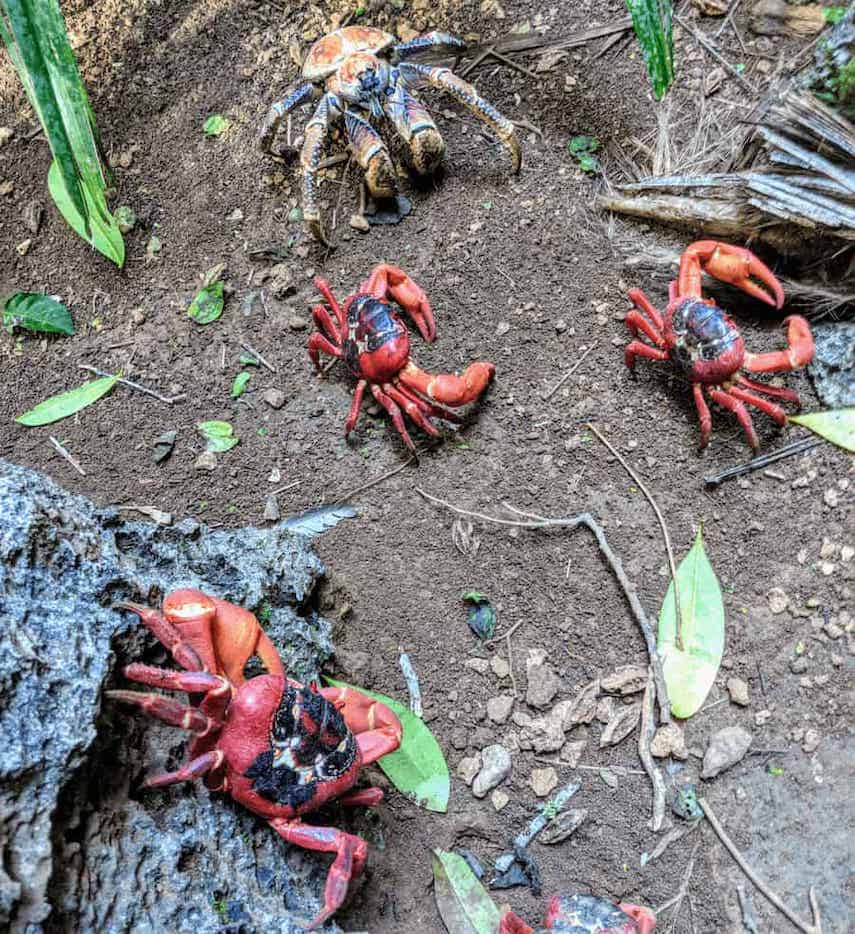
Christmas Island National Park covers two-thirds of the island and the Boulder Track is a fantastic walk to get you into the heart of it. Where the track to the Blowholes start, the Boulder track heads off in the opposite direction and winds through the rain-forest and along the coast to the Boulder at South Point (an area of the island which has been ravaged by the Phosphate mine).
There is usually lots of red crab and robber crab activity along the track, and visitors are encouraged to stick to the path, as the crab holes that cover the ground at either side make the ground less stable (and can result in a shoe full of National Park when your foot disappears down one of them! And yes I am speaking from experience ).
Keep your eyes peeled for coloured tags along the trail that will take you out to the coast at various viewing points, the most impressive of these being the Christmas Island Natural Arch. Also, keep in mind that some of the viewpoints may not be accessible at all times of the year due to weather fronts that hit the island, the results of which can occasionally block paths.
See A Blockbuster at the Outdoor Cinema
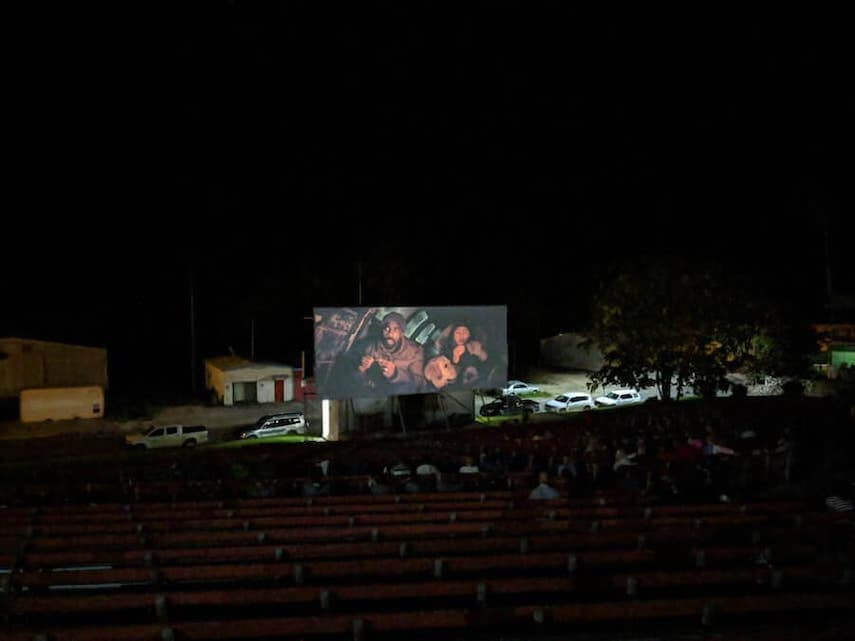
When was the last time you visited an outdoor cinema?! This small, but perfectly formed outdoor entertainment area is on the hill in Poon Saan allowing for a natural gradient of seats so everyone can have a great view.
Every Saturday night, and alternate Wednesdays, a Hollywood Blockbuster (both new releases and old classics) are played out on the big screen.
At only $5 a ticket, it is an absolute bargain – and the range of choc tops available is more expansive than any cinema on the mainland! (Although keep in mind that all produce costs a lot to get to the island, so be prepared to pay the very reasonable $6 each for your frozen treat!)
Check out the Views from the Lookouts:
Margaret knoll.

Providing dramatic panoramic views across the coastline, Margaret Knoll is an easy to reach, but isolated spot, located on the East of the Island. A favourite with bird watchers due to the number of seabirds in the area. Head to lookout to watch the Frigatebirds, Golden Bosun, Christmas Island flying foxes and the Red-footed and Brown Boobies as they fly and nest in and around the coast.
LB4 Lookout
Drive along the Murray Road over the north coast towards Settlement for a panoramic view across the island from the on-site gazebo. Surrounded by recent planting’s in the Rainforest Rehabilitation Program, Abbot’s Bobbys may be sighted flying to and from nearby nest sites. Sighting opportunities are increased in the early evening when the birds are returning to their nests and more birds can be spotted beyond the lookout along the section of the road where the crab grids are.
Territory Day Lookout
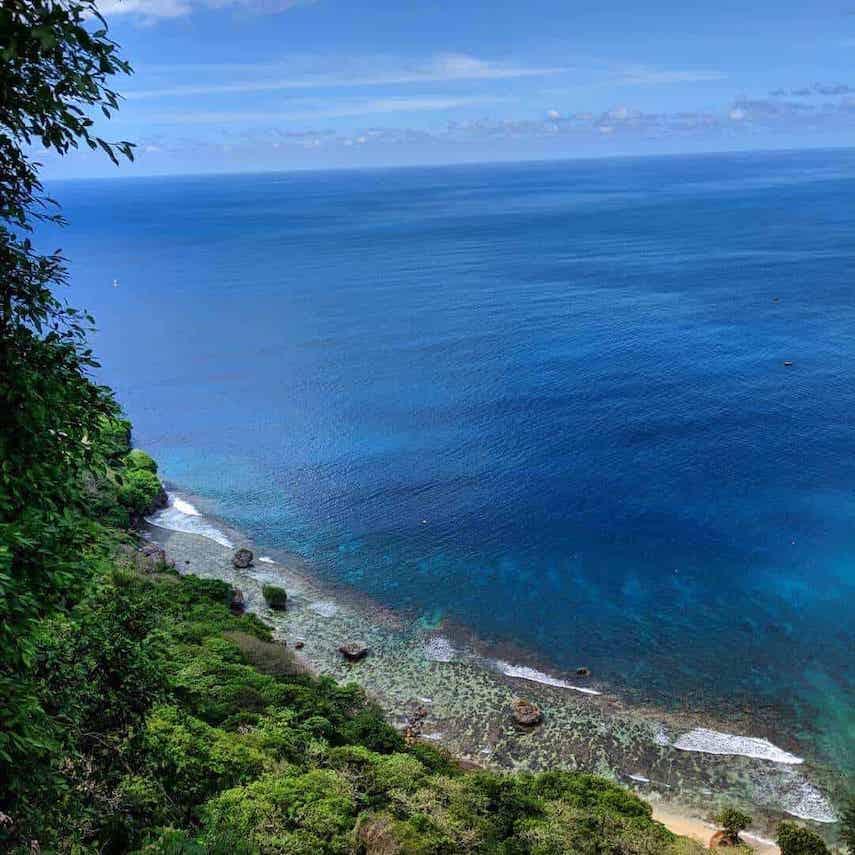
The spot to take that iconic shot above the expanse of Flying Fish Cove, and come face to face with some of the island’s seabirds. There are picnic, BBQ and playground facilities and it is also the start of the Territory Day Walking track that leads to Tai Jin House.
Golf Course Lookout
The Christmas Island Golf Course lookout (located above the Golf Course, in case you hadn’t guessed) is perched on the cliff edge in the Island’s North East. Offering views of the coastline and several species of sea birds, it’s a great place to come and watch the world go by.
Swim in the Crystal Clear Waters of The Grotto
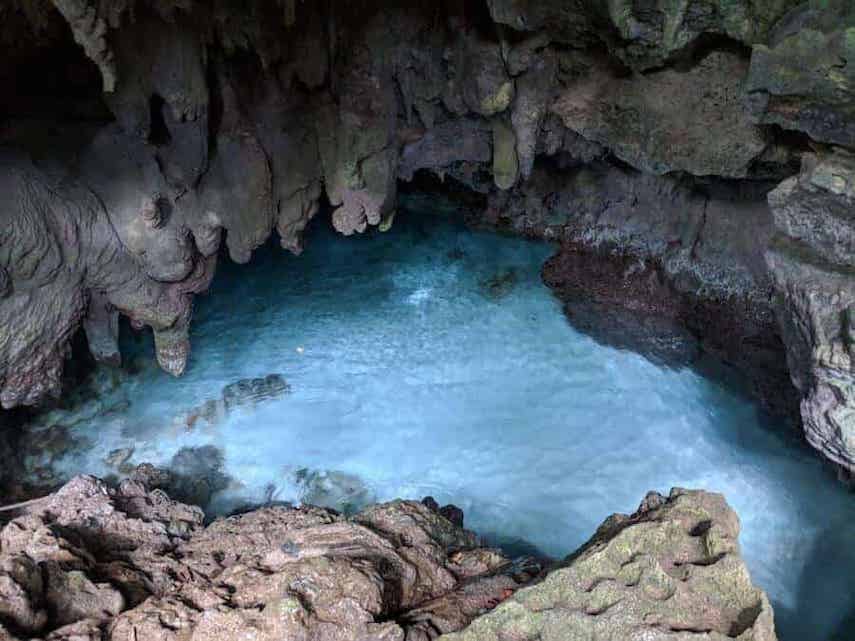
Only a short 5 minute drive out of Settlement, and a short walk through the bush, and you’ll find the Grotto. A sandy bottomed cave covered by the crystal clear water that flows in from the ocean, it is a great place to take a dip during the day, or dressed with candles, makes for a romantic spot at night.
Just be careful if going for a swim as the cave leads to the Ocean, and the opening to get back in can be hard to spot once you are out on the high sea.
Get Sprayed At The Blowholes
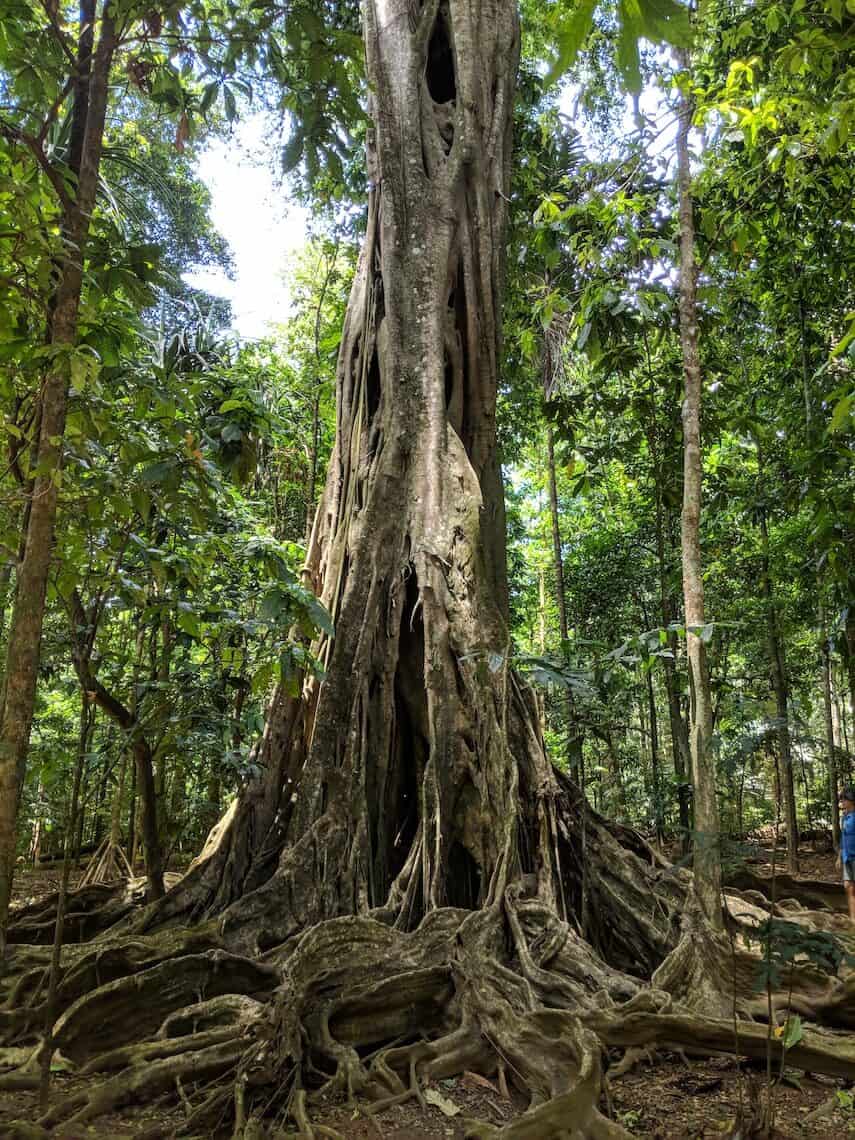
Located on the South Coast of the Island, the 4WD track to The Boardwalk at the Blowholes winds through the stunning tall rain forest which covers this part of the Island. Unable to drive to the bottom of the track, visitors are restricted to parking at the top of the hill and walking down to where the track splits into the Boulder Track and The Blowholes (don’t worry, there is signage to point the way at the bottom!).
On your way down the hill from the parking area, keep a lookout for the giant strangler fig tree on the right which has absorbed the tree below it leaving a giant hollow trunk. (The kids on the Island have been known to abseil down it, which is very cool!)
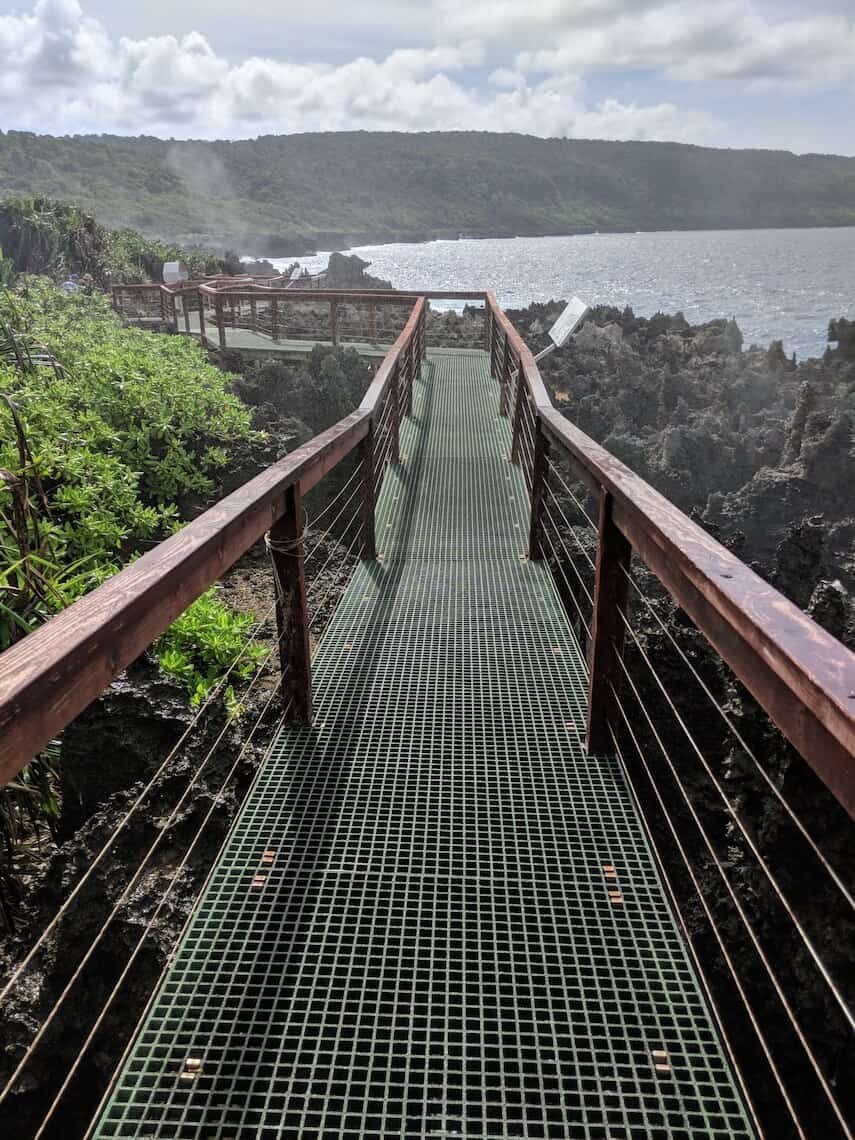
When you reach the Blowhole Boardwalk you’ll be greeted by a carpet of jagged, porous rock that acts as a conduit for the ocean as it crashes against the coastline, forcing the air bubbles through the gaps and shooting the remaining salt water particles high into the air. The wheezing of the rocks as the air forces it’s way through is a sound like no other and the spray created from these Blowholes is a welcome reprieve from the heat and humidity on Christmas Island WA.
Jump of the Jetty (in Flying Fish Cove)
“You haven’t ‘done’ Christmas Island until you have jumped off the Jetty” – at least that is what I heard from all the locals, and judging by the number of kids that do this for fun everyday – how bad can it be?! Just head on down to Flying Fish Cove, walk to the end of the Jetty and jump into the crystal clear waters of the Indian Ocean which surround the island.
Although, note to the ladies: when jumping in a bikini, hold onto your top or you could will end up giving everyone in the cove a bit of a show! (But rest assured, you won’t be the first.. if you know what I mean!)
Birdwatching

Christmas Island is a twitchers paradise. Over 100 vagrant and migratory species have been recorded here, and over 80,000 seabirds come to nest here annually. The most famous of them is the golden form of the white-tailed tropic bird which is endemic to Christmas Island and has been adopted as the Island’s fauna emblem.
Known locally as the ‘Golden Bosun’ (and is the bird the pub is named after!) they can be seen soaring gracefully above most coastal parts of the Island – but we recommend heading to the Territory Day Lookout (above) for a eye-level view. Other endemic species include the endangered Christmas Island Frigatebird, and endangered Abbotts Booby.
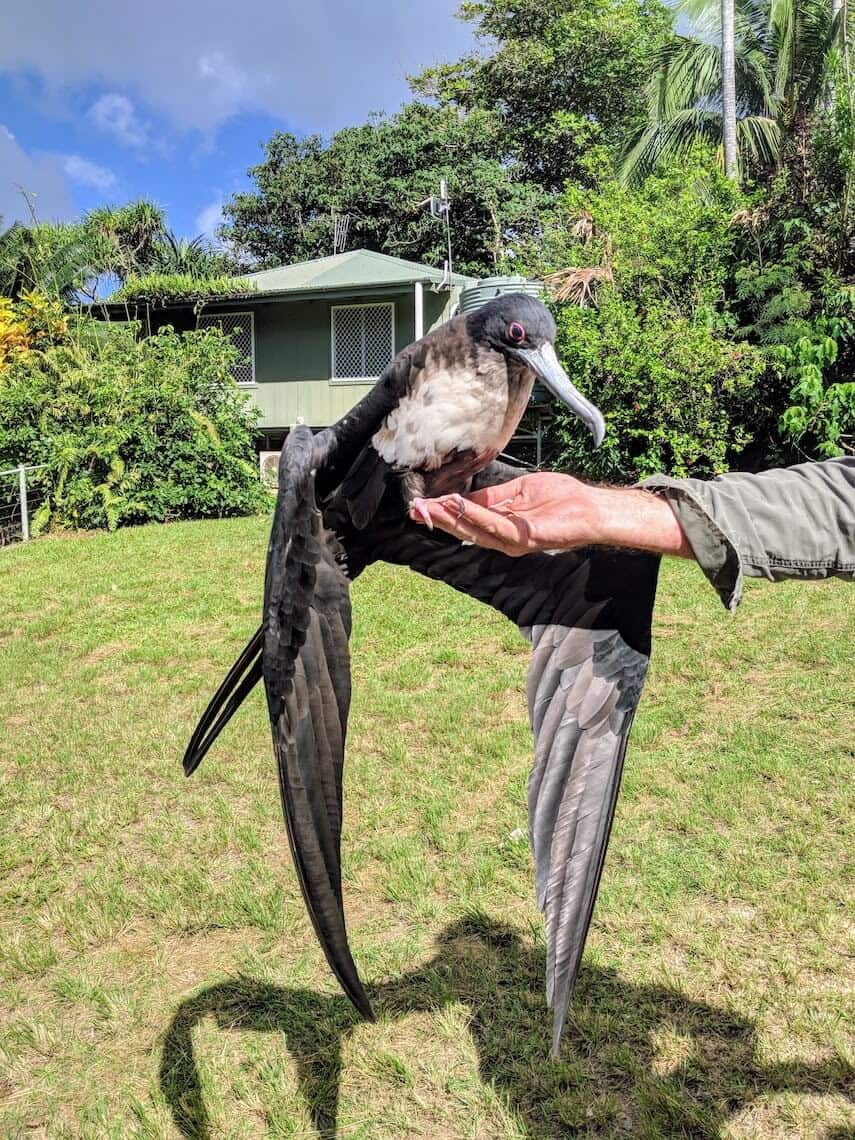
Away from the coastline, the rain forest also boasts several endemic species (four of which are on the endangered list), including the Christmas Island hawk owl (elusive and a real prize for Birdwatchers), thrush, goshawk, distinctive sounding emerald dove, imperial pigeon, gossy swiftlet and white eye.
With the number of endemic species, variety of nesting birds, and not to mention the crab activity, it is a wonder that Christmas Island hasn’t been UNESCO heritage listed .
Explore the Dales Walking Tracks
IMPORTANT: As with any walking or hiking activities on the Island, please follow regular safety procedures which include walking with someone (and not alone), letting someone else know where you will be going and your expected arrival time back; carry plenty of drinking water; stick to the marked trails; stay away from cliff edges and obey all signage – they are there for your benefit and protection.
Hugh’s Dale Waterfall

Follow the boardwalk right to the top of the track where you’ll be greeted with a waterfall that flows all year round. You can take a dip under the refreshing ( read: cold ) falls or simply splash round in the rock pool at it’s base. For the adventurous, climb up the rocks to the left of the waterfall and you’ll be rewarded with a beautiful jungle vista, and one of the most beautiful natural sights on the Island.
Merrial Beach
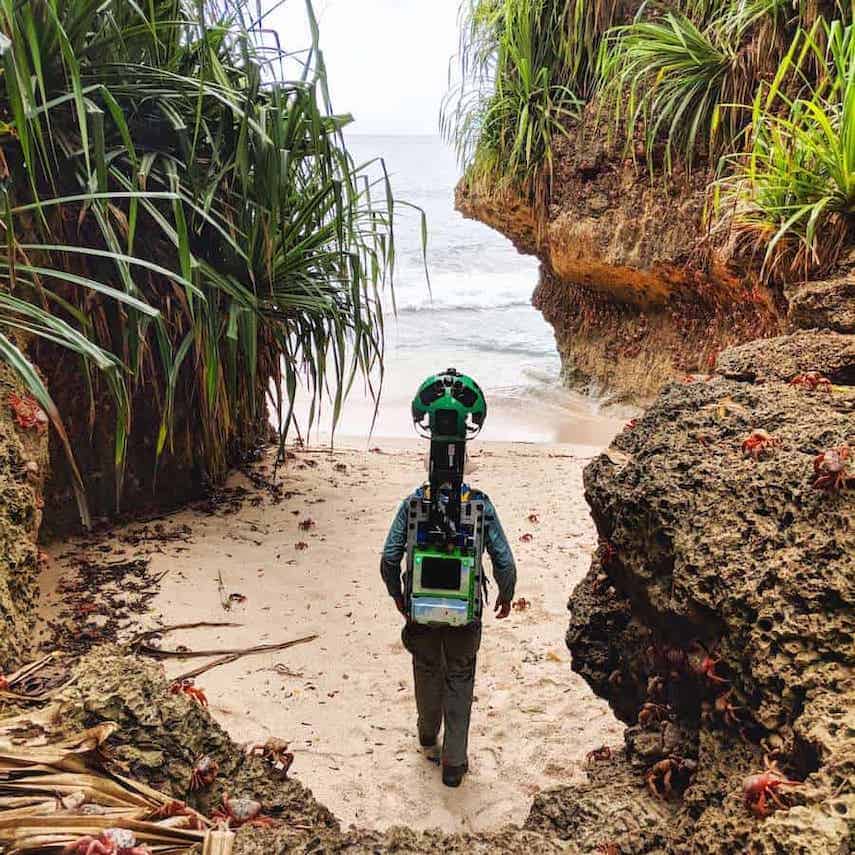
Quite possibly one of the best kept secrets on the Island, Merrial Beach (often pronounced as Muriel Beach) is located between the start of the Dales Walking Tracks and the boardwalk to Martin Point.
The small car park area which marks the start of the trail is next to a fallen tree when there can be up to 20 Robber crabs feasting on the pulp. (They’re actually getting drunk of the natural sugars in the bark of the tree, so if you’re looking for quirky crabs that fall over as they try to climb, this is the place to be!)
To find the beach, hop over the tree and head down the track. There are pink nylon tags around various branches to guide you down to the cove. The bottom of the track can be difficult to negotiate with the rough volcanic rocks both a help to grip, and a hindrance to loose limbs or clutching fingers. There can also be some red crab activity on the track, so remember to watch your step.
At the bottom of the track you will have to hop down onto the beach where you will be able to enjoy the cove, practically all to yourself (depending on who else decided to head out that day!) Although note – if there is a car in the car park, it means the beach is in use, and it is polite to leave the visitors be!
Anderson Dale & Cove
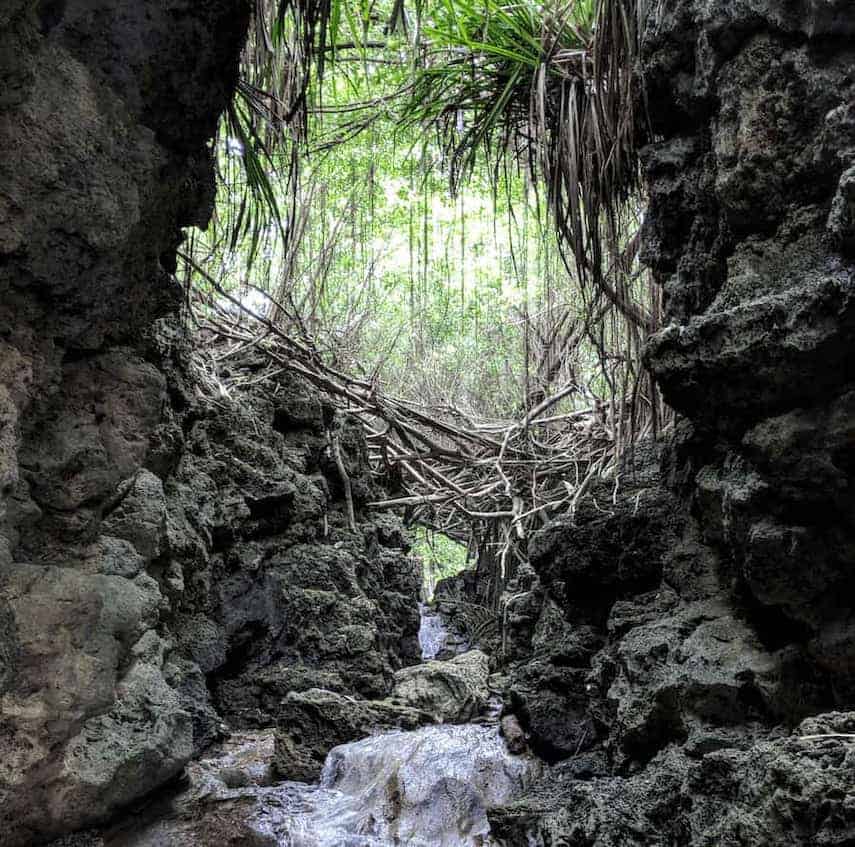
Now, I was in two minds whether to include this as a must do, but the root systems of the trees leading to the cave at the end of the track is just too impressive not to share. The Anderson Dale Track starts half way along the walking rack to the Waterfall, and there is a sign which marks the right hand turn into the rain forest.
There are reflective arrows attached to trees and pink nylon tags to mark the trail (although I did ask Christmas Island Tourism and Parks if it was possible to put out more of these tags as I personally felt a little apprehensive when walking the track – even though I was with some awesome locals! – I’m not a natural bush walker!)
Towards the end of the track you will reach a concrete dam and from there you follow the flow of water down to the coast. You’ll climb down the rocks and underneath the root systems of the trees above the crevice before reaching a sheltered cove where the waves crash in.
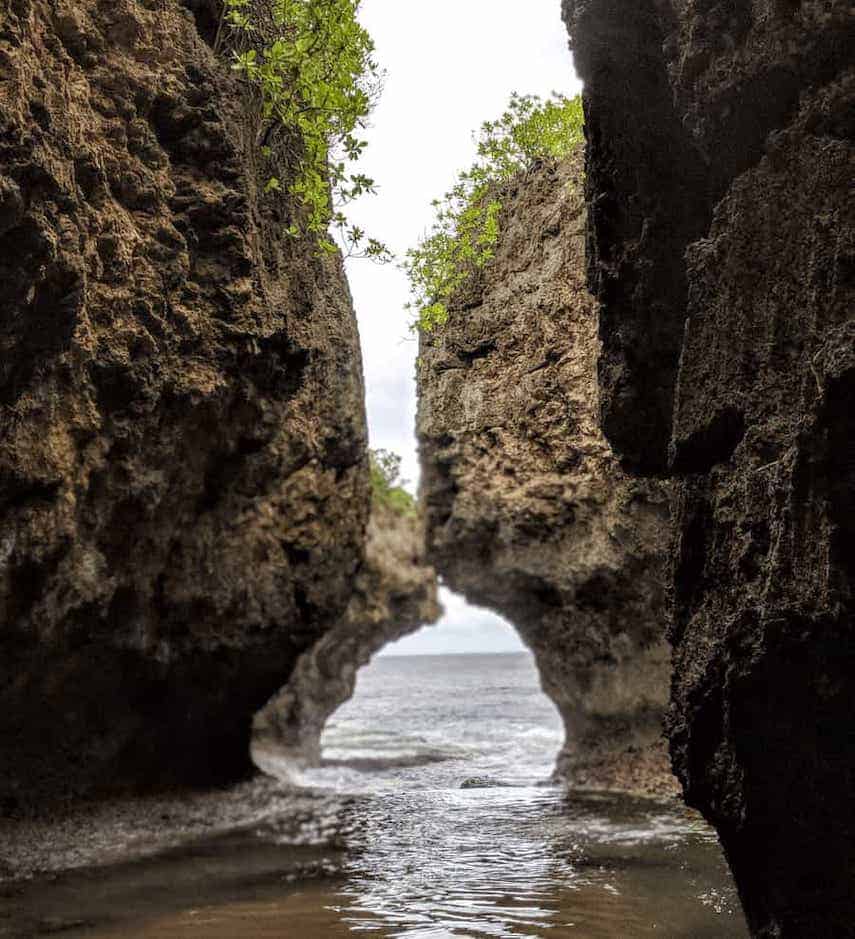
Martin Point

End your day on the boardwalk at Martin Point where you have the perfect spot to watch the sunset over the ocean as the coastline of the Island is bathed in light.
All the features of diving around Christmas Island, are also the reasons that it makes a great spot for sport, line and fly fishing! Giant trevally, wahoo, yellowfin and dogtooth tuna are just some of the large fish species that cruise these waters and with a range of fishing spots for both novice and advanced fishermen (or women!), all levels of angler are sure to have a great experience. Have a chat with the folks at Christmas Island Fishing & Adventure to arrange the perfect trip to suit your needs.
That’s right, folks. this island paradise has it’s own 9 hole golf course , offering visitors a round of golf with one of the most impressive backdrops on the planet. The Ladies comp takes place each Wednesday (from 3pm), with the Men’s comp taking place on Friday (from 3pm) and a mixed comp on Saturday from 12.30pm.
Clubs and balls can be hired from the Golf Club or the Visitors Center. And there are rules about what the penalty is when a crab takes your ball – which will definitely give you a story to tell your golf buddies back home!
Chill Out on Some Incredible Beaches
A small Island in the Indian ocean is bound to have some seriously beautiful coastline and Christmas islands beaches do not disappoint. Depending on the time of year, some beaches are more accessible than others, but you won’t be disappointed by a visit to any of them!
I have highlighted the major ‘tourist’ beaches below, but if you have a lot of time on the island and want to get more off the beaten path than you already are, ask in the Visitors Center about Egeria Beach, Winifred Beach, Isabel Beach and the natural springs at Freshwater Spring and Waterfall Spring. Also note that none of the beaches on the Island are patrolled by lifesavers and can be subject to large waves, swells, rips and undertows. Please take care when swimming at all areas of the Island.
Lily Beach + Boardwalk
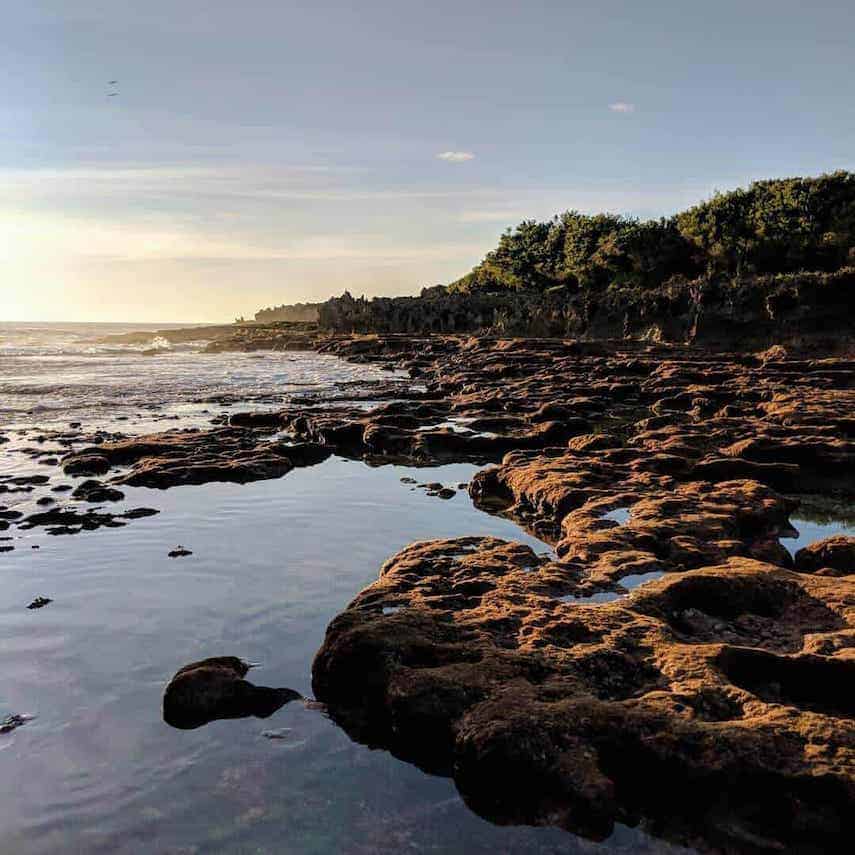
Lily Beach is one of the most easily accessible beaches on Christmas Island and is a great location for crab watching during the red crab migration. At the lowest point, the still as glass rock pools provide the perfect foreground to the waves crashing into coastline behind. And up above on the raised boardwalk, views over the coast line are just as impressive. Get here for sunrise for the perfect start to any morning.
Ethel Beach
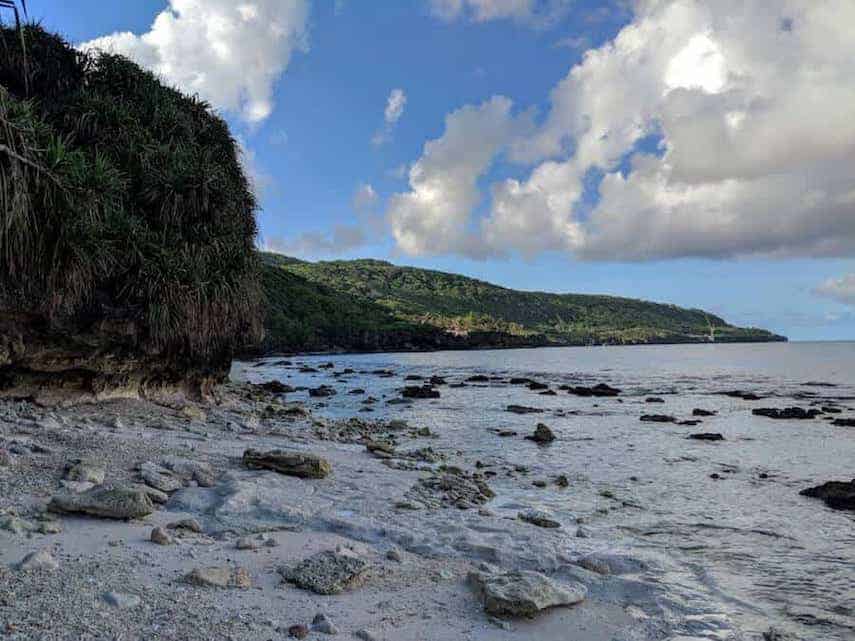
Ethel Beach is similarly easy to reach and offers the traditional sandy expanse below the cliff edges. Look up into the rocks to see the seabirds nesting or simply thrown down a towel and soak up some of the suns rays.
Dolly Beach
View this post on Instagram A post shared by Erra Fadli (@erra_97)
Dolly Beach is possibly the most famous beach on the Island (after Flying Fish Cove) and was once named as the 7th best beach in Australia. Located at the end of a 2km boardwalk (which can often take up to an hour to walk due to stopping and admiring your surroundings).
You’ll hear the waves before you see the beach as the line of coconut palms and spiky pandanus trees block your view at the end of the boardwalk before opening up to a beautiful sandy arc bordered by clear ocean on what is easily one of the most impressive beaches on the Island.
If you are lucky you’ll see the tracks of the turtles that have used the beach to lay their eggs, or from the babies making their way to the water’s edge after hatching. And if you follow the tracks you may find the nest of either a hawksbill or green turtle, both of which have been spotted on the Island.
It is also a favourite with locals who like to camp of Dolly Beach, but be warned, the robber crabs live up to their names here and it is advisable not to put your items down in the sand for any length of time, as you may not fin them there when you return.
One important thing to note is that at some times of the year, Dolly Beach may not be the pristine island paradise you were expecting. This is because the beach lies on the Indian Ocean Gyre, a current system that transports thousands of tonnes of rubbish from Indonesia south each year, with Dolly (and Greta) Beaches becoming the ocean’s dumping ground (more below).
Greta Beach
(The beach was inaccessible during my visit, but images of the debris on the beach can be found here )
Arriving at Greta Beach is quite an experience. The steep hilly track down to the cove accessible by car, and then the four flights of stairs hugging the wall of the surrounding cliffs to reach the beach are a brief but challenging walk (moreso when coming back up!).
As with Dolly Beach, Greta also lies on the path of the Indian Ocean Gyre which unfortunately carries tonnes on man-made rubbish from South East Asia onto Greta’s shores each year.
Beach clean-ups are often organised by the local high school when the kids and wider community spend a day carrying bags off garbage up the steps and off the beach. It is impossible to keep Greta Beach clean year-round because of this, but be sure to take a plastic bag to collect some of the debris on your visit, and do your bit to help keep Christmas Island beautiful.
Greta Beach is also a location favoured by turtles nesting, making it even more important to keep the beach as clear as possible.
West White Beach
View this post on Instagram A post shared by @hurricane_evermore
Access to the West White Beach is not for the faint hearted. The most challenging of beach to reach on Christmas Island, an extremely arduous downhill walk and section of cliff face that is traversed by ropes guiding the way down the last 12m of cliff to the beach, may be too challenging for the eldery or children (or those without a reasonable level of fitness).
If getting to the beach independently sounds too difficult, you can also arrange for a boat to drop you off at the beach, but (for me, at least) climbing in and out of the beach via rope should be the only way to do it.
Explore The Island’s Caves
Freshwater cave.
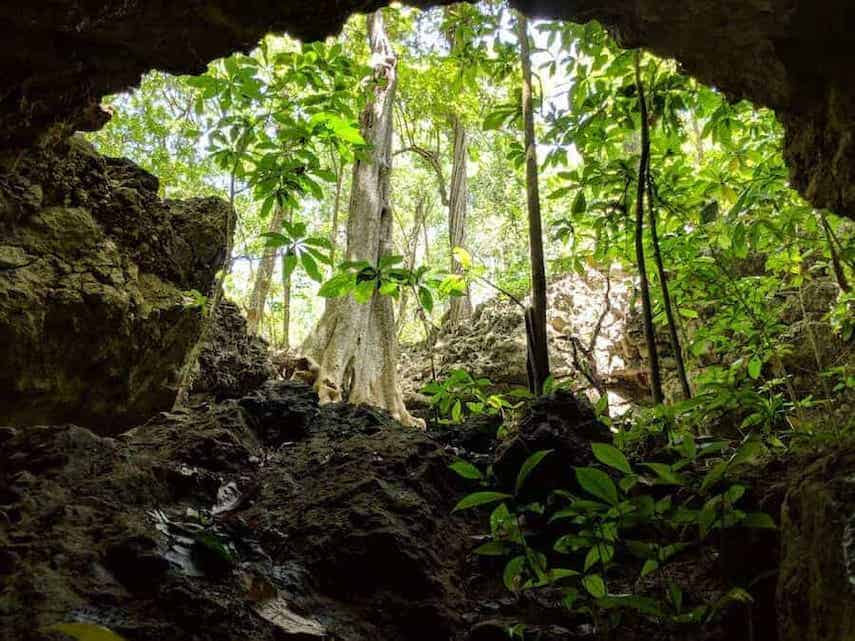
Very much off the tracks and barely marked, the entrance to the cave is only meters from the track down to the Blowholes. Marked by a wooden sign that seems to have been there as long as the island itself, the cave is home to several robber crabs. The top (and lit section) can be clambered around by anyone who is able bodied, however to go deeper into the cave, we recommend at least a basic knowledge of caving – and definitely a headtorch!
Daniel Roux Cave
View this post on Instagram A post shared by Christmas Island Tourism (@christmasisland)
Located in the North of the island and just beyond Smith Point, the Daniel Roux Cave complex consist of two very different cave systems. The upper cave is a large, multi-chamber cave that contains stalemates, stalactites and shoals; the lower cave is a deep subterranean cave that has an entrance that opens into the ocean.
Visitors would benefit from having a headtorch for the darker parts in the recesses of both caves. If exploring the cave, ensure you obey the signs, take your time, let people know where you are going and be prepared to get dirty!
Tai Jin House (aka. Buck House)
The former home of the Administrator of Christmas Island, this historic property sits on the cliff edge with a view of both Flying Fish Cove and the expansive Indian Ocean. The two storey property is now a function venue and a museum, and well worth a walk out to – if just for the view alone – whilst you are visiting the Shire of Christmas Island.
Immerse Yourself with Local Culture at the many Temples on the Island

Christmas Island is a melting pot of different cultures, who have lived harmoniously on the Island for decades. There are around 2000 residents on the Island heralding from China, Malaysia and mainland Australia, a lot of whom were initially drawn to the Island to work in the Phosphate Mine.
The Malay community are Muslim, praying at the Mosque in Kampong at Flying Fish Cove. Members of the Chinese community follow a variety of religious beliefs including Buddhism, Christianity and Confucianism and there are a number of temples, shrines and Christian churches around the island.
If entering these temples, please remember they are places of worship and are not ‘designed’ with tourists in mind but they are a window into day-to-day life and this fascinating mix of cultures should be respected as such. The Australians, Chinese and Malay people all live together peacefully and whilst it shouldn’t be a surprise it is lovely to see and experience.
Christmas Island Accommodation Options
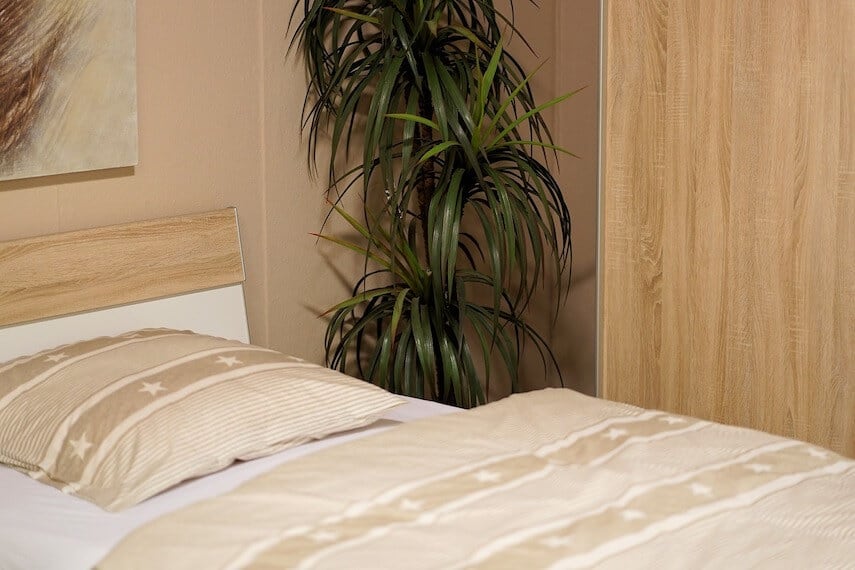
In Settlement
THE SUNSET – spacious, fully serviced air-conditioned rooms with en-suites and a pool on a wooden deck overlooking the ocean. From $165 AUD per night Check Prices & Availability & Read Reviews
VQ3 LODGE – Centrally located at Settlement, each room has a private ensuite, tea and coffee making facilities, microwave, TV, small fridge and is air-conditioned. Guests are able to use the Pool at the Sunset (across the road). Approx $145 AUD per night Check Prices, Availability & Read Reviews
THE SANCTUARY – tropical home set among lush gardens with its own private lap pool -sleeps 4. Approx $450 per night (1-2 ppl) – $580 per night (3-4 ppm) Check Prices, Availability & Read Reviews
COCOS PADANG LODGE – These 3 bedroom units with fully equipped kitchens are perfect for families or large groups, and are centrally located in Settlement. Approx $235 for 3 bedrooms; $215 AUD for 2 bedrooms & $195 AUD for Double/Twin Share Check Prices, Availability & Read Reviews
HIBISCUS HOUSE – whole house that sleeps 4 which is located in the leafy part of Settlement. Approx $220 AUD per night Check Prices, Availability & Read Reviews
THE RETREAT – A fully self contained three bedroom unit perfect for the family or up to three couples. (Sleeps 6) Approx $220 AUD per night
In Poon Saan
CHRISTMAS ISLAND LODGE – motel style accommodation close to shops, Lucky Ho restaurant and the outdoor cinema. Approx $120 AUD per night
Head over to the Christmas Island Visitors Center Page to organize bookings for more accommodation options and to learn more about the Island history or Christmas Island travel in general. We recommend booking through the visitors center as the staff there are invaluable when flight cancellations/alterations affect bookings.
For those looking for luxury
View this post on Instagram A post shared by Swell Lodge (@swelllodge)
The recently opened SWELL LODGE is located in the heart of Christmas Island National Park. A single, glass-fronted, solar-powered, luxury eco-chalet which offers all-inclusive accommodation including daily guided activities and even a private chef(!) It is marketed as one of the world’s most exclusive eco-lodges and is the perfect place to immerse yourself in nature and take a digital detox.
Where to Eat on Christmas Island
Whilst there may appear to be quite a few dining options on Christmans Island, not all of them are open for all meal services. Some are breakfast and lunch, dinner only, or breakfast and dinner.
They also all have different nights of the week that they are closed – or are sometimes closed for reasons not disclosed, and so it is best to check with the visitors center when you are on the Island as to what is currently open and when! (and making nightly bookings may not be a bad idea!)
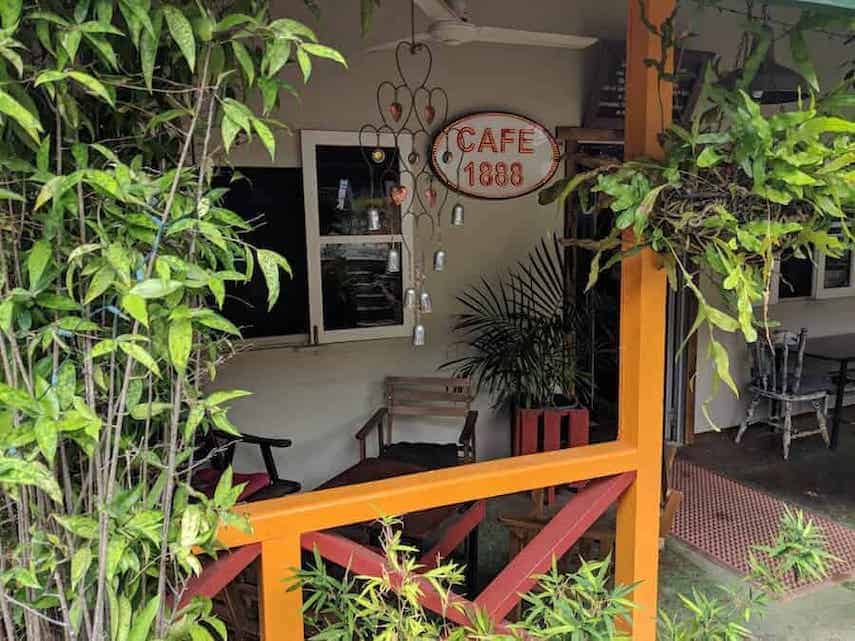
Located on the main drag in Settlement, 1888 is open daily for breakfast and lunch. With a small, but tasty menu, I can highly recommend the toasties for breakfast ($10) – although there is a monster all day breakfast available if you are feeling super hungry (or had too many beverages at the Golden Bosun the night before!) and you can’t go past one of their burgers at lunch time.
Located in Poon Saan, Smash is one of the top rated cafe’s on the island, and for good reason. Their coffee is delicious and their menu selection wide and varied. Open for Breakfast and Lunch, be sure to make this cafe a spot for at least one meal on the Island. The breakfast rolls and wraps are fantastic.
Koziak Cafe (at the Recreation Centre)
Serving counter meals, snacks, burgers and salads, the Koziak Cafe is a great spot to stop for lunch if you’ve been out and about in the middle of the Island; or after you have taken advantage of the many facilities available at the Recreation Center including a 25m outdoor pool, gym and multi-use recreation hall.
CLA (Chinese Literary Association)
Serving up huge portions of Chinese food for lunch and dinner, you won’t leave the CLA hungry. Located next door to the Christmas Island Visitors Center on the main road through Settlement the CLA is a favorite with locals and visitors alike.

This colorful Chinese Restaurant is located in Poon Saan, approximately 5 minutes drive from Settlement. Offering multiple pages of menu items comprising different proteins served in a variety of ways, the best way to eat is to chose a few medium sized plates to share and dig into a selection of tasty treats.
Highly recommended are the Indian Noodles, Silver Fish or Prawns and Kai Lan (a traditional Chinese leafy green) with Garlic. (Yum!) – And tell Aunty I said hi!
Best known for it’s breakfast fare, head to the Malay Club, just above Flying Fish Cove in Kampong for a feast of curries and Roti before a big deal of exploring.
Rumah Tinggi Bar & Grill
Serving modern Australian meals (with huge portions!), this restaurant is located in an 80 year old building, set on a cliff overlooking the Indian Ocean. Sit on the deck as the palm tree lined coast fades into darkness and watch the moon rise on a clear night. There is a large menu available and the seafood linguine and garlic/chilli prawns are always well received.
The Golden Bosun

Named after one of several endemic bird species on the Island, the Golden Bosun is both the local pub and a restaurant. Loved by visitors and locals alike, and where a round of 4 beers comes to less than $25, there are free pool tables and a dart board for those who like a bit of friendly competition in the pub side, and a dining room overlooking the ocean on the restaurant side. Light meals cost between $13-20 and larger meals between $20-45.
Tour Companies & Photographic Guides on the Island
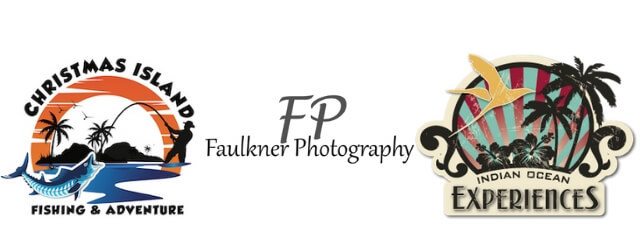
If you are feeling a little overwhelmed by the amount of things to see and do on Christmas Island, there are a couple of tour operators and companies the we highly recommend and who can help tailor your trip to your specific needs:
Indian Ocean Experiences
Lisa at Indian Ocean Experiences operates the only tour company/travel agent s on Christmas and the Coco Keeling Islands. Having lived on the Island for over 20 years, you can be safe in the knowledge that she knows all the best spots, activities and things to do on the Island to make your stay a memorable one. And can give you an incredible details about the Island’s past, present and community values.
Check out her website for a range of Christmas Island holiday packages and information about crafting your own itinerary.
Faulkner Photography Tours
View this post on Instagram A post shared by Kirsty Faulkner (@faulkner_photography)
For the photographer in you, Kirsty will take you to some of the most beautiful parts of the Island and help you capture some of the most incredible images to compliment your visit.
Whether you are interested in the rugged landscapes, exquisite birdlife, land crab activity or simply want to capture the breathtaking sunrises and sunsets around the Island, Faulkner Photography Tours will help you showcase the best of the island both in location and through the helpful shooting and editing tips that Kirsty is happy to share with you throughout the tour.
Christmas Island Fishing & Adventure
More of a fisherman (or woman) than a scuba diver? Or just love being out on the water? Be sure to add an adventure on board the Reef Runner to your Christmas Island to do list! A family run business, Dan & Jahna are some of the friendliest and most welcoming people I have ever met and have a passion for Christmas Island that is infectious.
They offer daytime and sunset cruises where you can fish, snorkel and soak in the beauty of the Island, and you know that as locals they guarantee to take you to all the best spots! And if you have any questions about CI, this crew will definitely have all the answers.
So there you have it – hopefully we’ve given you enough information help you plan your trip to travel to Christmas Island – and given you a suggested itinerary of Things To Do in Christmas Island to make sure you get the most from your visit. Don’t forget to let me know your own highlights once you’re back!
Oh, and if you liked this post please share on Facebook, tweet or pin – I’d really appreciate it! Click the P in the share bar for the full size image!
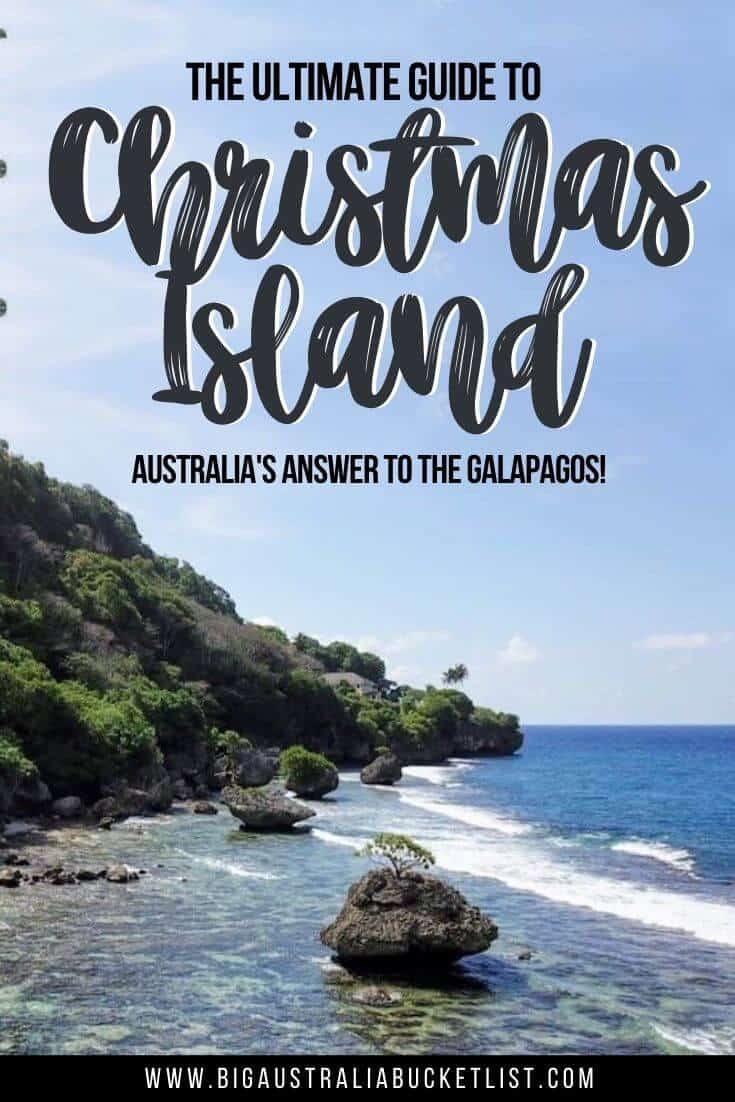
READY MORE TRAVEL INSPIRATION? YOU MIGHT BE INTERESTED IN THESE RECENT POSTS, TRAVEL ARTICLES, TRAVEL TIPS, DESTINATION GUIDES, TRAVELER RESOURCES, TRAVEL GEAR GUIDES AND RELATED POSTS ABOUT OTHER AMAZING PLACES AROUND AUSTRALIA:
- Test Your Aussie Knowledge: The Big Australia Quiz + 80 Facts About Australia everyone should know
- South Australia: Adelaide Travel Guide (Perfect for First Time Visitors)
- Australian Capital Territory: Top Things to do in the ACT
- Queensland: QLD Bucket List (inc. the some of the best spots on the East Coast Australia – think Gold Coast, Sunshine Coast, Airlie Beach, and the Great Barrier Reef)
- New South Wales: Top Things to do in Sydney, Best Places to visit in NSW (including the Opera House, Blue Mountains National Park)
- Victoria: The Ultimate Victoria Bucketlist, Melbourne Travel Guide (Perfect for First Timers) + Free Things to do in Melbourne
- General Australia Inspiration: 25 Best Places to Visit in Australia (inc. Alice Springs in the NT!) + 100+ Things to do in Oz

Hi There! Thanks for reading our guide to Christmas Island Travel Guide – The Ultimate Visitors Guide to this Incredible Island Paradise . I just wanted to let you know that this post contains affiliate links, which means if you purchase something after clicking a link, I may get a small commission – which is at absolutely no cost to you . If you enjoyed this article and are going to be searching for some of the things I mention anyway, I would love it if you could click through from the links above & thank you in advance! Read my full Disclosure here .
3 thoughts on “Travel to Christmas Island: A Complete Visitors Guide”
How to get Christmas island I am from India
Flight arrive into Christmas Island from Perth in Western Australia and from Jakarta, Indonesia so you would need to travel via one of these cities.
Best flight ever !
Comments are closed.
- GetInspired
As an Amazon Associate, I earn from qualifying purchases: “Big Australia Bucket List are participants in the Amazon Services LLC Associates Program, an affiliate advertising program designed to provide a means for us to earn fees by linking to Amazon.com and affiliated sites”
We acknowledge the traditional owners of the country throughout Australia and their continuing connection to land, sea and community. We pay our respect to them and their cultures and to the elders past, present and emerging.
Copyright © 2020-2022 Big Australia Bucket List . All Rights Reserved
- Search Please fill out this field.
- Manage Your Subscription
- Give a Gift Subscription
- Sweepstakes
- Destinations
A Guide to Vacationing on Christmas Island
...and why it should really be called Crab Island.
:max_bytes(150000):strip_icc():format(webp)/alex-schechter-author-pic-651b0cd898b347eeb531e559498d9b83.jpg)
There are a few immediate questions that come to mind when one learns about Christmas Island for the first time. For starters, where is it? Technically, it's a territory of Australia , but you'd never know from its location. Stuck way out in the middle of the Indian Ocean, The tiny island sits roughly 250 miles south of Central Java, and a whopping 1,650 miles from Perth, the nearest Australian city.
The island is ringed by 60-foot cliffs, broken intermittently by small beaches, coves, and enticing limestone grottos. Thalassophobes (people who are afraid of deep water) may want to avoid swimming out too far, because just a few hundred feet from the shore, the floor of the Indian Ocean drops three miles clean to the bottom. This geological quality is what makes it an especially good destination for swimming with whale sharks, but it is most famous for the incredible crab migration that takes place back on land. Although it may take a little more effort to get to, Christmas Island has a lot of rewards in store for the determined traveler.
A Bit of History
Christmas Island got its festive name from Captain William Mynors, an English seafarer who stumbled upon this unknown blip of land on Christmas Day in 1643. Culturally, much of the island's Chinese and Malay populations are descended from indentured servants who were brought there by the British in the 19th and 20th centuries to work the local phosphate mines. Brutal conditions led to many deaths, a history which is remembered at the Tai Jin House Museum.
Jungle Adventures
With its warm temperatures and high rainfall, Christmas Island is exceptionally conducive to fostering all sorts of wildlife. Nearly two-thirds of the island is designated as national park land, featuring well-marked trails that are highly popular with bird-watchers.
No matter where you end up in the jungle, you won't be short on sightseeing spots. Hugh's Dale waterfall is a stunner, and can only be reached by hiking through the rainforest. Like something out of J. R. R. Tolkien's Middle-earth, along the way you'll pass Tahitian chestnut trees with hulking buttress roots. You'll have to watch where you step, as the floor is littered with small crabs (this is their home, after all).
Once you arrive at the falls, go ahead and take a shower under the crashing water — not only is it clean enough to drink, it's held sacred by local Buddhists, who believe it's the center of the island's "water universe."
A Crab Phenomenon
Not only does Christmas Island boast the highest diversity — and density — of land crabs of any island in the world, it's also home to a staggering natural phenomenon. Each October, right after the start of the wet season, 120 million red crabs begin their sideways-tiptoeing journey from the depths of the forest out to sea.
As a result, huge tracts of the island appear to come alive with bright red, roving, shell-covered bodies. The sheer volume of crabs makes this a must-see event (certain roads are even shut down to allow safe passage for the crabs), and many refer to it as one of the world's natural wonders.
A Swim With Whale Sharks
Since the island is so small and has remained in its natural state for so long, all kinds of colorful fish can be found swimming around the island's narrow tropical reef. On a typical dive with Diving Christmas , you might find yourself swimming with the world's largest fish, the whale shark, which visits Christmas Island from November to March.
You'll likely also encounter all sorts of marine life: dolphins , manta rays, sea turtles, and over 88 species of coral. Over 64 diving sites can be explored near the island.
Where to Stay on Christmas Island
The Swell Lodge
With only 2,000 permanent residents on the island, facilities are somewhat limited. A small array of shops and restaurants are offered, but then again, people come more for the nature than the shopping. In the Settlement, the most populated area of the island, you'll have a few hotels and lodges to choose from, such as The Sunset , which is a basic lodge with comfortable enough amenities. If you travel further off the beaten path, you may want to wind up at the swanky eco-friendly Swell Lodge on the other side of the island. You could also opt for a vacation rental like this Balinese-style cottage . Wherever you stay, you will need a few nights booked, since flights arriving and leaving on Christmas Island only run a few times a week.
Getting to and Around Christmas Island
Christmas Island's airport code is XCH and you can get there via Perth, where Virgin Australia runs flights twice a week. The most important thing is to secure a rental car , since that's the main means of transportation around the island. Four-wheel drive vehicles can be had for around $65 per day and you can compare options on the official tourism website.
Christmas Island travel information
For more information visit the Christmas Island Tourism website .
Air services
Time difference, customs and immigration, importation of cats and dogs, information for visiting yachts.
The Australian Government, through the department provides significant investment in underwriting air services to the Indian Ocean Territories (IOT), as these services are not commercially viable.
Virgin Airlines operates an air service between Perth and Christmas Island. Refer to the Virgin Australia website for specific flight details.
Flights from Jakarta and Kuala Lumpur to Christmas Island also operate once a week. For more information please visit the Christmas Island Tourism website .
A freighter aircraft operates from Perth to Christmas Island and the Cocos (Keeling) Islands each fortnight on a Friday (see Services section below for freight arrangements).
Christmas Island is one hour behind Australian Western Standard Time (WST), and three hours behind Australian Eastern Standard Time (EST).
Daylight saving is not observed on Christmas Island.
Passports and visas are not required when travelling to Christmas Island from the Australian mainland. However, photographic identification, such as an Australian Driver's Licence or Proof of Age card, must be produced for each passenger (including children) for clearance through Customs and Immigration. A valid passport meets this identification requirement and is the preferred means of documentation to expedite passenger processing and provide passenger identification in the case of a flight diversion to another country.
Normal Australian Customs and Immigration procedures apply when entry is made from outside Australia. A passport is necessary and a visa may be required. Refer to your travel agent or the Department of Immigration and Border Protection for further details.
Duty free purchases may be made for travel to and from Christmas Island.
Christmas Island is home to some unique endemic species of wildlife. It is also free of many pests and diseases that are found in other parts of the world. The Department of Agriculture is the border agency charged with the task of protecting the environment and human health from pests or disease incursions. The Department's objective is to facilitate the movement of passengers, cargo, aircraft and vessels in a way that minimises any inconvenience to the people involved, while maintaining the quarantine integrity of the island. This is achieved through various reporting, screening, inspection and treatment mechanisms. Certain products are prohibited on the island while other items may require some form of treatment before they can be released.
Any person wishing to know more about the quarantine requirements on Christmas Island should contact the Indian Ocean Territories office on telephone: 08 9164 7456, fax: 08 9164 7468, mobile 0439 215 456 or email [email protected] .
The importation of dogs and cats into Christmas Island is prohibited by the Importation of Dogs and Cats Ordinance 1973 , due to concerns about environmental, social, cultural, animal health and welfare issues.
The Administrator has the discretion to approve the importation of a dog if it is an assistance animal. If a person wishes to import an assistance animal, an application in writing can be made to the Administrator of the Territory of Christmas Island at PO Box 868, Christmas Island Indian Ocean WA 6798.
The Shire of Christmas Island has a local law in respect of dogs and cats. Further information may be obtained from the Shire of Christmas Island's website or by phone 08 9164 8300.
Accommodation
A range of hotel and self contained accommodation is available on Christmas Island. Details and bookings are available through the Christmas Island Tourism website or by email at [email protected] . It is highly recommended that bookings be made prior to arrival on the island.
Restaurants, bars and shopping
There are a number of restaurants, cafes and bars on the Island offering a range of dining experiences including western, Malay and Chinese cuisine.
Christmas Island is serviced by small shopping areas located at the Barracks and Temple Court in Settlement, Poon Saan, the Kampong, Drumsite and the airport. The range of goods is not extensive and includes general groceries, clothing, sporting goods, souvenirs, photography supplies, electrical goods, furniture and whitegoods. There is also a newsagency and chemist on the Island. It is advised that you bring a sufficient supply of certain personal goods such as prescription medicines.
Westpac Banking Corporation has a branch on the island offering full banking services including foreign currency exchange. The Christmas Island Post Office is also a Commonwealth Bank agency and provides services for many banks including Citibank, Statewest, Bankwest, Metway, Hong Kong Bank of Australia and Adelaide Bank. EFTPOS and credit card facilities are also available as well as cash advances from credit cards of up to AUD$800 per day.
There is one generic Automatic Teller Machine (ATM) on Christmas Island.
Postal services
The department provides significant investment in underwriting air services to the Indian Ocean Territories (IOT), as these services are not commercially viable.
Through this investment, mail to the IOT can be uplifted via five air services provided per fortnight, including a twice-weekly Regular Public Transport (RPT) service, and a dedicated fortnightly air freighter service.
Australia Post and its licensees are responsible for the delivery of mail to the IOT and meeting customer service requirements for mail.
Freightshop coordinates the delivery of air freight to the IOT, including mail lodged with Australia Post, in consultation with Virgin Australia Regional Airlines (VARA) and Toll Logistics.
It is important to understand that cargo space on the RPT services is limited, with passenger numbers, excess baggage, runway conditions and weather at all airports (including alternate airports) impacting on the amount of freight that can be uplifted.
Air freight is prioritised according to the following categories based on the critical nature of the goods:
- Category 1 – Aircraft on Ground Spares
- Category 2 – Life-Saving Medical
- Category 3 – Perishables
- Category 4 – Australia Post Mail
- Category 5 – Priority General Cargo
- Category 6 – General Cargo
In the event that air freight, including mail, cannot be uplifted due to capacity constraints, goods will generally be transported on the next available flight.
Any queries about mail deliveries should be referred to Australia Post.
For additional information regarding air freight uploads, including lodgement times, please contact Freightshop at [email protected] , or on 08 9477 6088.
Fact Sheet PDF: 167 KB
The Post Office provides full postal and philatelic services, including special Christmas Island stamps and first day covers. Postal services to Christmas Island are weekly. Envelopes and Express Post Packages will be sent by air. All other post, including airmail packages, will be sent via seamail which may take up to two months for delivery. For further information you may contact the Christmas Island Post Office on 08 9164 8495 or [email protected] .
Freight to Christmas Island may be sent by air or sea. Air freighter services depart from Perth, every fortnight. Sea freight is from Fremantle, Western Australia every four to six weeks.
For further information:
- Air freight bookings and enquiries refer to freightshop.com.au/
- Sea freight bookings and enquiries refer to zentnershipping.com.au/
Passenger transport services and car hire
A number of car hire companies operate on Christmas Island and can provide standard cars and four wheel drives. Pickup and delivery can be arranged from the airport. A passenger transport service is available for shorter trips and sightseeing. Bookings in advance are advised and can be arranged through Christmas Island Tourism .
Telecommunications
Christmas Island receives the standard digital television channels from Western Australia. Radio 6RCI is the local radio station, transmitting on 105.3FM from Rocky Point and 102.1FM from Drumsite. Transmissions are in English, Malay and Chinese. Christmas Island also receives Red FM—a commercial station based in West Australia as well as ABC Radio and JJJ FM.
Christmas Island has full STD access by phone or fax to and from the Australian mainland. The area code is +61 8 international or 08 domestic. Public phones are available at various locations across the Island. The Telstra GSM mobile network operates on Christmas Island. Phones, SIM cards, mobile accessories and phone cards may be purchased on Island. Contact IOCOMM Technologies on 08 9164 8505 for further information.
Fax and other business services are available through the Post Office.
Internet and other services such as photocopying and printing are available at the Christmas Island Visitors Information Centre.
Electricity
Electricity (consumer voltage 240V 50hz) is generated by diesel plants in the power station located on the island, and is operated by the Indian Ocean Territory Power Authority.
Water is pumped from underground sources. The water supply is managed and maintained to Australian Standards by the Water Corporation under contract to the Department of Infrastructure, Transport, Cities & Regional Development.
Australian Government information including Community Bulletins, Updates and Media Releases can be found here . The Shire of Christmas Island produces a fortnightly newsletter, The Islander, which is available from various shops on the Island.
There is a wide range of recreational activities and facilities available on the Island for visitors and residents alike. The Christmas Island Visitors Information Centre can provide information on the activities and facilities. Notices of events are posted in the local Newspaper, The Islander, and on the blackboards at the Roundabout.
Christmas Island National Park covers approximately 63 per cent of the Island and contains large tracts of tall rainforest, beaches, caves, freshwater streams and waterfalls as well as rare plants, bird life and other wildlife. A Visitor's Centre is operated by Parks Australia at Drumsite where advice on plants, wildlife and sightseeing is provided. The park is accessible by road and there are many walks along boardwalks or tracks. Guided tours are also available.
Spectacular fish, corals, rock formations and caves provide exciting snorkelling and diving opportunities on Christmas Island, from both the shore and by charter boat. The famous migration of large numbers of red crabs occurs between October and January each year. Whale sharks are also seen at this time. There are many vantage points to watch birds, some unique to Christmas Island, such as the Christmas Island Frigate Bird and the majestic Golden Bosun.
A recreation centre at Phosphate Hill provides a modern swimming pool, gym and sports hall. A crèche and café also operate at the centre. Golf can be enjoyed at the Christmas Island Golf Club. For more information visit the Christmas Island Tourism website .
The outdoor Cinema operates every Saturday Night at Poon Saan, even when it is raining. Check the blackboard or The Islander for the week's movie.
Many events are held throughout the year to celebrate the varied cultural aspects of Christmas Island such as Australia Day, Chinese New Year, Anzac Day and Territory Day. Visitors are welcome to join these celebrations and details are available through the Christmas Island Tourism website .
The relaxed attitude of the islands is reflected in the casual attire worn by residents and visitors. Business dress is smart casual. A hat, sunscreen and insect repellant is recommended when outdoors, and strong walking shoes are necessary for the jungle. Reef shoes or sandshoes should also be worn near the water to avoid injury from stone fish and coral.
When visiting the Kampong, appropriate attire should be worn to respect the Islamic community. Women and men are asked to wear modest outfits which cover the shoulders and upper legs.
Special vaccinations and medications are not required for travel to Christmas Island.
It is important to ensure that supplies of personal medications are brought for the duration of intended travel, as supplies of special medication may be limited and could take up to a week to obtain. Pharmaceuticals and general supplies are available from the chemist.
A small hospital operates on Christmas Island providing essential health services. People sustaining serious illness or injuries may be sent to Perth for treatment. It is important for people to check their health and travel insurances when planning a trip to Christmas Island.
Christmas Island is located in the Indian Ocean at latitude 10°30' south and longitude 105°40' east.
Christmas Island welcomes visiting yachts. Moorings, water and bathroom facilities are provided at Flying Fish Cove.
On or before arrival please contact Customs and Immigration on 08 9164 7228 or VHF channel 16 or 82 (local repeater system), tie up to an available mooring and display the yellow quarantine flag.
To avoid damage to coral, anchors must not be dropped in Flying Fish Cove. It is necessary to clear quarantine, Customs and Immigration before disembarking.
There is a small charge for mooring. For further information contact the Harbour Master at [email protected] , VHF channel 16 or 82 or phone 08 9164 8434.
Fuel is available by contacting Gaseng Petroleum on 08 9164 8313 or 0439 215 058.
Further information may be obtained from the following organisations.
Department of Infrastructure, Transport, Regional Development and Communications 111 Alinga Street CANBERRA ACT 2601
GPO Box 594 CANBERRA ACT 2601
Switchboard: +61 2 6274 7111 Media enquiries: 1300 732 749 or [email protected]
Department of Infrastructure, Transport, Regional Development and Communications Christmas Island PO Box 868 Christmas Island INDIAN OCEAN WA 6798 Phone: 08 9164 7901
Office of the Administrator PO Box 868 Christmas Island INDIAN OCEAN WA 6798 Phone: 08 9164 7960
Christmas Island District High School PO Box 866 Christmas Island INDIAN OCEAN WA 6798 Phone: 08 9164 8546 Fax: 08 9164 8544 Email: [email protected]
Christmas Island Tourism PO Box 63 Christmas Island INDIAN OCEAN WA 6798 Phone: 08 9164 8382 Fax: 08 9164 8080
Indian Ocean Group Training Association PO Box 457 Christmas Island INDIAN OCEAN WA 6798 Phone: 08 9164 7220 Fax: 08 9164 7129
Indian Ocean Territories Health Service PO Box 865 Christmas Island INDIAN OCEAN WA 6798 Phone: 08 9164 8333 Email: [email protected]
Virgin Australia Airlines Australia: 13 67 89 New Zealand: 0800 67 0000 Other International Locations: +61 7 3295 2296
Christmas Island National Park - Parks Australia PO Box 867 Christmas Island INDIAN OCEAN WA 6798 Phone: 08 9164 8700 Email: [email protected]
Shire of Christmas Island PO Box 863 Christmas Island INDIAN OCEAN WA 6798 Phone: 08 9164 8300 Fax: 08 9164 8304 Email: [email protected]

Christmas Island Travel: A First Timer’s Guide
Christmas Island is a remote, dog-shaped tropical island located 1550 kilometers northwest of the Australian mainland and south of Java. It is an Australian external territory, also called “ Galapagos of the Indian Ocean ”. 2/3 of the island is covered by a National Park so it is a gorgeous destination to visit for a remote feel where you are surrounded by breathtaking nature, friendly locals and unique sights. The easiest way to get here is from Jakarta, Indonesia (it only takes a 45 minute plane ride).
Now you may be wondering where Christmas Island got its name…when new territories were being discovered, it was not uncommon for territories to be named after the day they were first sighted. Christmas Island is one of those territories, named on Christmas Day, 1643 by an English sea captain.

How to get to Christmas Island
Christmas Island is part of Australia and is far removed from the standard travel and tourist track. There are flights only from Australia and Indonesia to arrive here and only three airlines service the Island, including Virgin Australia, Garuda and Malindo Air.
Since Christmas Island is an external territory of Australia, the same immigration rules apply to as they do for Australia. Therefore you will need to get a visa before your departure. You can request a visa for Australia online on websites like auvisa.org .
What to do on Christmas Island
- See the red crabs
To see the annual crab migration on Christmas Island is an incredible experience. It is said to a be a ‘natural wonder’ as 60 million red land crabs make their way to the coast.. and it is something you can only see on Christmas Island. It is one of the main yearly attractions on Christmas Island and generally happens in October or November.
- Diving and snorkeling
Diving and snorkeling are popular activities on the island, as it has over 60 dive sites and clear warm waters all year long. You can see over 575 species of tropical fish and experience the underwater world unique to the Christmas Island area.
- Boulder Track
To get to the center of Christmas Island National Park, take the Boulder Track for a walk and incredible viewpoints.
- Accommodation options
There are various types of accommodation you can find on Christmas Island. Flying Fish Cove is the largest settlement in the region with approximately 1600 inhabitants (about a third of the population on the island). It is here that you
Swell Lodge is a secluded eco-chalet with stunning views as it has the forest on one side and the ocean on the other.

- Bird Watching
On Christmas Island you can see a number of beautiful and rare birds, including golden bosuns, frigatebirds, red and brown-footed boobies and more. If you are already a bird lover, each September there is the Bird’n’Nature Week hosted on the island that is a major draw for people from all around the world. Margaret Knoll is another great spot for bird watching.
Other helpful information for Christmas Island
- How to get around the island
The best (and really) only way to get around Christmas Island is by car since so much of the island is covered by the Christmas Island National Park. You can rent a car from the airport where you will land. There is also no public transportation, but this just adds to the charm of visiting a remote place.

The Aussie Dollar is the local currency on Christmas Island and cash is very much so appreciated here.
- Where to Eat
There are a few lovely bistros and cafes spread around the island, however keep in mind that this is a remote place and fresh fruit and vegetables come with a price. Our advice is to pack some things along with you, especially if you are a foodie and can not live without your favorite snacks for a few days.
Related Posts
10 mistakes to avoid before airport arrival, asia calling: cultural getaways to visit in 2024, how gen z college students are pioneering sustainable travel education, write a comment cancel reply.
Save my name, email, and website in this browser for the next time I comment.
Type above and press Enter to search. Press Esc to cancel.
- Skip to primary navigation
- Skip to main content
- Skip to primary sidebar
- Skip to footer
TravelAwaits
Our mission is to serve the 50+ traveler who's ready to cross a few items off their bucket list.
7 Fantastic Reasons To Visit Gorgeous Christmas Island

Christmas Island Tourism Association
- Australia and South Pacific
- Christmas Island
- Destinations
Like King Kong’s Skull Island, Christmas Island is the land time forgot. Uninhabited for thousands of years, Christmas Island became an Indian Ocean Galapagos. There are species here you won’t find anywhere else in the world.
Christmas Island is in the Indian Ocean closer to Indonesia than mainland Australia. Despite the location, Christmas Island is an Australian territory reachable on a three-and-a-half-hour flight from Perth.
The island came into being when the peak of a steep basalt volcanic seamount rose over three miles from the ocean floor about 60 million years ago.
Captain William Mynors named Christmas Island on Christmas Day in 1643 from aboard an East India Company vessel. But steep cliffs and impenetrable jungle continued keeping the world at bay.
When rich deposits of phosphate were discovered there in the late 19th century, Britain annexed the island. Soon after, the Christmas Island Phosphate Company brought in Chinese indentured laborers, Sikh overseers, and a small number of Malays — the beginning of the island’s diverse cultural mix.
Even today, the 50-square-mile tropical island remains unspoiled by mass tourism . Tracks and trails reach the most spectacular locations, but the island is still covered by tropical rainforest, two-thirds of which is a national park .
Christmas Island is the place to swim with whale sharks, bathe under waterfalls, snorkel in clear waters, and spot rare birds. And for anyone fascinated by crustaceans, you have found crab heaven.

skyfall4 / Shutterstock
1. Crabs Cross Here: The Sight Of A Lifetime
Nature documentaries recording Christmas Island red crab migration have captured the imaginations of people worldwide. David Attenborough described the experience as one of the most memorable of his life’s work. There are around 45 million red crabs on Christmas Island, all fire truck red and around 4.5 inches wide. Imagine the start of the wet season in late October and November when they march like a red army from the jungle — trekking several days to mate on the beach. Locals protect them on the roads as best they can; keeping rakes or brooms in their cars for gentle sweeping out of harm’s way. So much kinder than the sickening crunch. Some roads are closed to allow safe passage. Where they remain open, rangers place railings along the edges, funneling millions over the overpasses built specifically for them. They climb up and over like soldiers scaling obstacle courses. Not surprisingly, these bridges are a huge hit with tourists.
The female crabs stay in their burrows for a couple of weeks. Then, they spawn en masse — dropping their eggs into the water where the larvae develop. In February they hatch, and tens of millions of baby crabs crawl toward the jungle, creating a moving crimson carpet that blankets streets, the golf course, and anyone’s shoes that happen in their way. Wise locals seal up door openings.
If you visit outside these migration times, there are still plenty of crabs to see. Christmas Island has 20 species of land crabs and you become strangely accustomed to their presence. They include the Christmas Island blue crab — with its striking blue hues — and the coconut crab, the largest land-living arthropod in the world, also known as the robber crab. Watch out for your camera . They love carrying off shiny objects.

2. Enjoy Mother Nature’s Outdoor Spa
No need for expensive spa treatments on this holiday. Christmas Island offers a variety of “treatments” for free. After a forest boardwalk in a tropical dale, immerse yourself under rainforest falls at Hughs Dale Waterfall — the ultimate Vichy shower. Dip in the Grotto with a pure white sand base and crystal blue water. The ocean swirls to meet a subterranean freshwater stream with you in the center. Enjoy nature’s flotation tank. With its much higher roof. Climbing in is tricky. But worth it if you can. Cool off at the Blowholes . Waves crash at the base of a honeycomb of eroded cliffs — forcing seawater high in the air. There’s a loud whoosh and eruptions like a windpipe of volcanoes venting steam. This drifts toward you as a delightful cool mist. A spa might call it a hydration therapy. Bathe in natural infinity pools and a spa carved by nature. Waves crash over tiered rock pools, spilling over edges like miniature waterfalls. This ocean spa is close to Swell Lodge — a new, upmarket eco-lodge where guests even have their own chef.

KiltedArab / Shutterstock
3. For Glorious Deserted Beaches
Christmas Island offers many beaches where you can relax or frolic in the shallows. Experts voted Dolly Beach the seventh best beach in Australia in 2016. After a scenic 1.2 mile boardwalk, you are greeted with a scene from Robinson Crusoe . Palm trees angle over pure white sands lapped by turquoise water. Man Friday left no footprints, but plodding turtles have. While secluded, I wouldn’t swim naked. It’s not allowed , for a start, and a robber crab might just steal your clothes.
Another boardwalk runs between Lily Beach (a tidal rock pool for swimming) and Ethel Beach (a great place to view fossils). The blowholes are along this stretch. Most of Christmas Island’s 50-mile coastline is dominated by sea cliffs — the gaps creating hidey-hole beaches waiting to be discovered. Merrial Beach is so tiny it disappears at high tide. It’s much loved by photographers who trek out for the perfect shot of white sand and blue ocean framed by rock formations.
For serious swimmers, the southern end of Flying Fish Cove offers a protected ocean setting.

4. To Explore An Underwater Paradise
Instead of traveling miles out by boat to see coral, Flying Fish Cove offers world-class snorkeling a few feet from shore. A narrow fringe of reef encircles the island and is home to 88 different species of coral and 600 colorful species of tropical fish. It’s a magical world of sea urchins, clams, and darting arrows of fish — and a chance to see turtles, manta rays, giant trevally, lionfish, and spinner dolphins.
The island rises dramatically from the edge of the Java Trench, the Indian Ocean’s deepest point. So even 20 yards out, serious divers can enjoy spectacular wall dives and larger fish. Between October and January, this includes whale sharks, the world’s largest fish. They can grow the size of a school bus with mouths more than three feet wide. These gentle giants feed on plankton, so it’s safe to swim with them. They arrive seasonally to feed off the billions of larvae released during red crab spawning.
Christmas Island has more than 60 dive sites. There are wall and reef dives, underwater caves, hybrid fish, and unusual species rarely found elsewhere. Wet n Dry Adventures is a family business operating since 1994 and Extra Divers is a global brand that offers diving experiences. With excellent visibility and warm water, Christmas Island is an ideal place to gain diving certifications.
Christmas Island is also an important fishing destination, offering everything from dropping a line off the jetty at Flying Fish Cove to deep-sea game fishing . Giant trevally, wahoo, yellowfin, and dogtooth tuna are some of the larger species.

5. For A Twitching Good Time
Everyone becomes a birdwatcher (a twitcher) on Christmas Island. Birds are everywhere. The terraced island is a tropical seabird rookery, with around 80,000 seabirds nesting here each year. A short drive through plateau forest leads to the boardwalk at Margaret Knoll Lookout where many of Christmas Island’s varied bird species soar past at eye level showing off their aerial acrobatics. You’ll see golden bosuns with yellow plumage and dive-bombing frigatebirds. Male frigates have throat pouches. They inflate their pouches during mating season to attract females. These look like huge red balloons. There are many red-footed and brown boobies. There’s even a good chance to see a rare Abbott’s booby ; they nest nowhere else on Earth. These crazy-looking creatures have huge webbed feet (imagine birds wearing colorful flippers) and can perch firmly onto anything. They hold no fear of humans. You can get close for some great photographs. At National Park Bird Feeding , watch volunteers feed rescued Christmas Island birds. Birdwatchers come to Christmas Island from all over the world either independently or on bird watching tours.

6. For Melting Pot Flavors And Cultures
Christmas Island has a harmonious blend of Buddhist, Christian, Taoist, and Muslim residents. Of the 2,000-strong population, some are also from mainland Australia.
Expect Taoist temples and shrines overlooking the ocean, and a shining mosque in Kampong, the island’s traditionally Malay neighborhood.
Ethnic diversity means surprising food finds. Head to the Idah Kitchen at the Malay Club for a traditional breakfast of noodles, laksa, or Hainanese chicken rice washed down with teh tarik — tea with condensed milk. Lucky Ho serves Sichuan classics and dragonfruit slushies. The Chinese Literary Association spices up life with Asian fare. Rumah Tinggi Bar and Grill is home to excellent tapas and sundowner drinks with clifftop views. Golden Bosun Tavern offers good pub grub. It is also the place to chat with the locals over a beer and sunset views.
Seafood is plentiful, but crabs are protected and off the menu. Eating out is more expensive than at home as the soil lacks nitrates so fresh produce is mostly freighted in. But as a tax-free zone , alcohol is some of the cheapest in Australia.

Emma Jones / Shutterstock
7. History Buffs Won’t Be Disappointed
Christmas Island has a fascinating, if harsh, cultural history. Early phosphate mineworkers were treated cruelly and died in the hundreds. During WWII, islanders were shipped to Japanese prisoner of war camps in Indonesia after they sabotaged the mine. A strong Union of Christmas Island Workers was necessary to improve living and working conditions on the island. And Christmas Island has at various times been the contentious site of an immigration detention center. Tourists can find out more about Christmas Island’s history at Tai Jin House , where a historical exhibition tells the full story (open daily 12 p.m. till 3 p.m.) or by chatting with long-term locals. With scaling back phosphate mines, ecotourism on Christmas Island is set to boom. Don’t expect a tropical resort, but your forays into nature will be unforgettable.
Christmas Island is safe. There are walking trails and boardwalks to suit all fitness levels. But follow hiking guidelines . Personal Locator Beacons are available from the Christmas Island Police Station.
You need a 4WD vehicle to reach some attractions. Collect from the airport. Or tours are available .
Not all accommodation is advertised online . Contact Christmas Island Visitors Centre for additional recommendations.
With incredible wildlife and scenery, and opportunities for underwater photography, there’s a number of photography tours .
Visiting Christmas Island is often combined with a trip to Cocos (Keeling) Islands — another Australian territory and a tropical paradise. In normal times, flights operate from Jakarta as well as Perth .
Looking for more travel inspiration? Here’s why Australia’s outback or rainforest should be on your bucket list.
Editor’s Note: The ideas about Christmas Island presented in the first paragraph of this article are inspired and informed by “ Close encounters on Christmas Island, Australia’s own Galapagos ,” an article published by the Christmas Island Tourism Association.

Nadine Cresswell-Myatt of Red Bag Will Travel took her first plane trip at age eight. This would not be so unusual except she was flying solo and had never seen a plane before: what were her parents thinking? This adventure set her course for life. For over 25 years, she has crafted stories about her travel adventures for newspapers, magazines, and online travel sites, as well as training others how to do the same. You can follow her international travel on Instagram or read about her Australian jaunts at WeekendNotes . Yes, she’s an Aussie, but with children and grandchildren around the globe and her ability to travel with only a red carry-on bag, you might just find her popping up anywhere. And she still travels solo.
- Compare Flights & Hotels via TRAVELDESCRIBE
- Find Cheap Flights via Skyscanner
- Find Hotels via Booking.com
- Find Hostels via Hostelworld
- Rent a Car via Discover Cars
- Find Trains & Buses via Omio
- Book taxi Transfers via KiwiTaxi
- Find Things to Do via Viator
- Find Ticket Deals via GetYourGuide
- Find Travel Insurance via Insubuy
- Destinations
- Places to Go
- Things to Do in 2024
- Deals & Discounts
- North America
- South America
- Cheap Flights in 2024
- Top Hotels and Resorts in 2024
- In February
- In September
- In November
- In December
- World’s Best Places to Visit
- Best Countries to Visit in 2024
- Travel Tips

- Inspiration
- Things to Do
- Budget Travel

- Cheap Flights
- Hotels & Resorts
- Travel Guides
A Guide to Vacationing on Christmas Island
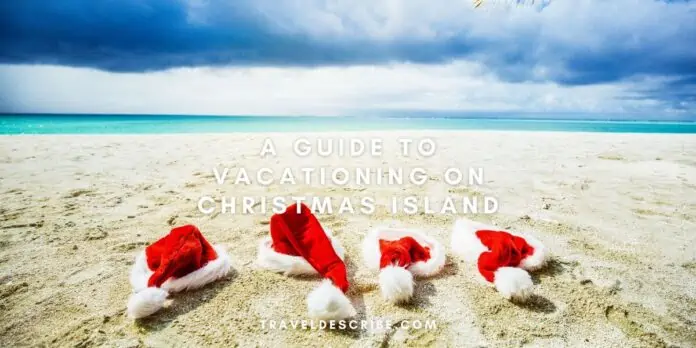
Whether you’re planning a honeymoon or a family vacation, you’re sure to find your perfect spot on this beautiful island. From the white sand beaches to the bird watching, there’s something for everyone!
Dolly Beach
Located in the Indian Ocean, Christmas Island is an Australian Territory. It is a volcanic island that rises to the central plateau of rainforest, which gives way to small beaches. It has a unique ecosystem that provides habitat for many bird and marine species.
Dolly Beach, a secluded beach on the island, is a great place to see marine turtles lay their eggs. It is also a great place to snorkel. In addition to the beach, the surrounding area offers shallow rock pools and a freshwater creek.
There are a variety of activities to enjoy on Christmas Island. You can swim, snorkel, climb, hike, and visit the Christmas Island Visitors’ Information Centre. There are also several hiking trails, including the one leading to Hugh Dale waterfall.
Christmas Island is also a great destination for bird watching. The area has over 80,000 seabirds nesting annually. You can also see over 100 vagrant species. The golden form of white-tailed tropic bird, known locally as the “golden bosun,” is one of the island’s most iconic birds.
For snorkelers, muck divers, and visitors looking for something a little more adventurous, you can visit the Christmas Island’s underwater paradise, the Sunda Trench. This is the deepest point in the Indian Ocean. This is also a great place to see hammerhead sharks. These sharks are usually only 5-30 meters offshore.
The red crab migration is a very popular attraction on Christmas Island. Millions of red crustaceans move to the beaches during the wet season. You can also see giant robber crabs.
If you’re planning a trip to Christmas Island, it’s a good idea to rent a car. You can get a four-wheel drive vehicle for $60 per day. However, caution should be taken in areas where the roads are not paved. You should also obtain a personal locator beacon from the local police station. It’s best to do this when you travel to remote areas.
Christmas Island is home to a variety of wildlife, including the golden form of white-tailed tropic birds, the twitchers of Christmas Island, and the kingfisher. It’s also home to a large number of coral reefs.
Scuba diving
During your scuba diving vacation on Christmas Island, you’ll have the chance to see dolphins, spinner dolphins and whale sharks. This is one of the most exciting places in the world to dive.
Christmas Island’s coral reefs are home to over 600 species of fish. They also have a huge underwater kelp forest, octopi and lobsters. The reefs are surrounded by steep sided walls that allow deep water pelagics to reach the shore.
Christmas Island is home to some of the best scuba diving in Australia . The waters surrounding the island are so clear that you’ll be able to see underwater at least 60 feet. The water is also warm and clear, with temperatures ranging from 26-29degC.
The reefs on Christmas Island are some of the most beautiful in the world, with an incredible variety of corals. You’ll also find a variety of species of sharks, including scalloped hammerheads, whitetip reef sharks, tiger sharks, and spinner dolphins.
There are many different dive sites on Christmas Island. Some of the most popular include Thunderdome Cave and Blowholes Cave. You can also take a trip to Daniel Roux Cave, which is accessible via Smith Point.
You’ll find a variety of corals, including gorgonian corals, soft corals and feather stars. You’ll also see some species of sharks including tiger sharks, scalloped hammerheads, and manta rays. You’ll also find hawksbill turtles nesting on the island.
Christmas Island is known for its endemic species, including the Christmas Island Hawk-owl and Christmas Island Emerald Dove. The island is also home to endangered species.
Christmas Island is also known for its limestone caves. These caves feature impressive stalactites. You can also find a variety of grottos on the island. You’ll also find trails that lead to caves, waterfalls, and deserted beaches. You’ll also find trails that lead through the tropical rainforest.
Christmas Island is also known for its spectacular drop-off diving. The drop-off on Christmas Island is one of the longest in the world, dropping hundreds of meters down to the ocean floor.
There are a variety of dive sites on Christmas Island, including the Flying Fish Cove, which is one of the best shore dives in the world. You’ll also find a number of caves, including Thundercliff Cave.
Fly-fishing
Whether you are looking to catch the big one or a quick trip to get away from the cold, Christmas Island offers a host of saltwater species. From triggerfish to wahoo and milkfish to tuna, this remote island has it all.
Christmas Island is home to numerous species of trevally. This saltwater fish species is also known as the Bluefin Trevally. Using the right fly can produce a spectacular catch.
Another big fish is the bonefish, which averages 2-4 pounds. These bonefish feed on crabs and crustaceans. They chase the angler and can engulf a fly.
One of the most interesting aspects of fly-fishing Christmas Island is the diversity of fish. Whether you are after the elusive Golden Trevally, or the more common Bluefin Trevally, a well placed fly can produce a monster.
Fly fishing Christmas Island is not for the faint of heart. The roads are rough and the maintenance is minimal. This means that you will be traveling by boat or truck. Each vehicle has bench seats and rod storage.
Christmas Island is a year round fishing destination, with consistent weather year round. Fishing traffic increases in the summer months and decreases in the winter. A fly fishing trip to this island is a great way to spend some time away from the cold.
Christmas Island Outfitters offers the best angling experience on Christmas Island. Their rooms are clean and feature ample space for gear. Their guides speak English fluently and have a knack for spotting fish. They are also highly experienced and have mild temperaments during high pressure sight fishing.
Another excellent option for fly fishing Christmas Island is the Christmas Island Bonefish Club. The Bonefish Club limits their program to just eight anglers a week. This allows the club to maintain a flexible flats fishing program. The best time to visit is in the Spring and Fall months, when fewer anglers are on the flats.
The Christmas Island Special is a go-to pattern for this remote fish paradise. This shrimp pattern is available in a variety of colors. It also has a crystal flash on its body.
Located in the Indian Ocean, Christmas Island is a tiny territory of Australia. It is 2600 kilometers northwest of Perth. It is surrounded by a narrow tropical reef, making it a great place to snorkel. It is also home to many endemic species.
Christmas Island is a great place to spot native birds. They can be found in the rainforests, along beaches and in populated areas. There are numerous endemic birds on the island, including the Christmas Island Hawk Owl.
A unique species that is found only on Christmas Island is the Abbott’s Booby. This bird nests in the tall emergent trees of the western plateau rainforest. It is one of the world’s rarest birds. You can find the booby on the LB4 lookout or around the Murray Road.
Christmas Island is also home to the Blue-tailed Skink, which numbers have been in decline in recent years. It is possible to see these skinks on a self-guided kayak adventure. You may also see whale sharks on an opportunistic basis.
Christmas Island is a great place for snorkeling. The reefs are home to over 90 species of coral. They are also home to surgeonfish, parrotfish, and other marine life.
Christmas Island is also home to a variety of marine life, including whale sharks and manta rays. You can also spot reef sharks on an opportunistic bases. It is also possible to see dolphins.
Christmas Island is also home to the Christmas Island Hawk Owl, a rare raptor that is a threatened species. It can be found at Tai Jin House and around Flying Fish Cove. You may also see the Christmas Island Flying Fox flying during the day.
Christmas Island is also home to many endemic species, including the Christmas Island Hawk-owl, Christmas Island Goshawk, Christmas Island Emerald Dove, and Christmas Island Thrush. It is also home to the rare Christmas Island Red-footed Booby.
Christmas Island is also known for its unique and spectacular coral reefs. These reefs are home to 650 species of fish. It is possible to snorkel through the reefs, which offer incredible drop-offs and abundant marine life.
LEAVE A REPLY Cancel reply
Save my name, email, and website in this browser for the next time I comment.
To be updated with all the latest Travel Guides & News, offers and special announcements.
West Attica – Experiences in Megara and the Slopes of Kitheron
Best Family Spring Break Destinations
Copenhagen’s Tivoli Gardens Has the Best Christmas Lights in All of Europe
Travel to Slovakia – The Ultimate Slovakia Travel Guide in 2024
Travel to Belgium – The Ultimate Belgium Travel Guide in 2024
Travel to Denmark – The Ultimate Denmark Travel Guide in 2024
With TravelDescribe.com you’ll get low prices and flexible booking options. Search and book now. Never miss a cheap flight or accommodation deal again.
The cheapest flights with the best offers,deals and to get your trip going your own way, you can find them at Aviasales, Trip.com, CheapFly365 and Skyscanner.
If you want to enjoy your stay and feel like home, you can find out exactly what you're looking for at Hostelworld, Booking.com, and Hotellook. You will certain get the best prices for your accommodation.
If you choose to have the best guidance for your trip, then Viator, Get Your Guide and TripAdvisor are what you' re looking for. You will find all the suggestions for activities, food, drinks and entertainment.
A great choice, if you want to be informed and get online tickets for your trip, is Omio, 12Go and KiwiTaxi.
You can trust the Discover Cars for your ideal transportation.
Insubuy is a great choice if you want to get the best insurance for your trip.

It may be difficult to decide which is the best destination for you, but the TravelDescribe will keep you on track. Here's how to make your trip even easier. There are many free online resources that can help you plan your dreamy trip and make the experience more enjoyable. TravelDescribe.com will always keep you up to date about the cheapest flights and hotels in the World. The best travel guide by my experience as a World Traveler.
- Cookie Policy
- Terms and Conditions
- Affiliate Disclaimer
- Advertise with Us
Travel to Iceland – The Ultimate Iceland Travel Guide in 2024
Travel to the Netherlands – The Ultimate Netherlands Travel Guide in 2024
Travel to Greece – The Ultimate Greece Travel Guide in 2024
Travel to the United Arab Emirates – The Ultimate UAE Travel Guide in 2024
Travel to Italy – The Ultimate Italy Travel Guide in 2024
© 2023 TRAVELDESCRIBE.COM. All Rights Reserved.
Privacy Overview
- Blue Mountains
- Central Coast
- Central West & Orange
- Lord Howe Island
- Hunter & Mid-Coast
- Lake Macquarie & Newcastle
- North Coast
- New England & North West
- Outback NSW
- Riverina Murray
- Snowy Mountains
- South Coast
- Southern Highlands & Tablelands
- Daylesford & Macedon Ranges
- Geelong & The Bellarine
- Great Ocean Road
- Victoria’s High Country
- Mornington Peninsula
- Phillip Island
- Yarra Valley & Dandenong Ranges
- Outback Queensland
- Southern Queensland
- Sunshine Coast
- Tropical North Queensland
- Whitsundays
- Coral Coast
- Margaret River & South West
- The Kimberley & North West
- Eyre Peninsula
- Fleurieu Peninsula
- Flinders Ranges & Outback
- Kangaroo Island
- Limestone Coast
- Yorke Peninsula
- Katherine & Surrounds
- Alice Springs & The Red Centre
- Arnhem Land
- Hobart & South
- Launceston & North
- North Island
- South Island
- Cook Islands
- New Caledonia
- Philippines
- Switzerland
- United States
- Aboriginal Culture
- Arts & Culture
- Beach Lifestyle
- Eat & Drink
- Nature & Parks
- Adventure & Sports
- Canyoning & Abseiling
- Climbing & Bouldering
- Dog Friendly
- Gravel & Bikepacking
- Kayaking & Paddling
- Mountain Biking
- Skiing & Snowboarding
- Skills & Safety
- Snorkelling
- Trail Running
- Wild Swimming
- Microadventures
- Multi-day Hikes
- Comparisons
- Gear Guides
- Photo Essays
A regular dose of adventure inspiration, trip ideas, latest events and giveaways.
Christmas island: an adventure guide to one of australia’s most distant islands.
Benjamin Wiesner
Growing up, Ben never really spent a holiday at home but instead explored a multitude of countries. When he's not studying the wonders of our environment at Uni, he's out there for some more practical experience. Doing that, he always seeks to go somewhere new and he's not afraid to fight the elements.
- Author Profile
Learn about We Are Explorers' Editorial Standards
You might only know Christmas Island for its road-crossing red crabs, but it’s so much more than that. After three months of living on the island, Benjamin is spilling all the secrets on how to have an unforgettable adventure.
Jump to Section
Quick overview.
Christmas Island is its own territory located 350km south of Java and 2,600km north-west of Perth . It is home to a multicultural community of 1,700 people and features stunning cliffs, beaches, coral reef, and an ancient rainforest.
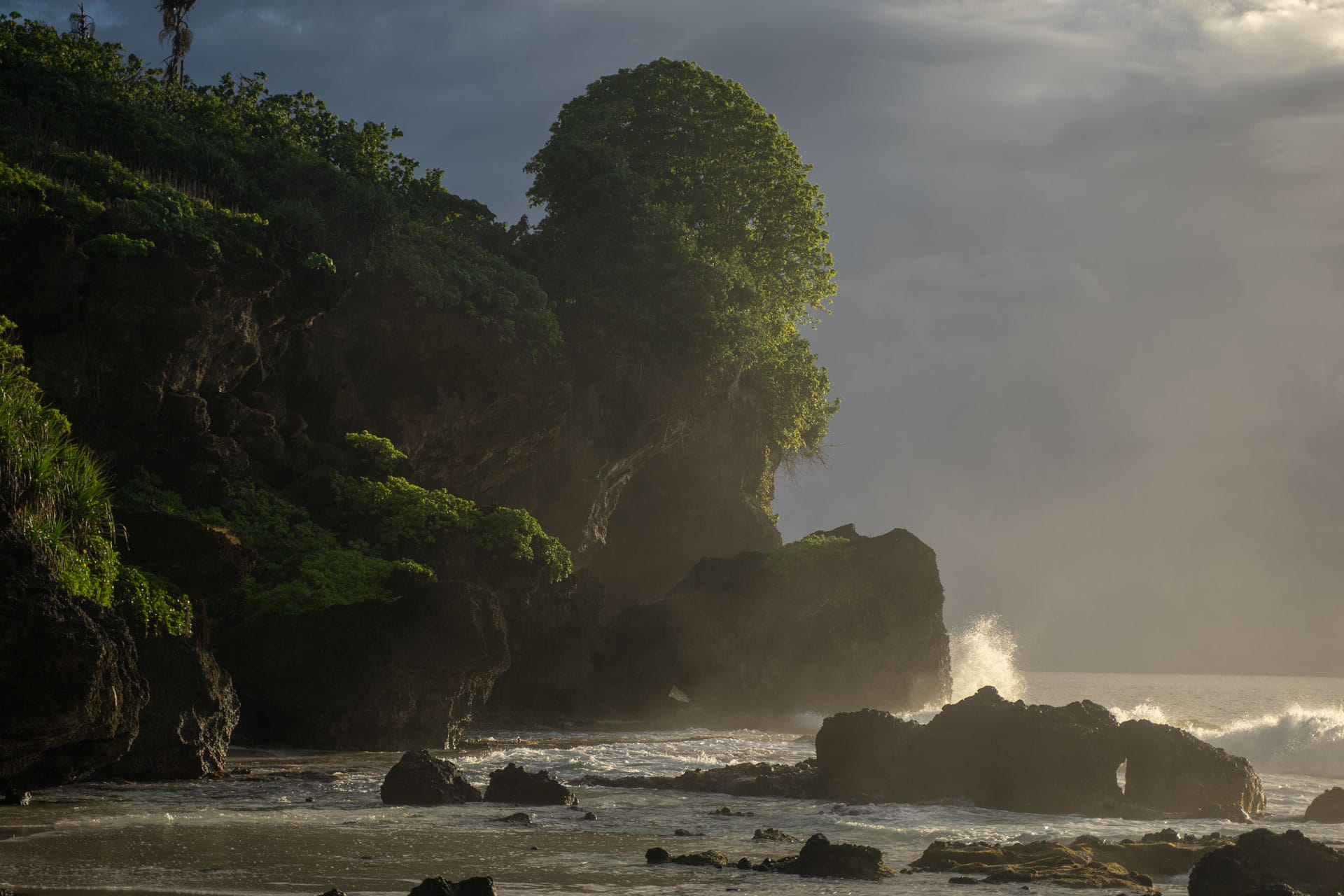
The stunning coastline of Christmas Island
About Christmas Island
As one of Australia’s youngest territories, Christmas Island is probably as different as you can get to the Australia you know.
The 135 square kilometre island is 60% national park and features a spectacular array of towering cliffs, picture-perfect beaches, stunning coral reefs, and untouched rainforests.
To top it off, the island is home to a community of 1,700 people of Chinese, Malay, and Australian descent. And they’re the most welcoming people you’ll ever meet.
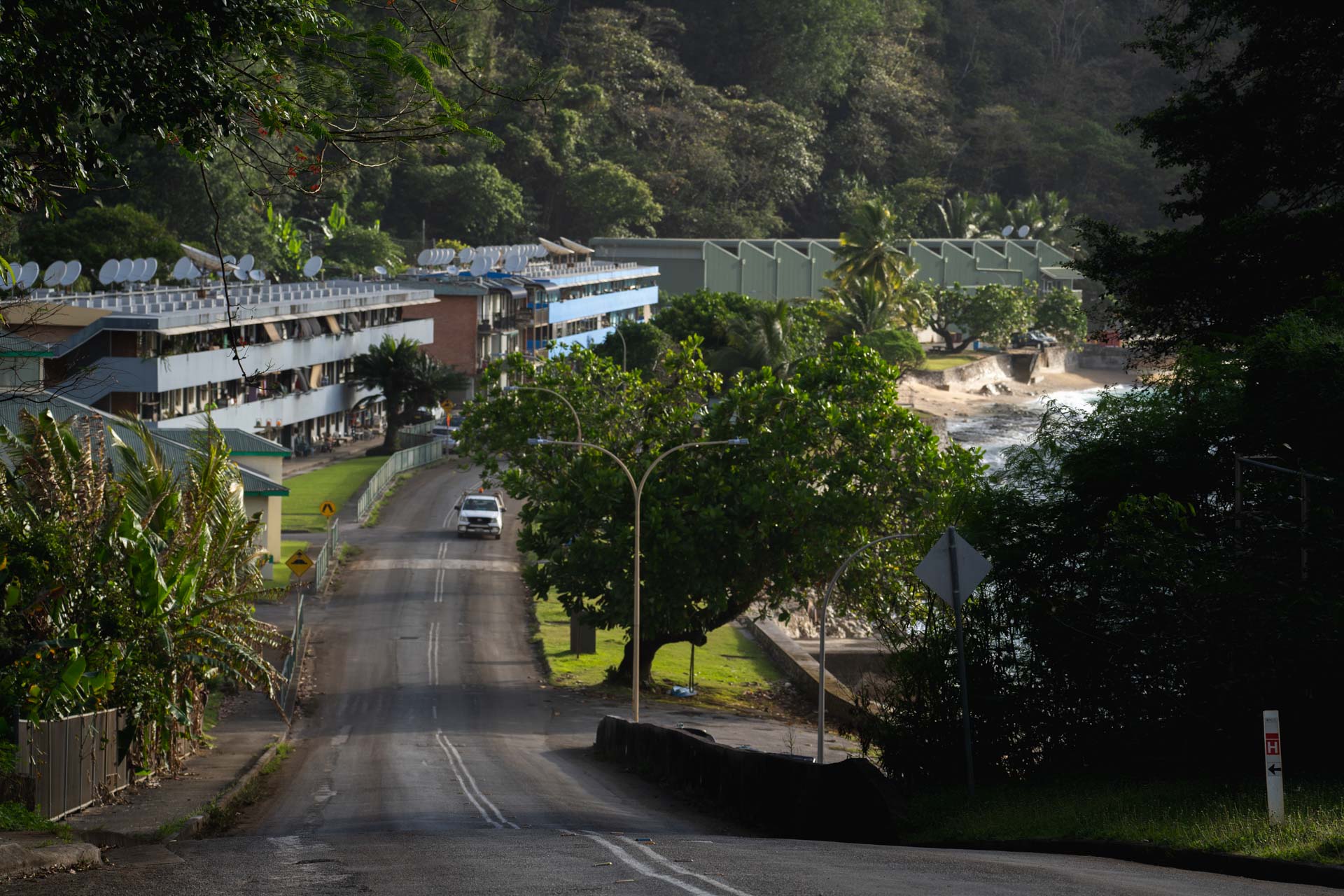
Christmas Island is a small community of just under 2,000 people
History of Christmas Island
After rising out of the ocean as the tip of a volcano 60 million years ago, Christmas Island was discovered in 1615 and named some years after when Captain William Mynors sailed past it on Christmas Day: a classic British captain’s tale.
After discovering phosphate deposits, the British Crown took control of the island until 1958 when it was placed under the official authority of the Commonwealth of Australia at a bargain price of $20 million! Since then, the island has received attention for multiple immigration-related conflicts and the occasional David Attenborough documentary.
The vibrant community that lives here today developed thanks to the Chinese and Malay workers relocated here during early phosphate mining operations.
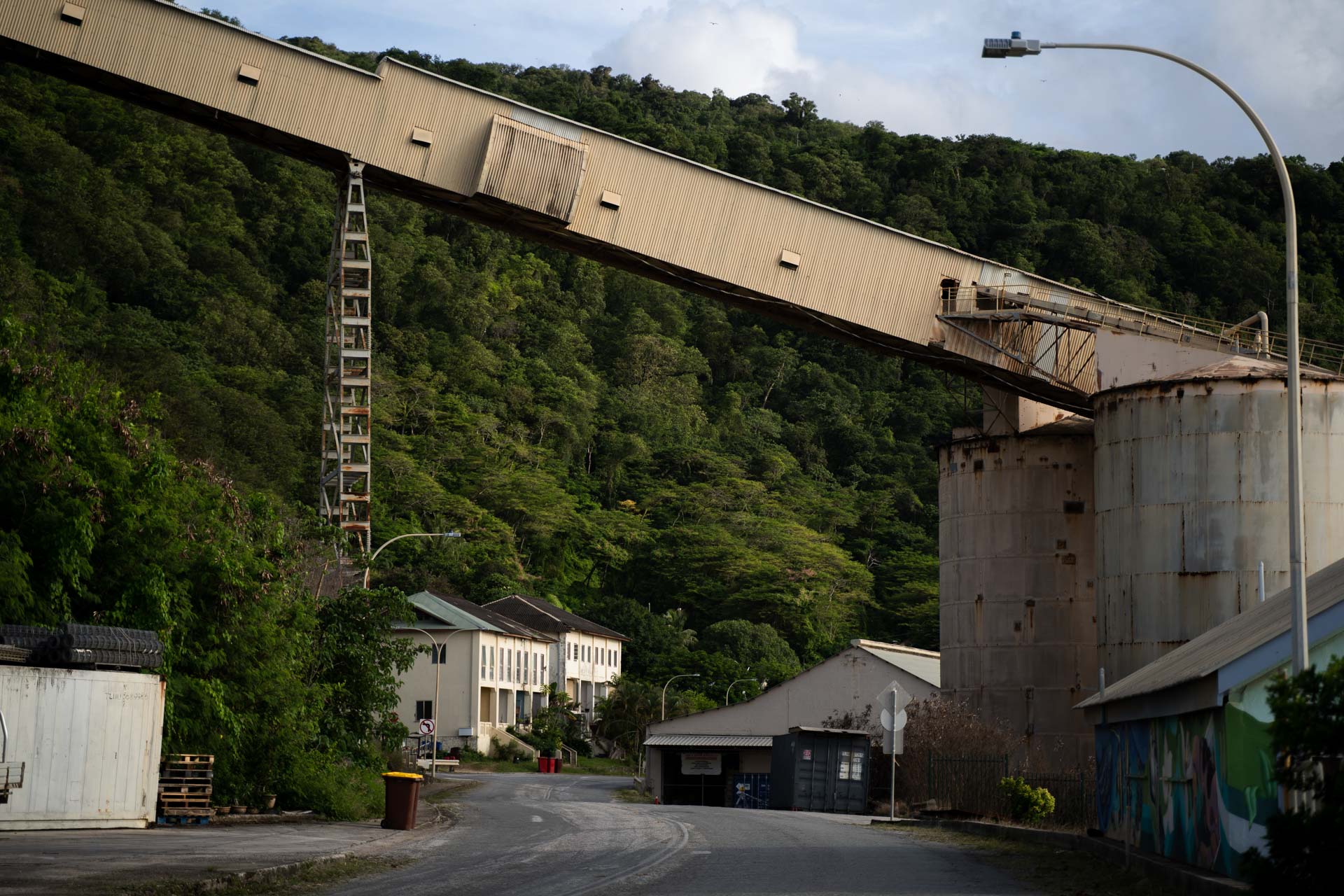
The remnants of previous industry are evident
How to Get to Christmas Island
To fly to Christmas Island directly, take a Virgin flight from Perth on Tuesdays, or the ‘scenic route’ on Fridays with a stopover via the Cocos-Keeling Islands. The direct flight will take you four hours and set you back anything from $800 return.
Alternatively, you can catch the supply ship from Fremantle, but that’ll take you two weeks and you might not stop at the island at all (oops).
Where to Stay on Christmas Island
While this isn’t a luxury resort island, there is accommodation available ranging anywhere from a hostel-style stay up to an all-inclusive rainforest lodge with a view and private chef.
These are mostly located in the main settlement area and will set you back anywhere from $75 to $1000 a night, so take your pick!
Camping is also allowed in certain parts of the national park, but more on that below.
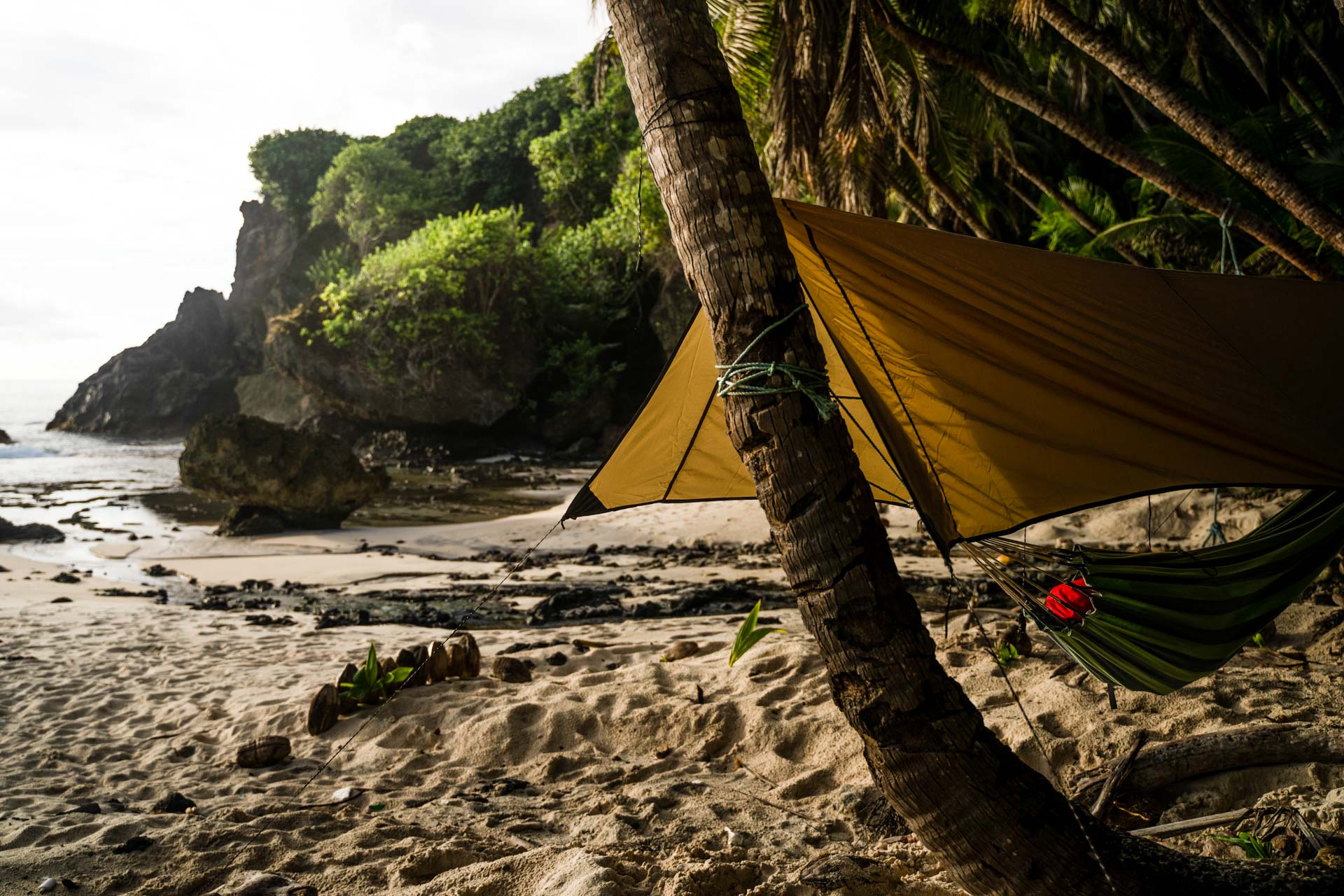
Pitch a tent in a designated camping area
Where to Eat on Christmas Island
This is a tough one and requires some compromise. Groceries on-island are exorbitant ($12 zucchinis anyone?) and fresh food is often limited.
Restaurant opening times change often but as a quick guide, check out the Malay Club and the Cla Cafe in Kampong village for local cuisine and the Golden Bosun for a more western pub experience.
Hot tip! Many locals check in extra bags or styrofoam boxes with food at the airport, so if you need your protein that might be an option. However, your second luggage piece often only arrives on the next flight.
Things to Do on Christmas Island
The dog’s head: swims, sights, and sunrise drives.
You might have noticed the island is shaped like a dog, with the main village area being referred to as the dog’s head.
Also called Kampong Village or Flying Fish Cove, this part of the island features a beautiful beach and a pier to jump straight into an untouched coral reef for some snorkelling . The drop-off is visited by dolphins, manta rays, and sometimes even Whale sharks.
Read more: Remember to leave no trace
There’s also an island museum, Tai Jin House, actively used Chinese temples, and historical artwork to discover. From here you can also join a variety of tours around diving, hiking or photography.

Ma Chor Nui Nui temple
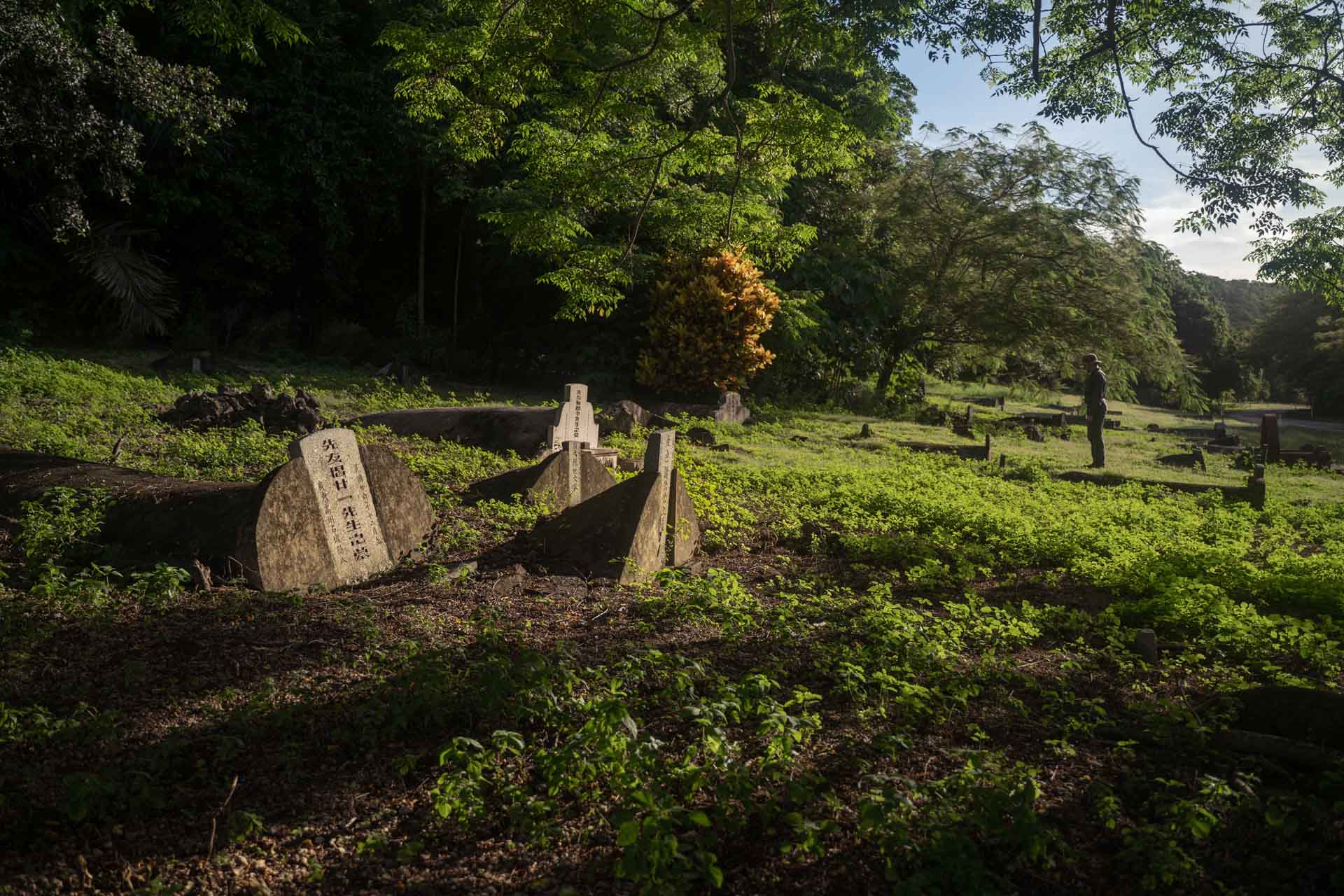
The old Chinese cemetery
From Kampong, you can follow the coastal road north and then east to get to a swimming hole, known as The Grotto, a golf course, a beautiful coastline, and finally to Ethel and Lily Beach. These are great spots for a walk, swim or snorkel, especially during sunrise!

Exploring Christmas Island National Park
So it’s Saturday morning, you just finished your Nasi Lemak at the Malay Club and you’re ready for some real adventure.
Enter Christmas Island National Park: your gateway to the wilderness and a variety of hiking, snorkelling, and 4WD adventures.
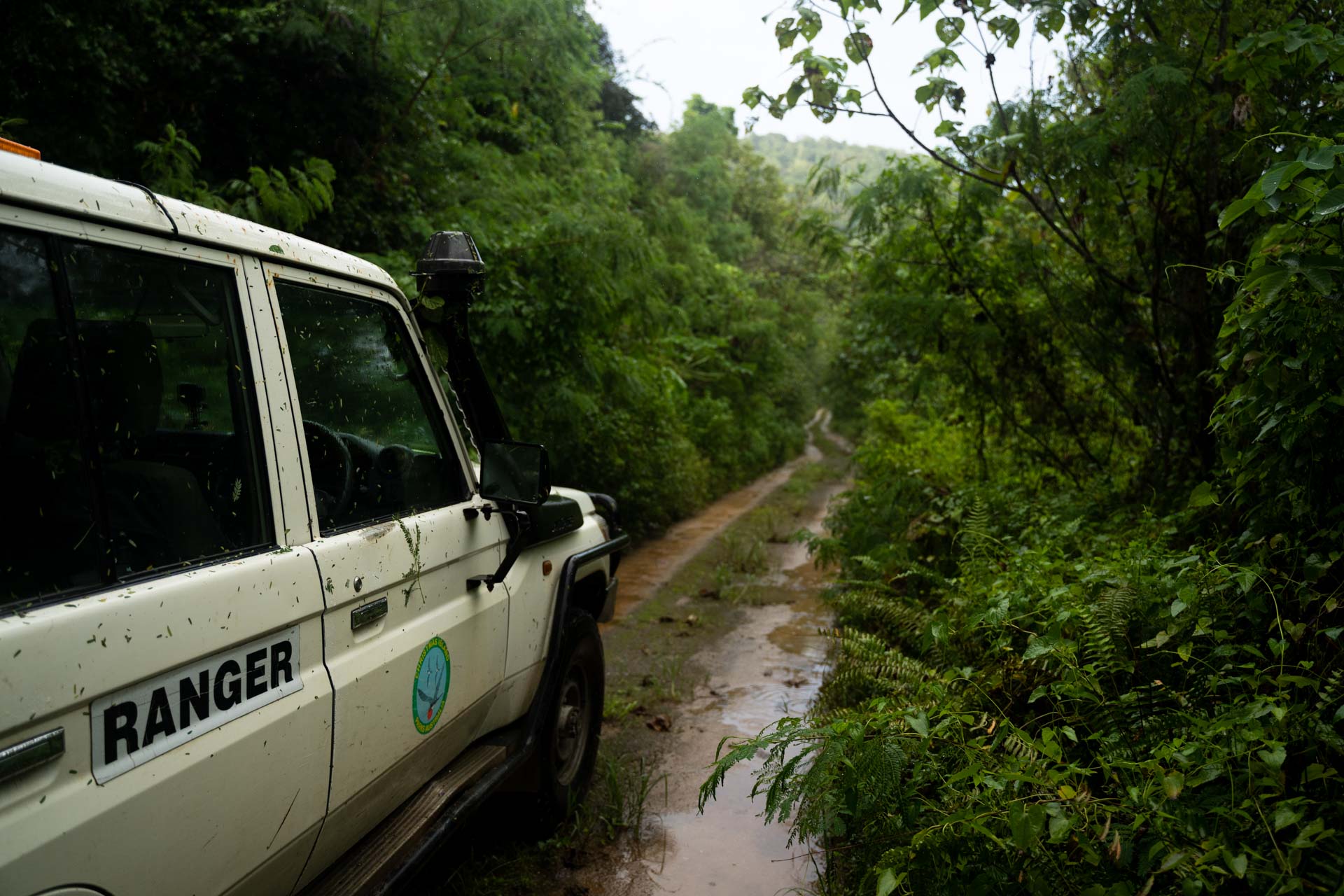
Greta Beach track
It all depends on how grubby you want to get, so here are the top spots of CINP in order of grubbiness.
Hot tip! Before you head out, make sure to let someone know where you’re going and download the maps.me app with the WA map overlay. This will allow you to track your location without internet/reception.
Soak in Sunrise at Margaret Knoll Lookout
While this lookout will only open again in early 2024, it’s only a short drive south from the village and therefore minimally grubby. Stop by during sunrise for spectacular views over the coast and rainforest.
Look Into the Past at the South Point Settlement Remains
At the southern tip of the island you’ll find South Point. This was Christmas Island’s major settlement and phosphate mining area until 1974.

South Point ruins
Take a wander through settlement ruins, past overgrown train tracks, and a Chinese temple still used today. This spot also features another stunning lookout.
Hear the Call of the Ocean at the Blowholes
Slightly north-west of South Point you’ll get to the blowholes. Come here during an incoming tide and witness the ocean and limestone cliffs conduct a symphony like only Mother Nature can produce.
Ocean waves crash against limestone karst eroded over millennia and force escaping air through narrow gaps. This results in a saltwater spray accompanied by a howling which will elicit the best kind of chills.
To top it off, the blowholes are also beautifully lit during sunset, making them the perfect spot to end the day.
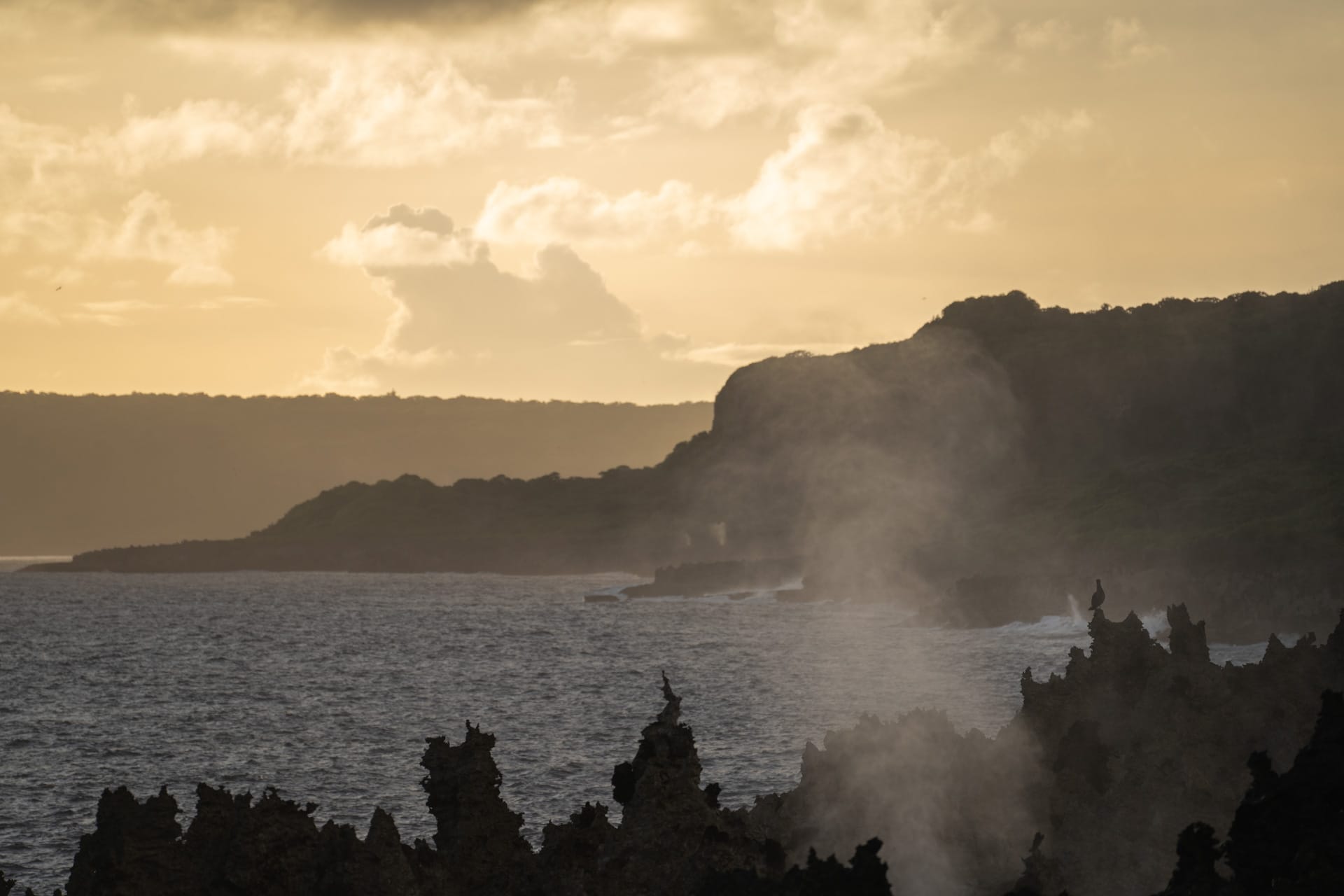
The blowhole at sunset
Practice Your Scrambling at West White Beach
By continuing onto North-West point road, you’ll soon see the West White Beach car park. This walk takes a fit person 30 minutes each way and goes steeply downhill at times, so get ready for a sweat bath!
Accounting for heat and humidity, I recommend taking at least two litres of water and some snacks. Enjoy the picturesque rainforest and array of crabs on the way down (but don’t let them nip you!).
Once there, you have a stunning beach to yourself with opportunities for a longer walk or a snorkel on the reef!
Explore the Famous Dales (Ramsar-listed Wetlands)
Right opposite West White Beach car park you’ll find the island’s most treasured rainforest and a Ramsar Wetland of international significance!
The walks to Hughs and Andersons Dale are easier than West White Beach but can take longer. They feature picturesque freshwater streams, waterfalls, and communities of crabs on full display.
Further along from the Dales car park, you’ll also find the track to Merriel Beach, which I personally consider the hidden gem of all beaches.
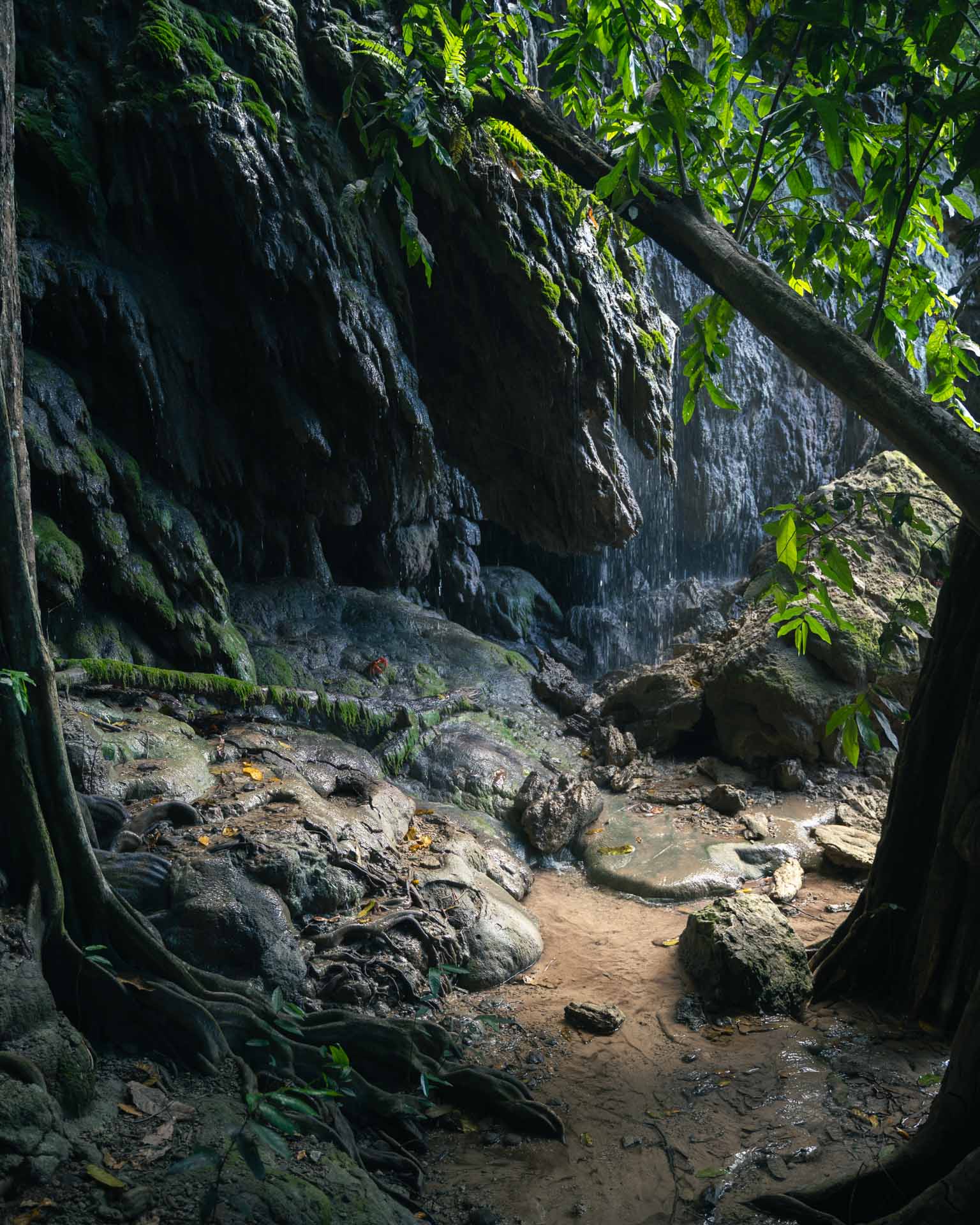
The Dales Waterfall
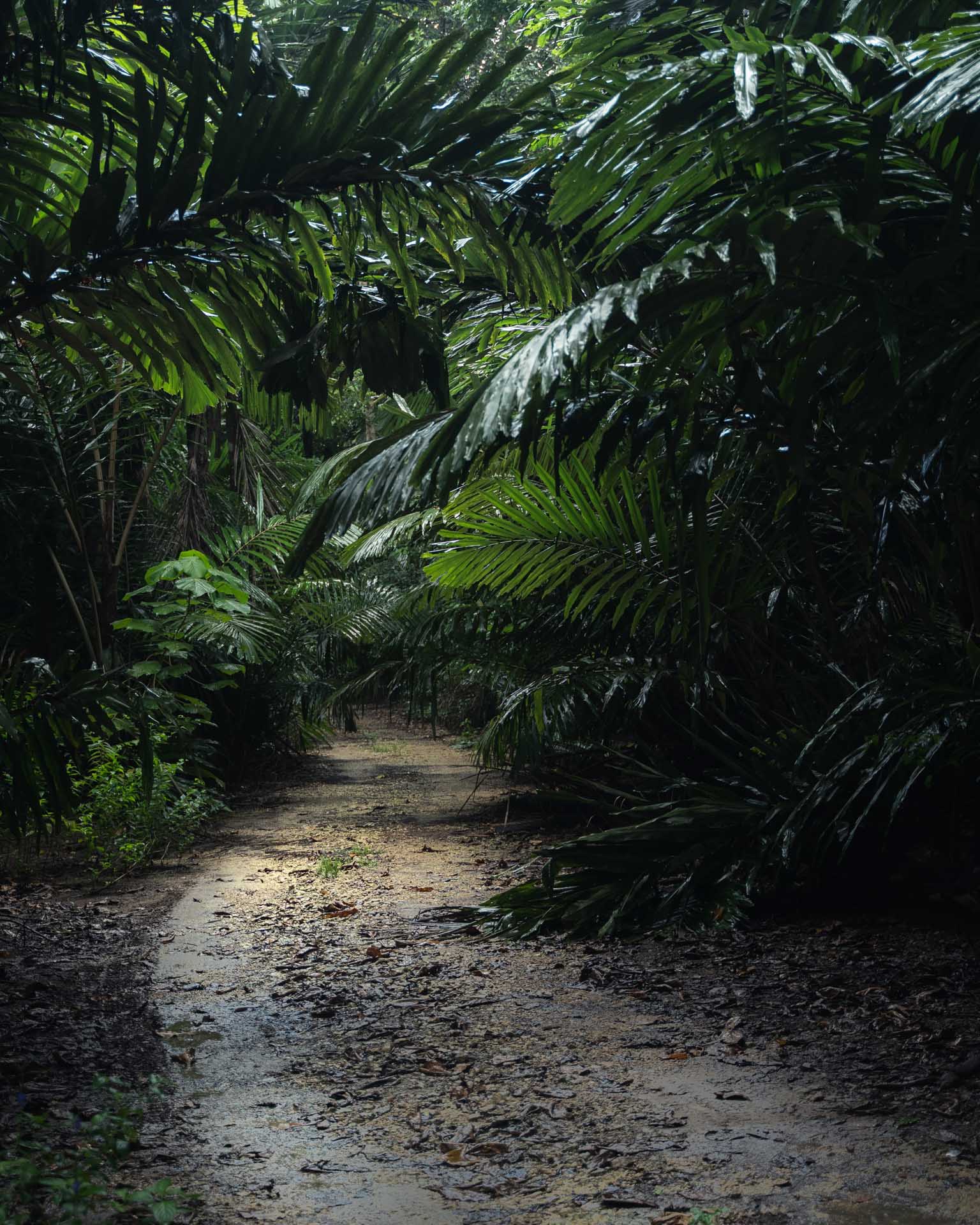
Get the Full Adventure Package at Greta and Dolly Beach
This spot requires a workout but is also my favourite as it combines all major activities on-island. A few minutes’ drive south of Margaret Knoll Lookout and you can access the 4WD track to Greta and Dolly Beaches, which is the bumpiest and steepest track on Christmas Island (and the most fun).

Dolly Beach track
Greta Beach car park comes up first, with the beach only five minutes’ walk further on. Once there, descend the metal stairs and enjoy the serenity.
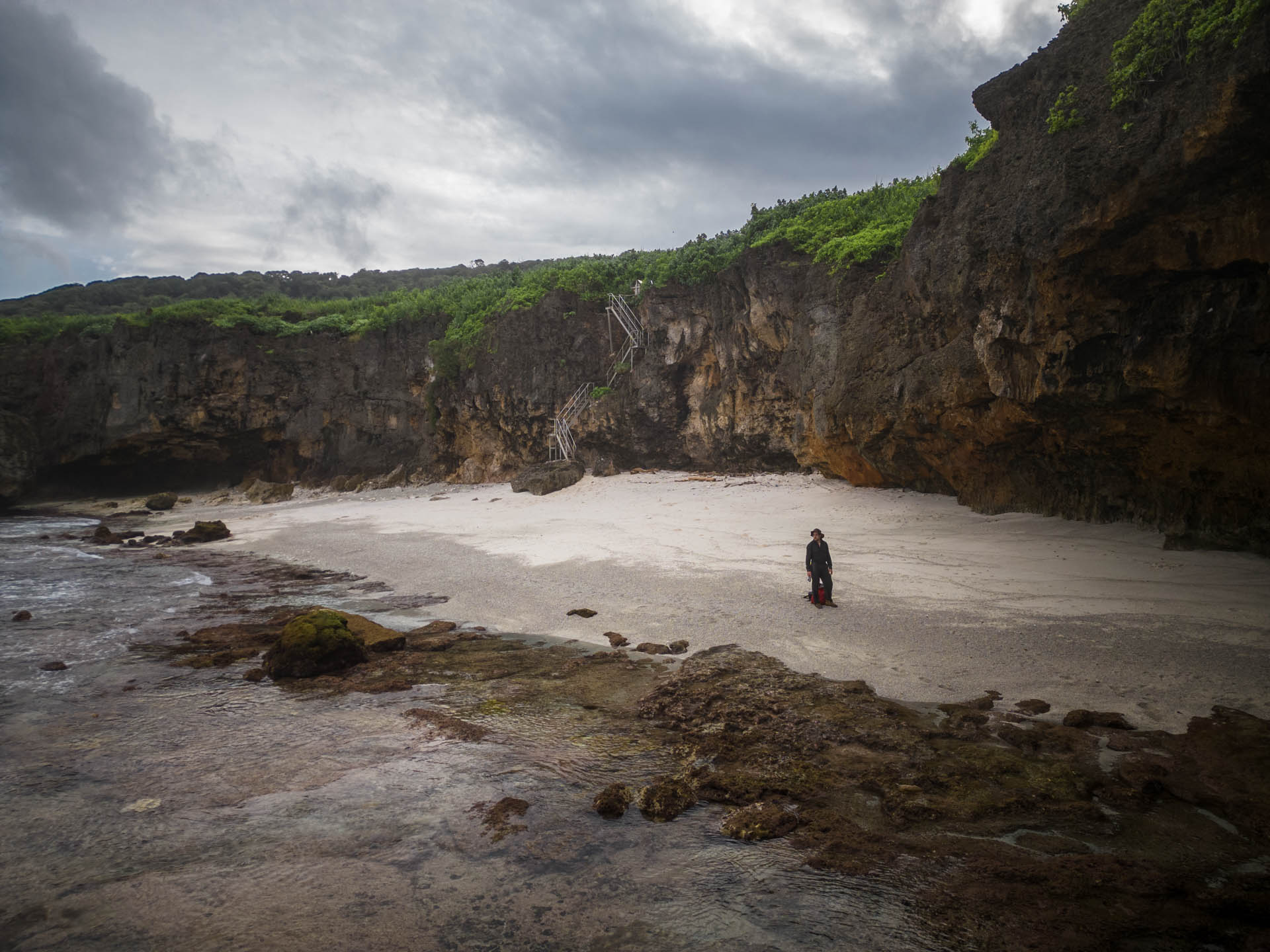
Greta Beach
Dolly Beach involves a 30 minute walk each way and ducking under fallen trees. Camping is allowed at the beach and you might even spot nesting or hatching turtles at night. However, this also means fires are a no-go.
Hot tip! Behind some rocks on the right side of Greta Beach you can find postcard-worthy rock pools during low tide. Similarly, low tide reveals rock pools right in the middle of Dolly Beach.

Some Christmas Island Crabs on Dolly Beach
Essential Gear for Christmas Island
- Sturdy hiking shoes
- Sun protection
- GPS (use the maps.me app if you can’t get hold of one)
- Satellite phone or PLB (you can also borrow one at the police station)
- Did I say Aerogard??
- Snorkelling gear
- First aid kit
What it’s Like to Visit Christmas Island
It truly feels as wild as entering Jurassic Park, yet the community is incredibly warm and welcoming to visitors. There’s virtually no crime on the island, with people leaving keys in cars and front doors unlocked.
Everyone here has a close relationship with nature, as they depend directly on it. Overall, it is the perfect adventure destination, with the only caveats being cost and options for eating out.
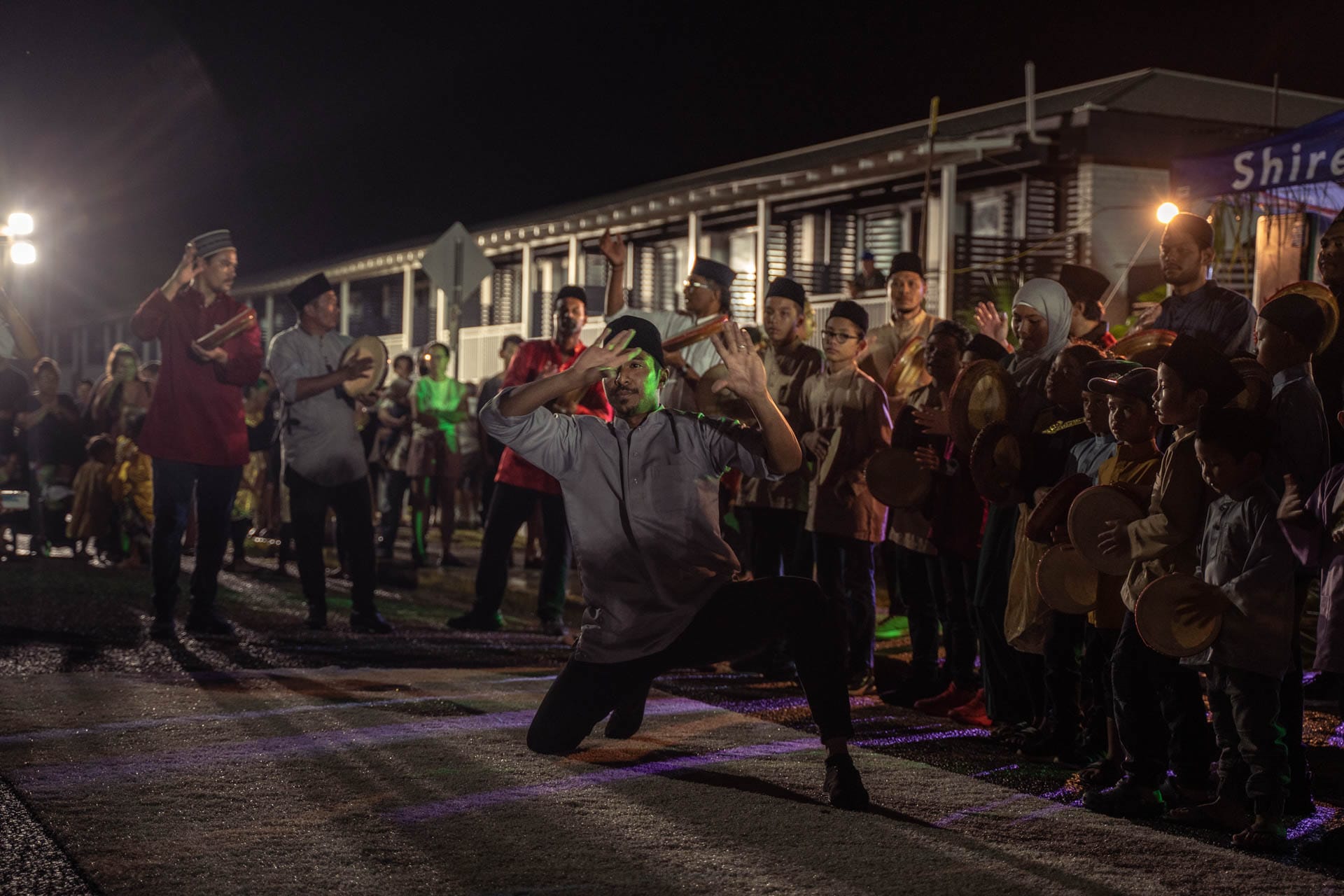
A place where people, place and culture collide
Tips for Visiting Christmas Island
- If you’re ever unsure about road or weather conditions at the spots listed above, check in at the Parks Australia office in Drumsite for updated info
- Weather can change rapidly on the island, so pack that raincoat even if it’s sunny out.
- Travel as a group where possible and stay on the main tracks. The jungle gets incredibly thick, and I’ve become lost walking only 50 metres off the path

Christmas Island FAQs
Is there phone reception/internet on Christmas Island?
There’s Telstra phone reception in the main settlement area and on some of the island’s highest points or capes. However, there’s no mobile internet and WiFi availability will depend on your accommodation.
Is Christmas Island in a different time zone?
Christmas Island is on Western Indonesia time (in summer one hour behind Perth and four hours behind Sydney )
Is Christmas Island an international destination?
Yes and no. It’s part of Australia, but you’ll depart from the international terminal and it’s also a duty-free zone, so make sure to leave space for a cheeky bottle of gin on the way home!
Are there dangerous animals on Christmas Island?
There’s nothing out here to threaten your life. However, watch out for the Giant centipede in the rainforests – its bite can hurt a tonne! Also keep an eye out for Wolf snakes (mildly venomous) and Tiger sharks (very rarely seen).
MORE EXPERIENCES

Christmas Island: is this Australia’s best kept travel secret?

Sep 5, 2019 • 5 min read
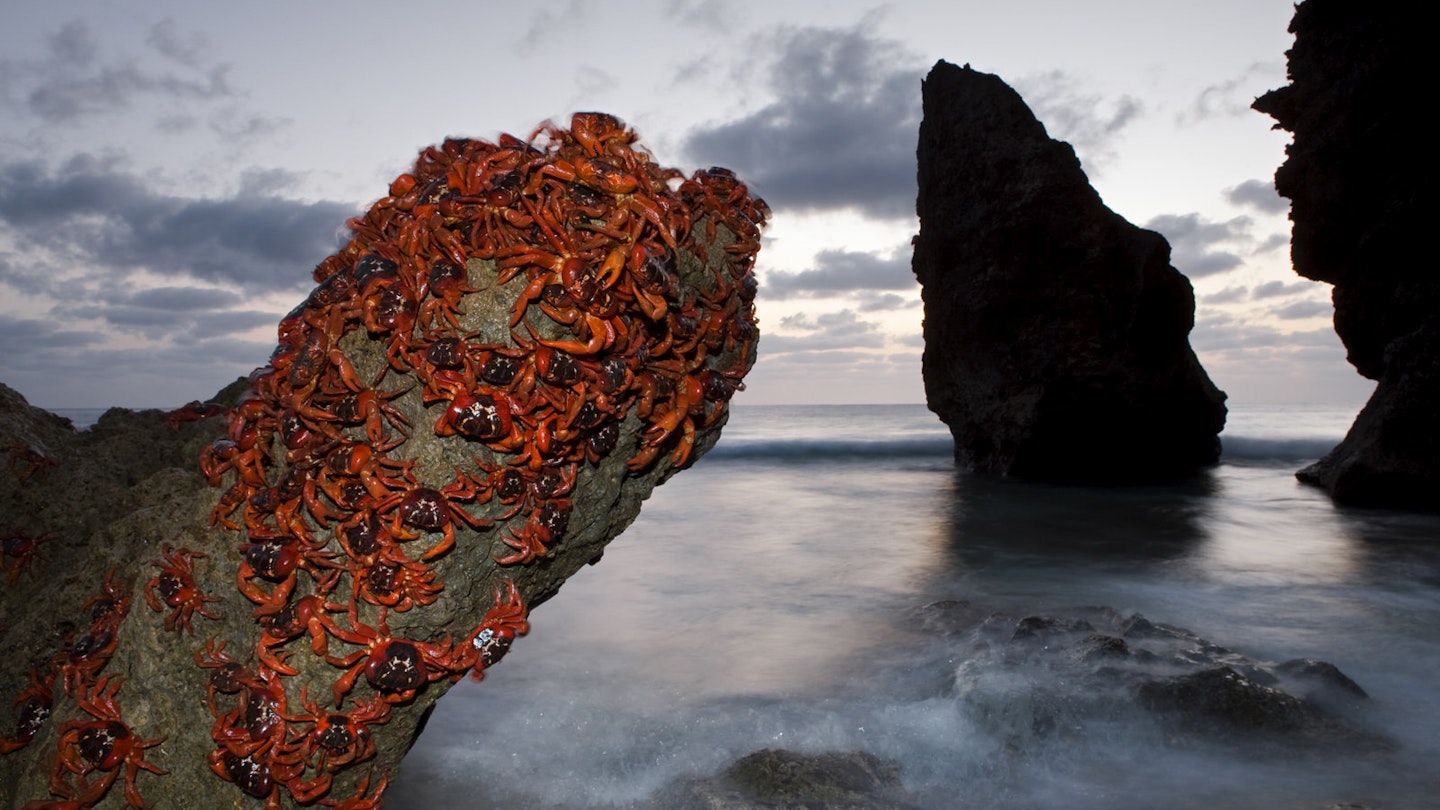
Editor's note: Since this story was written, Christmas Island's detention centre has been reopened.
With more than 225,000 red crabs (and 40 seabirds) to each of its human residents, getting back to nature takes on new meaning on Christmas Island. But while many travellers will have heard of its annual crab migration – regarded by Sir David Attenborough as one of the world’s most ‘astonishing and wonderful’ sights – this remote Australian territory remains one of the nation’s most underrated attractions, receiving just 2000 visitors a year.
A three-and-a-half hour flight from Perth , Christmas Island’s isolation has a lot to do with its lack of visitors. The Indian Ocean island’s controversial detention centre – which was closed in 2019 – hasn’t exactly been good for business either. But with tourism infrastructure continually improving as the island’s phosphate mining industry simultaneously winds down, it’s an incredible time to explore Australia ’s own Galapagos before the secret is out.
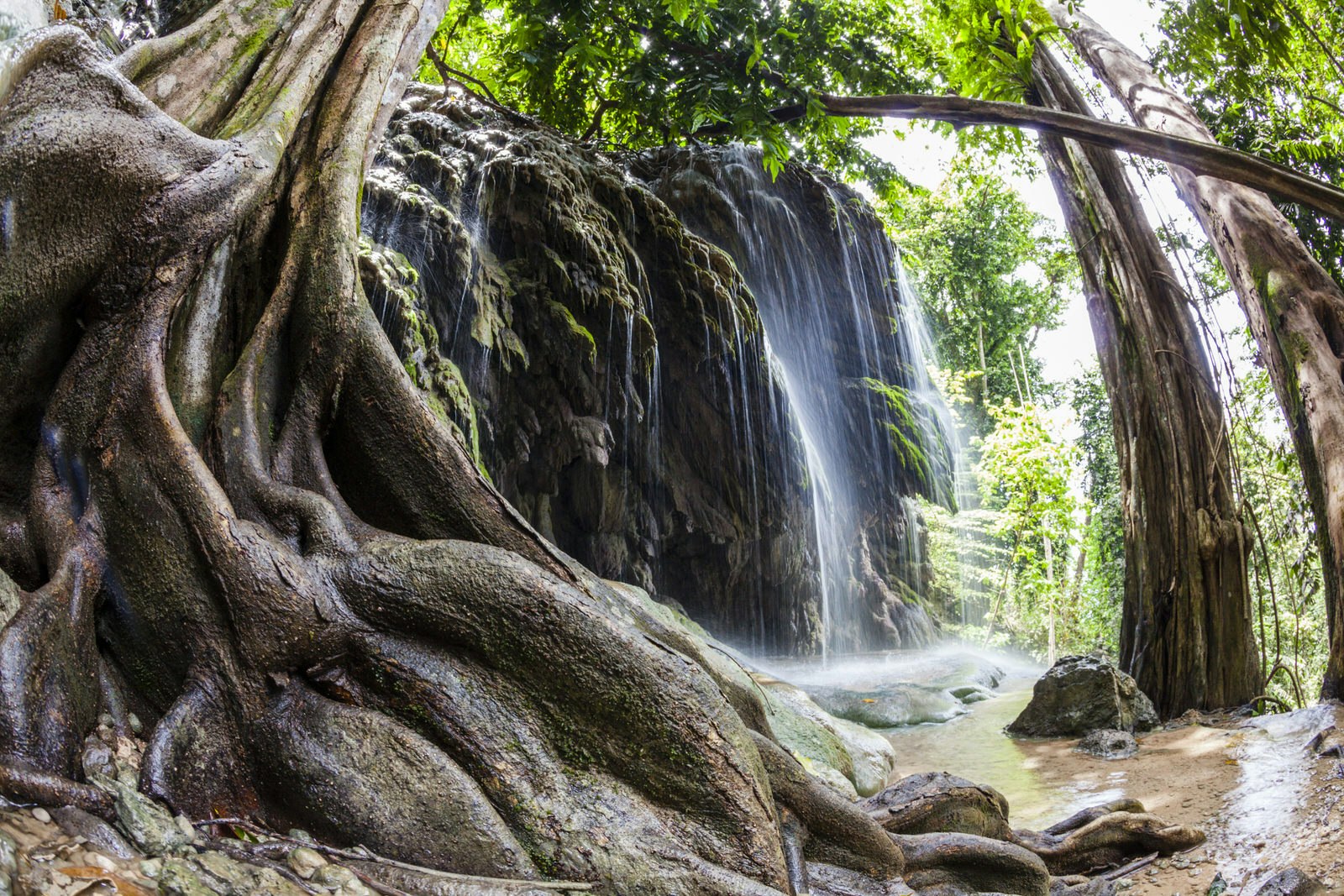
Into the jungle
A wild expanse of verdant rainforest, volcanic cliffs, hidden beaches and endemic wildlife, Christmas Island National Park encompasses nearly two thirds of the 13- sq-km island, and is a key highlight for visitors. An easy 750m stroll along a raised boardwalk, Hughs Dale Waterfall Walk is easily the most popular trail that has been carved out of the unique vegetation. Just downhill from the trailhead, look for the path to the romantic sliver of sand known as Merrial Beach. If you spot a car parked at the top of the track, island courtesy dictates that its owner should be left to enjoy the beach in private.
Other beaches in the national park include Dolly Beach (reached via a 1km boardwalk), West White Beach (1.5km one-way), Winifred Beach (1.4km one-way) and Greta Beach, accessed via a hairy 4WD track. More accessible attractions include the Blowholes, where explosive bursts of seawater can be seen shooting 20m up through ancient lava tubes, and Margaret Knoll Lookout for sweeping island views and fantastic birdwatching. On Wednesday afternoon, don’t miss the opportunity to tour the Pink House Research Station, where national park staff are working to save two endemic lizard species from extinction.

Totally wild
Even outside of the annual crab migration (which can occur anytime between October and January), the island teems with these creatures. And not just red crabs – among the 20-odd crab species that call the island home, you’re bound to spot plenty of Christmas Island blue crabs, and huge robber crabs (also known as coconut crabs) roaming the island. Like most Christmas Island wildlife, the crabs have little fear of humans, making them a photographer’s dream at any time of the year.
Christmas Island is also known for its incredible birdlife, with an estimated 80,000 seabirds nesting here annually. Along with endemic species such as the Christmas Island frigatebird and the elegant white-tailed tropicbird; red-footed, brown and huge Abbott’s boobies can be spotted nesting everywhere from seaside cliffs to locals’ front yards.
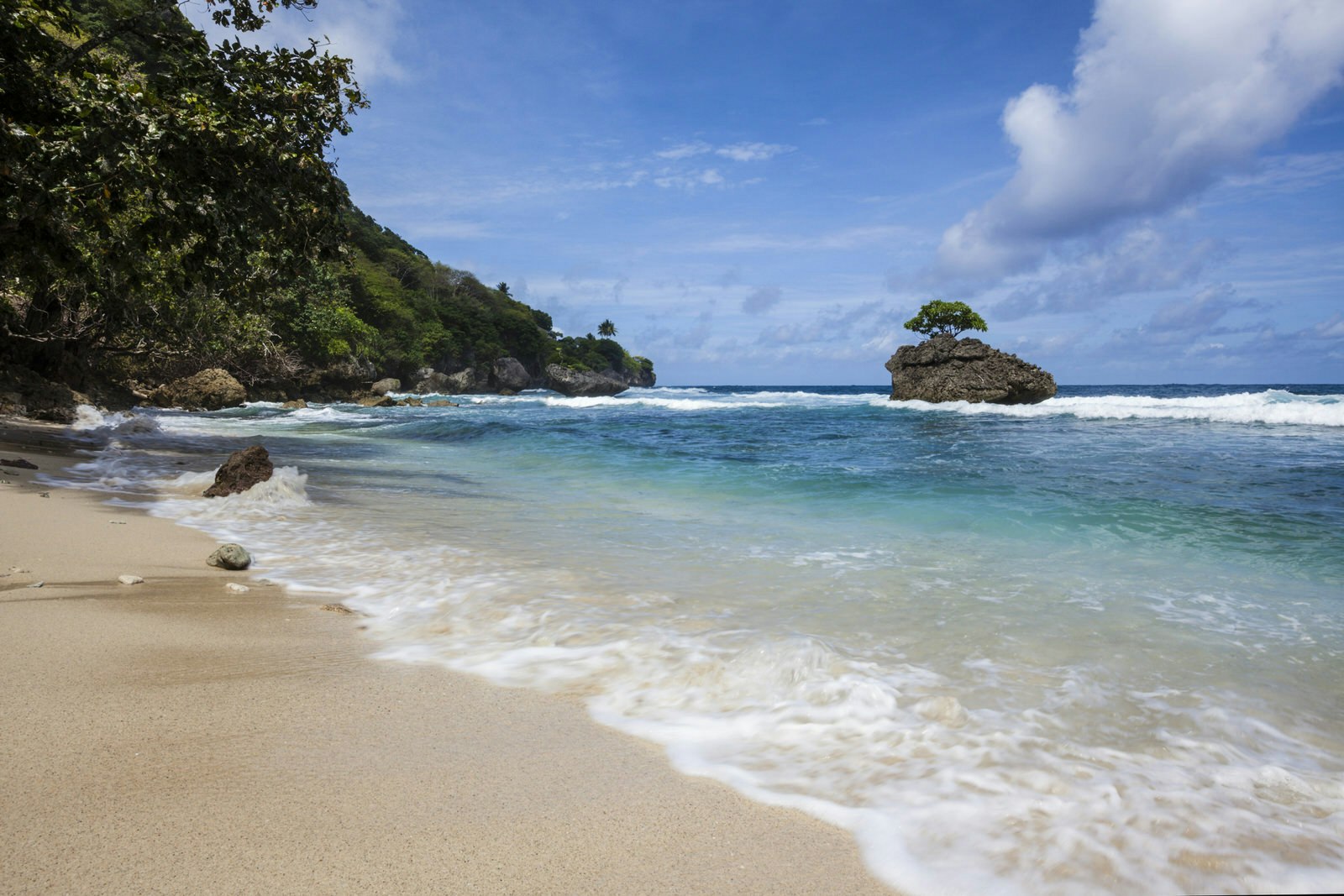
To the beach
Formed by a series of geological uplifts over several million years, Christmas Island is surrounded by jagged cliffs, making much of its 80km shoreline inaccessible. But this only adds to the fun of seeking out its handful of beaches. Outside the aforementioned beaches in the national park, Lily Beach has the deepest arc of sand and a somewhat protected swimming area. It’s linked to the longer, wilder, Ethel Beach by a boardwalk that passes through a field of limestone pinnacles favoured by nesting seabirds. In town, Flying Fish Cove (locally known as The Cove) is a popular weekend hangout for locals. Just off Golf Course Rd, don’t miss The Grotto, a small cave with a refreshing natural pool chilled by an underwater spring.

Diver’s dream
As close as 20m from the shoreline, Christmas Island’s colourful fringing reef drops off several kilometres into the abyss, making for some of the most unique scuba diving on the planet. With more than 60 dive sites to choose from, keen divers could easily spend a few weeks here ticking off rare species such as dragon moray eels and hybrid fish that don’t occur anywhere else, while keeping an eye out for spinner dolphins and whale sharks.
In 2016, international diving operator Extra Divers joined smaller outfit Wet ‘n’ Dry Adventures on the island, making its underwater marvels even more accessible. Both operators also offer snorkelling trips, but some of the island’s best and most accessible snorkelling can be had just off the beach at Flying Fish Cove.

Island life
Located on the island’s northeastern tip, Flying Fish Cove – Christmas Island’s main settlement, which is essentially a mining town – isn’t particularly easy on the eye, but its quirkiness has a way of growing on you. In a nod to the rich cultural makeup of the local community, which numbers less than 2000 people, the settlement is dotted with various places of worship, while an ongoing beautification scheme has seen drab buildings livened up with colourful murals. Even renowned Malaysian-based street artist Ernest Zacharevic has made his mark here in a piece affectionately known as ‘Forklift Boy’.
At the western end of Flying Fish Cove, don’t miss the excellent museum on the upper floor of historic Tai Jin House with its colourful displays recounting the island’s fascinating – and often dark – history. It stands near a 6-inch-barrelled gun installed during WWII, which wasn’t much help in defending the island against the Japanese, who occupied it for three years.
Make it happen
Christmas Island is served by twice-weekly flights from Perth (connecting with the Cocos Islands), a weekly flight from Jakarta , and a fortnightly flight from Kuala Lumpur . Plan on staying for at least four nights; longer if you’re hoping to log a few dives.
There are a handful of guesthouses and restaurants in Flying Fish Cove, but if you’d prefer to be immersed in nature, check out Swell Lodge . Opened in 2018, the park’s only nature-based accommodation option features two eco-luxe glamping tents perched on a serene cliff above the ocean and surrounded by jungle. Rates include daily island touring with a knowledgeable host, three-course dinners cooked on your deck by a private chef, and endless opportunities to get up close to crabs.
If you’re not staying at Swell, hiring a car (ideally a 4WD) is essential for exploring the island; make the excellent Visitor Information Centre your first stop.
Sarah Reid travelled to Christmas Island with support from Tourism Australia and Swell Lodge. Lonely Planet writers do not accept freebies in return for positive coverage.
Explore related stories
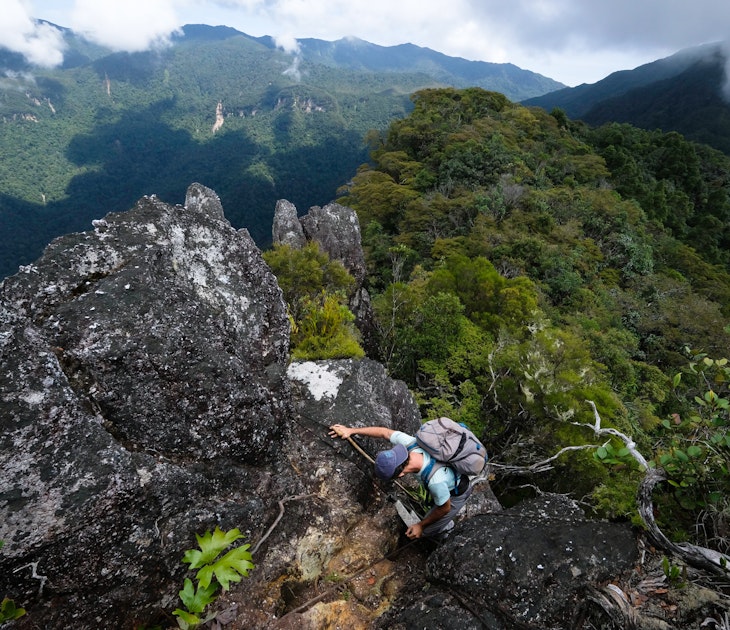
Sep 1, 2023 • 8 min read
Nature treks, caves and dive sites are just some of the world-class natural wonders Malaysia offers to adventurers
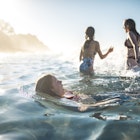
Feb 13, 2022 • 6 min read
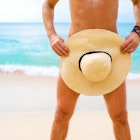
Jan 16, 2022 • 10 min read
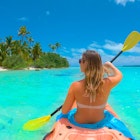
Dec 13, 2021 • 8 min read
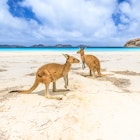
Sep 28, 2020 • 5 min read
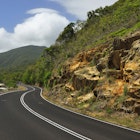
Sep 24, 2020 • 7 min read
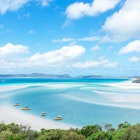
Mar 25, 2020 • 6 min read
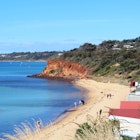
Mar 20, 2020 • 4 min read
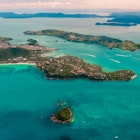
Nov 19, 2019 • 4 min read
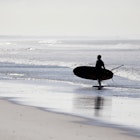
Aug 20, 2019 • 4 min read

A Photographers Guide to Visiting Christmas Island
- May 6, 2015
- No Comments
- Travel Photo Guides
As a professional travel photographer, there is no shortage of incredible locations around the world that I am fortunate to get the opportunity to explore and experience first hand. From climbing mountain peaks in the Himalayas to swimming with sharks in the Galapagos to watching active volcanoes in Iceland. However, for the longest time the remote and wild island paradise of Christmas Island had been on my bucket list. Why? Let’s just say that if Hawaii and the Galapagos Islands had a baby….the result would be Christmas Island. Sounds pretty incredible, right?
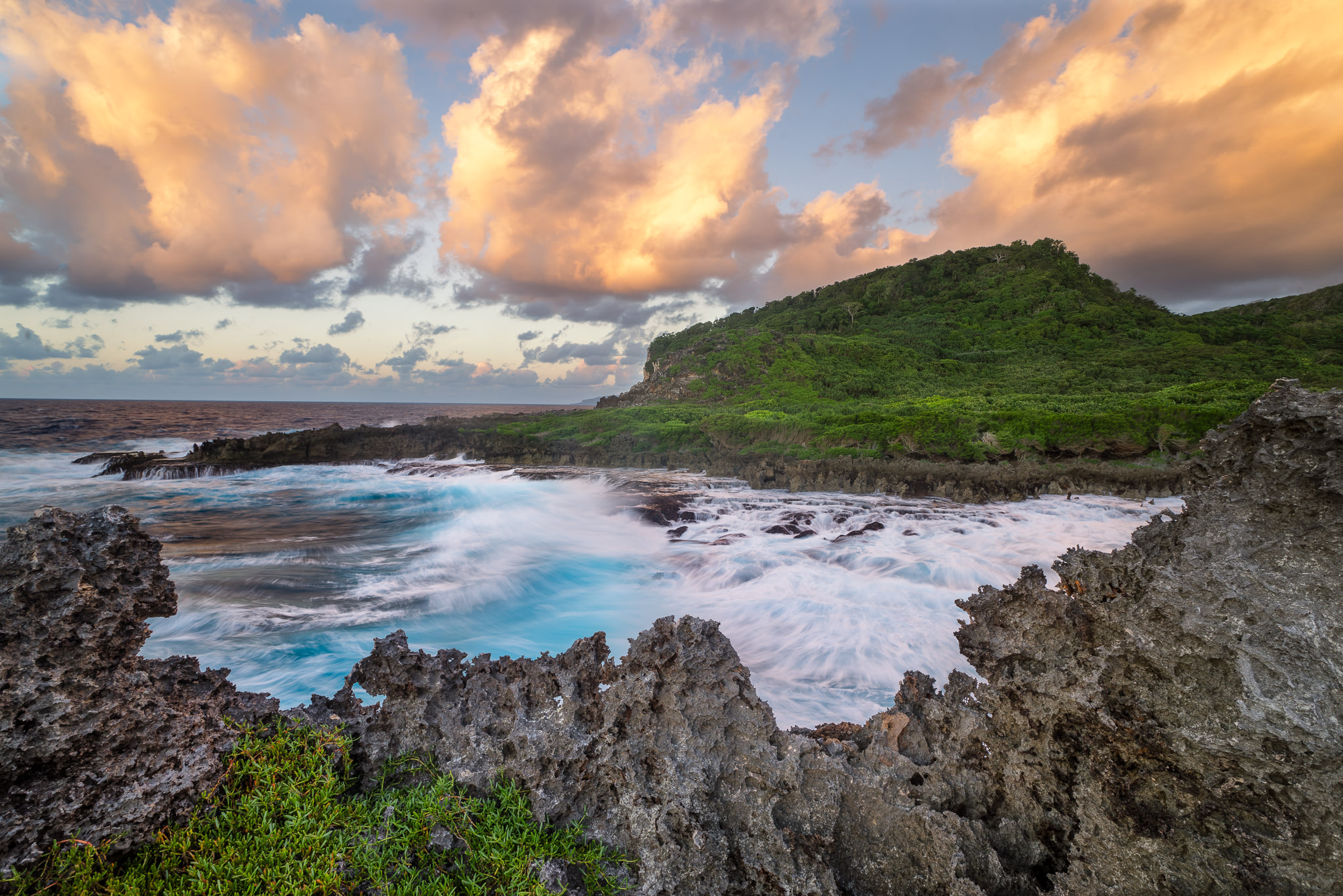
While the name “Christmas Island” might not ring a bell at first, I promise you that you have probably seen images or footage of it, especially if you are a fan of Discovery.com or National Geographic. Located 1600 miles northwest of Perth in Western Australia, is home to the famous Red Crabs. It is here that millions of red crabs migrate across the island each year in one of the most impressive and awe-inspiring natural migrations on the planet.
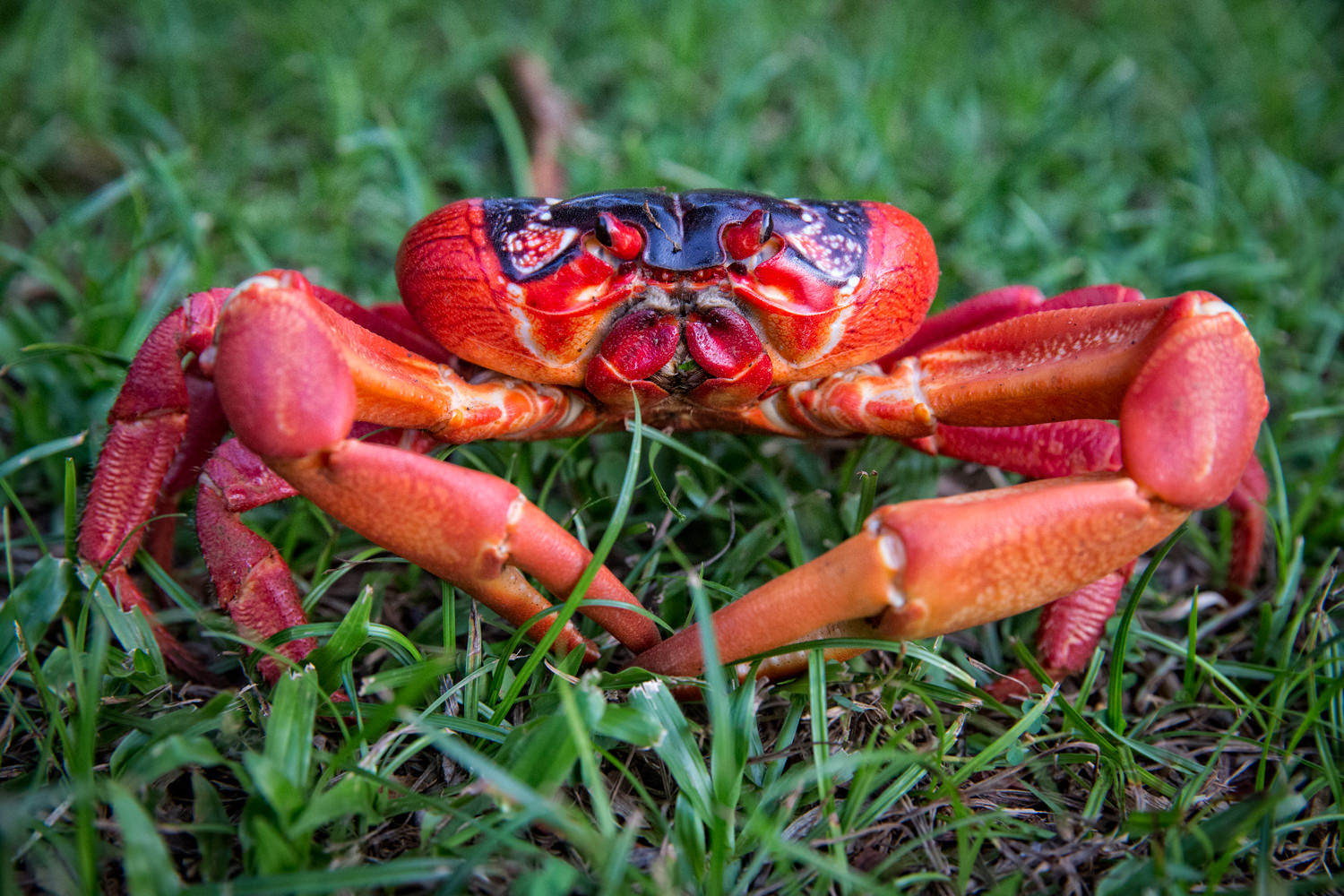
And while the wildlife itself is certainly impressive, the dramatic landscapes and scuba diving found here are incredible in their own right. It is for all these reasons that I have decided to put together this free travel guide to visiting and exploring Christmas Island. From getting to the island to sorting out accommodations to sharing my favorite spots to photograph, there is a lot of information to cover. With that being said…let’s get started!
Tell Me About Christmas Island
Technically speaking, Christmas Island is actually properly known as “The Territory of Christmas Island”, which makes sense since it is a territory of Australia, much like Puerto Rico here in the US. As I mentioned above, Christmas Island is located roughly 1600 miles (2600 km) northwest of Perth and 320 miles (500 km) south of Indonesia. Home to just 2,072 residents, this unique island is only 52sq miles in size (135 square km), of which 63% is actually an Australian National Park. This means that the vast majority of the Island is actually protected land.
While you won’t find white sandy beaches here (such as White Haven Beach in Queensland Australia), Christmas Island has a much more rugged and wild beauty that is more commonly found around Hilo on the east coast of the Big Island of Hawaii. By this, I mean dramatic limestone rock cliffs and lush/thick tropical forests that almost bring you back to the prehistoric times. That being said there are a few beaches worth visiting, such as Ethel, Lily, and Dolly Beach…but just don’t expect endless white sand…as that isn’t what you will find here on Christmas Island.
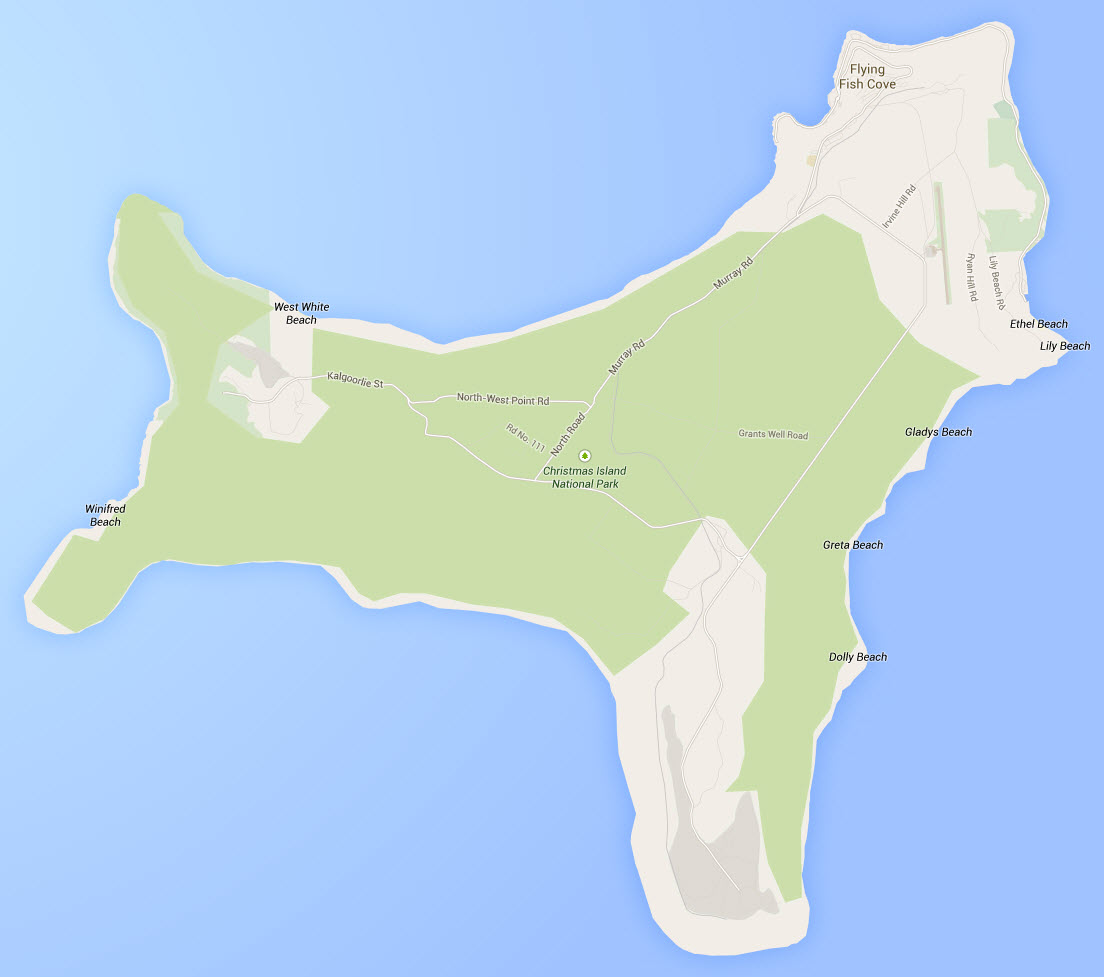
Because Christmas Island wasn’t actually inhabited until the late 19th century, most of its plant life and animal species here were allowed to thrive unchallenged by human interactions. This is the aspect of the Christmas Island that really reminds me of the Galapagos and while there aren’t giant tortoises here, they do have their share of amazing creatures. While we will talk more the famous crabs in a bit, it is important to note that the islands flora, seabirds, and wildlife are also beautiful.
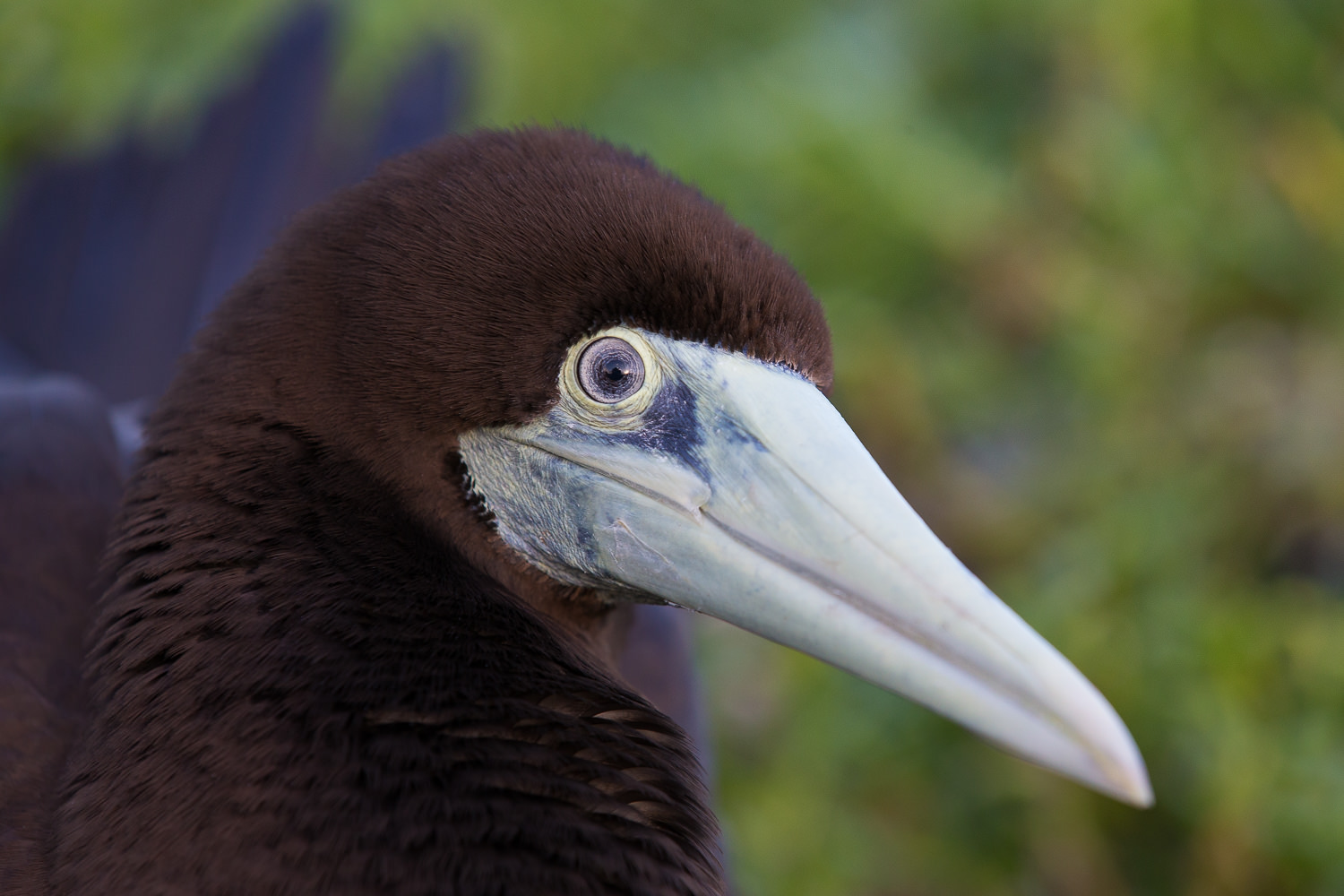
Lastly, Christmas Island was also home to the fairly controversial Australia Detention Center that houses many illegal immigrants that have tried to arrive into Australia by boat. While this fact tends to dominate the local and national newspapers in Australia, the truth is that I wouldn’t have even known it was there if I wasn’t told by the locals. I never ran into anyone that worked at the center nor did I notice its gates when I drove to that side of the island for sunrise one morning. Regardless, from what I am told, the Detention Center has all but closed down. Either way, I would be remiss if I didn’t mention it here in the guide.
Getting There
Because Christmas Island is located out in the middle of the Indian Ocean, 1600 miles from Australia, your best bet to get to the island is by plane.
Perth International Airport
For the most reliable service, you will want to check out Virgin Australia for their flights out of Perth to Christmas Island. They fly out of Perth a few times a week, but not every day, in a circuit between Christmas Island and the Cocos-Keeling Islands, located a few hundred miles further out to sea.
Charter Flights to/from Asia
Additionally, you might be able to find a few flights to Christmas Island from Asia. While I have never taken any of these flights, it seems the main hub you would be flying in and out of would be Jakarta in Indonesia although there might be a few other options.
When To Visit
Much like Hawaii or the Galapagos, Christmas Island doesn’t really have all that many “seasons”. Year round it is a balmy 80 F (27 C) and like most tropical climates, you will certainly experience humidity. That being said, there is a wet season, from Dec – April when you can expect it to rain at some point nearly every day. In my experience on the Island, this was simply a passing afternoon or morning shower, but being out in heart of the Indian Ocean, it can also experience much more severe weather during that time of the year.
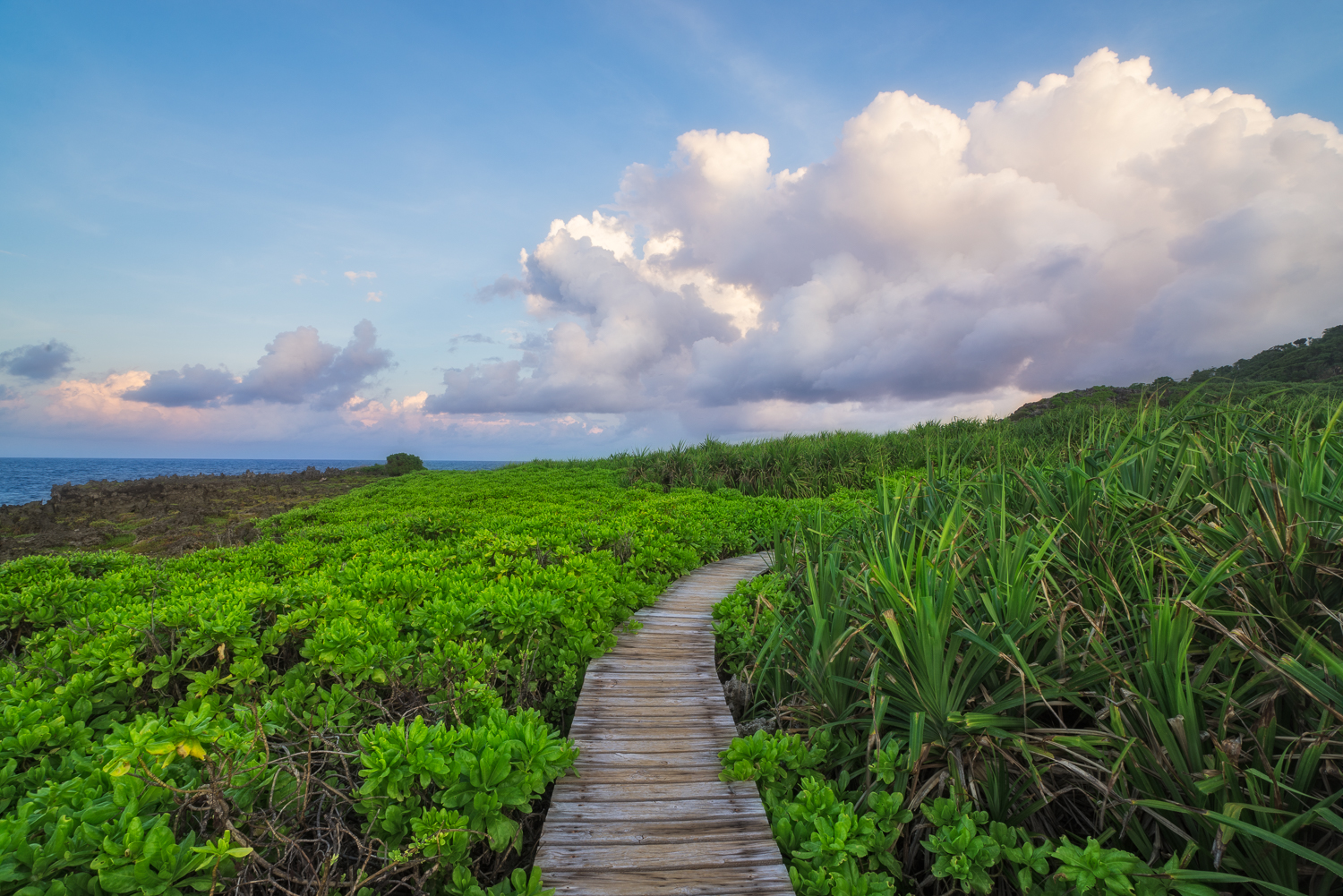
When it comes to the red crab migration, you will want to plan your adventure sometime around between November – January. The migration starts with the first big rains of the season, so if you have some flexibility and keep your eye on the weather, you might be able to plan things just right and catch the first baby crabs begin their journey.
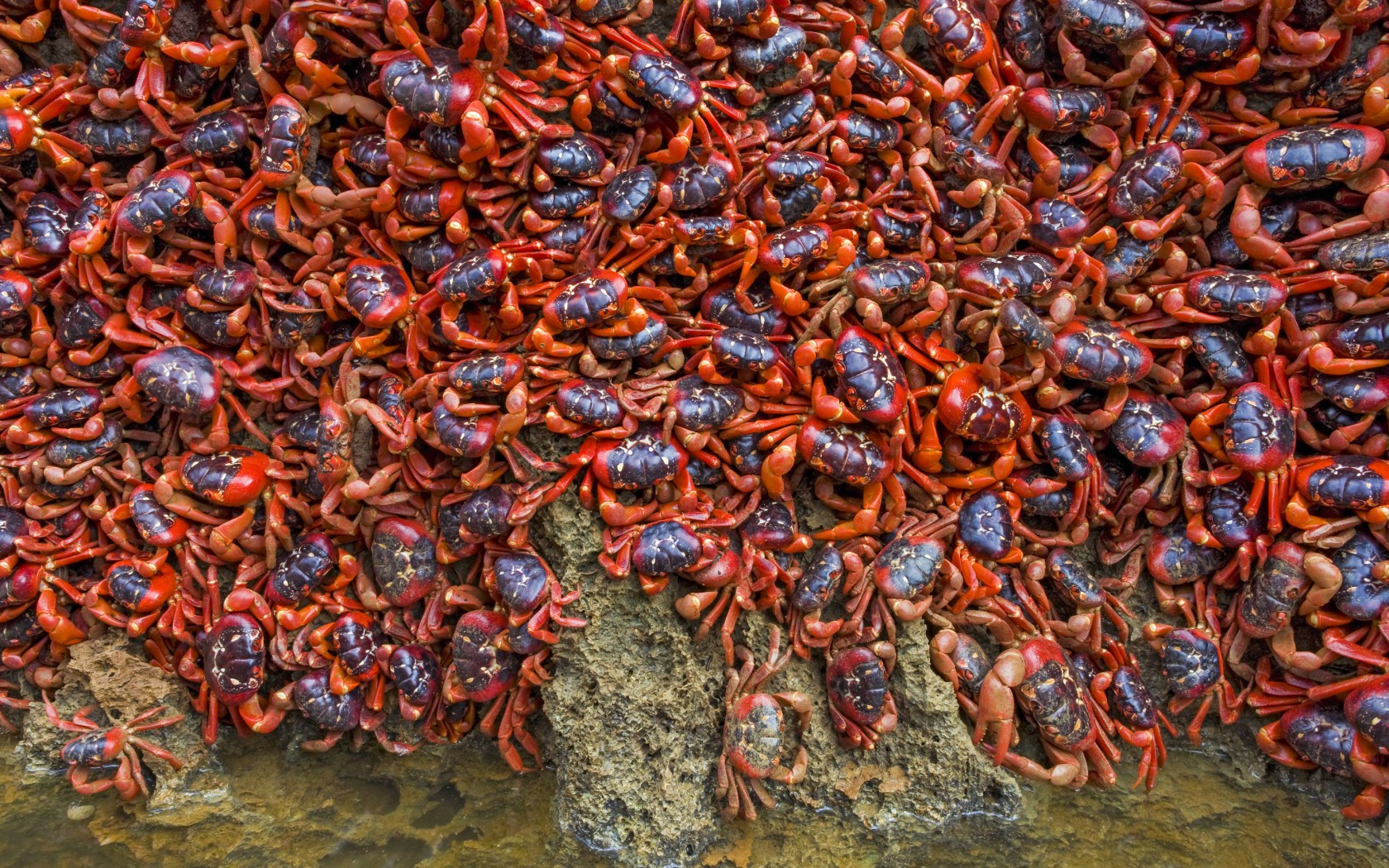
Accommodation
Unlike other tropical destinations, Christmas Island isn’t currently overflowing with tourists…which is great, as you can still easily find seclusion on the Island. Because of this, you don’t have hundreds of options when it comes to accommodation. In fact, there are only 8 hotels/lodges/cottages available, which means you probably do want to plan your trip in advanced. For all of your booking needs on Christmas Island, click HERE .
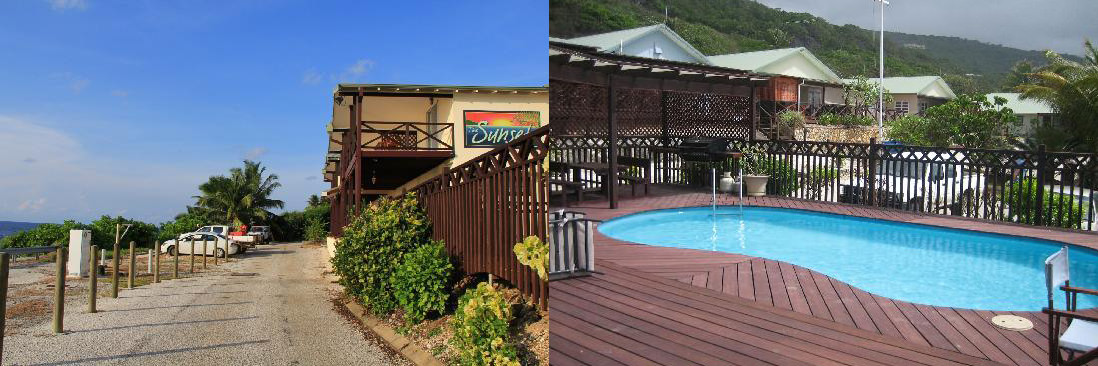
For my time on Christmas Island, I stayed at “The Sunset”, which was named aptly since it faced both the ocean and the sunset every evening. With a nice well-maintained pool, in-room AC (something I highly recommend) and friendly staff…there was a lot to like. On top of that, it was priced well in comparison to the other options on the island. Needless to say, I do recommend checking this one out! Here is a LINK to Trip Advisor for reviews.
Scuba Diving
While most people visit Christmas Island for the wildlife, the truth is that Christmas Island is one of the best kept secrets for diving in this part of the world. Because of its remote location and relatively low amount of commercial tourism, these waters are just about as pristine as it gets when it comes to epic dive locations. Here you not only have easy access to cave and wall dives just off shore, but chance encounters with 6m manta rays, over 600 species of fish and the gentle giant, the Whale Shark (From November – April).
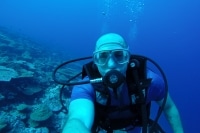
*All images taken with a GoPro Hero 3+
With an average water temperature of 80 F (27 C) and an average visibly that is simply incredible, it is a very pleasant place to dive. As a certified advanced diver (PADI) for the last 10 years, I was able to take a variety of dives during my week stay on Christmas Island (standard, cave, coral wall dropoff and more). At the end of the day, I have to say that Christmas Island offers some of the best diving I have done in a long time.
When it comes to island paradises with incredible wildlife, there are a few spots around the globe that are typically on everyone’s bucket list, such as the famous Galapagos Islands (where I worked for a year teaching photography for National Geographic). After spending some time on Christmas Island, it wasn’t a surprise that many are calling it “Australia’s Galapagos”. With such eco diversity with minimal human impact, the island is primed for a thriving ecosystem.
As we have talked about before, Christmas Island is known for it’s crab population. Here we have three main crab species…
Typically small and red, theses guys are everywhere on the island. They are the ones that make up the famous red crab migration that can start as early as November and run through January. However, even if you visit the island outside of the migration itself, you will found thousands of red crabs sprawled throughout the island. On roadways, down walking paths, near the beach…deep in the tropic jungle….literally everywhere.
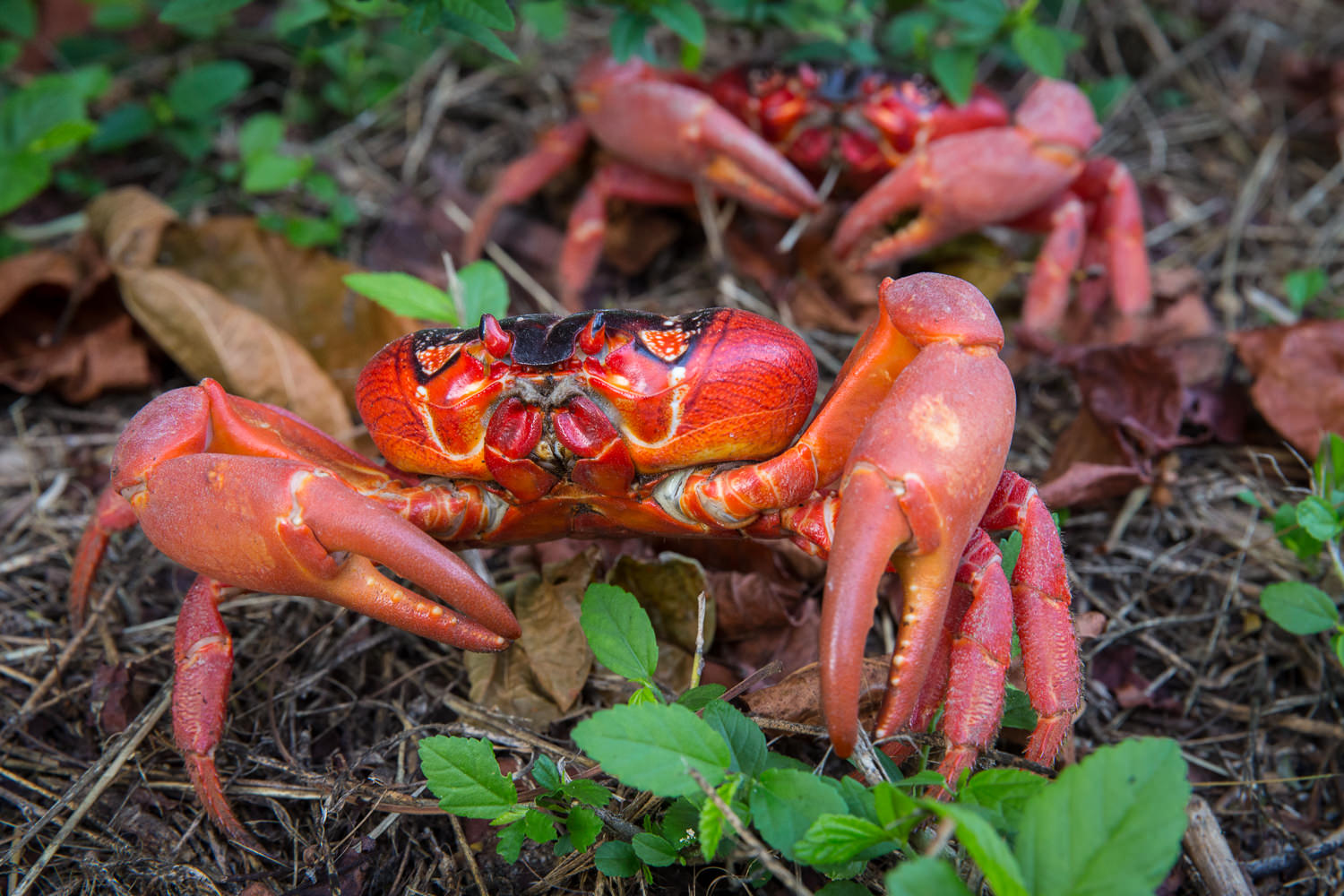
Similar to red crabs in shape, the blue grabs offer a nice color contrast to the more popular and abundant red crabs. They also happen to be a little beefier than their red crab cousins, although they are a little more shy and appear to have some sort of hair or fur on parts of their body, which is interesting for a crustacean and most likely a defensive feature.
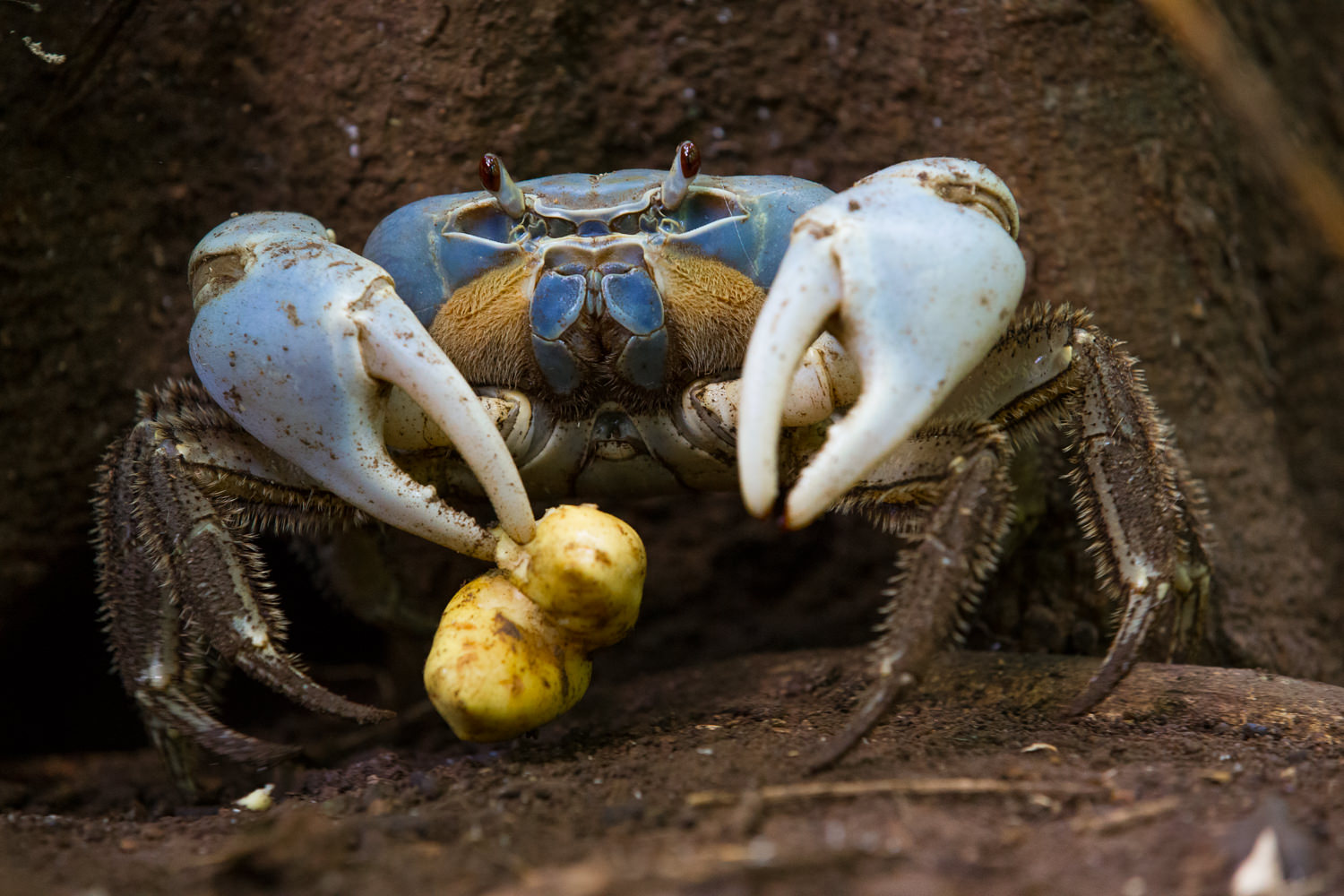
Robber/Coconut Crabs
These are your big boys and easily my favorite crabs on the island. They can grow up to a meter in size and they have massive pinchers that they like to show off. They have incredibly colorful shells and enjoy eating coconuts…especially on one of the beaches on the island. Coincidentally, because they are so tall…you can’t drive your car over them, as the under carriage will take them out. Slow and cautious is the way to go when driving..especially at dusk when they really start to come out looking for food.
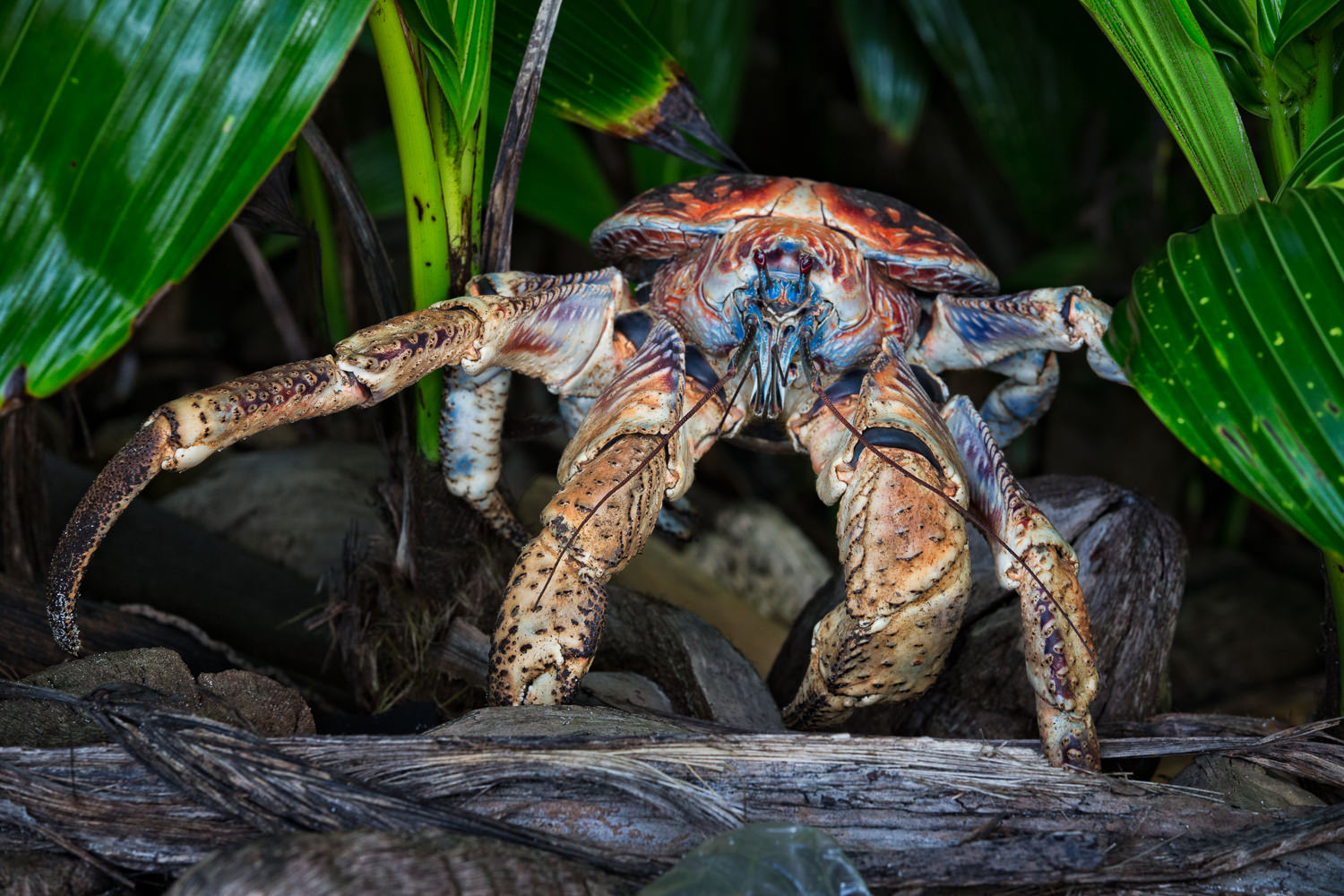
Tiny Green Crabs
While not as popular as the above crab species, I found a number of these little guys hiding in rocks. When I say small, I mean it, as these images were all shot with a macro lens.
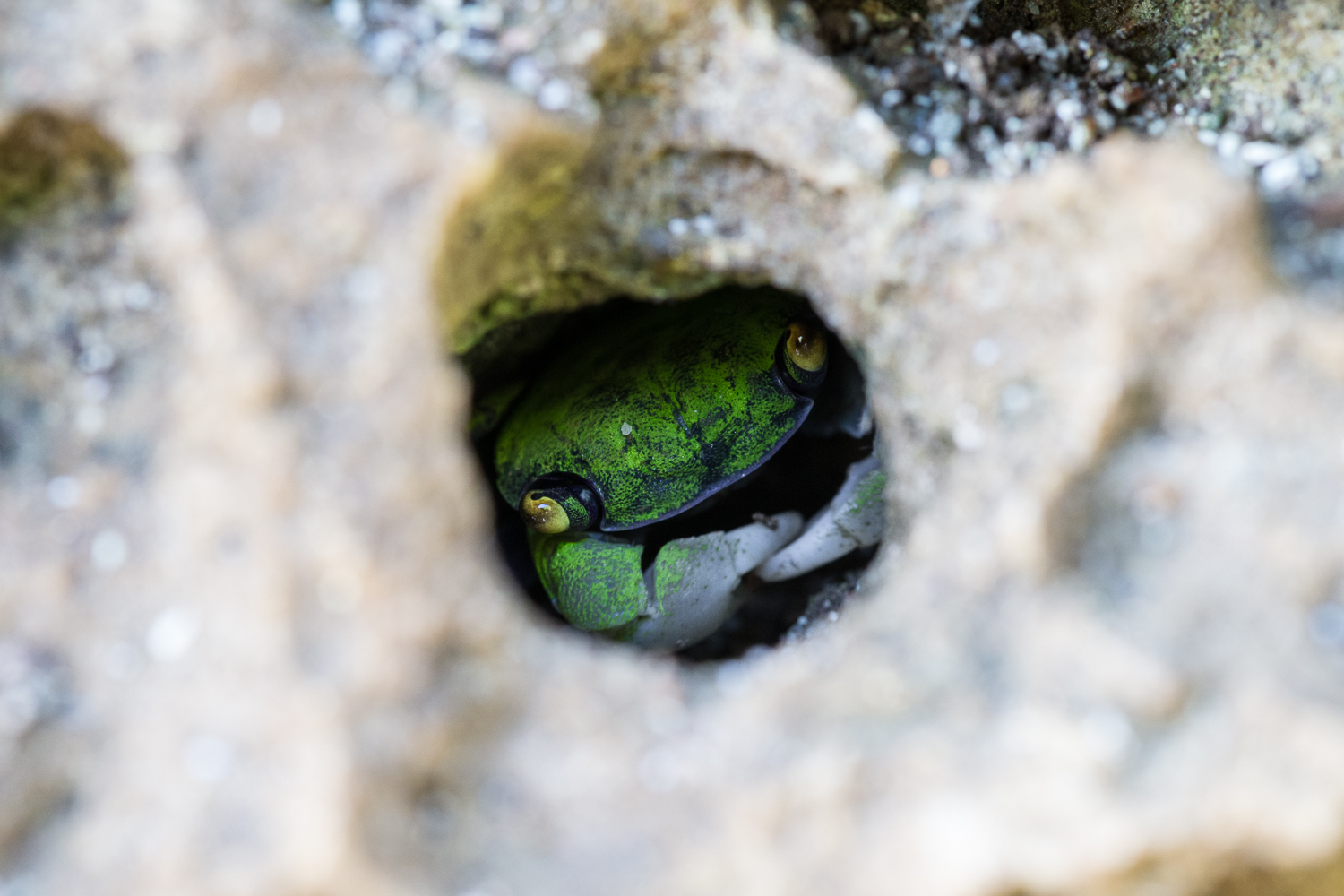
Among other things, Christmas Island also happens to be a bird watcher’s paradise. From Greater Frigatebirds to Brown Boobies to Abbott’s Boobies to Golden Bosuns and many more. Even though I am not a bird photographer, it was fun to capture a handful of these amazing creatures. Click on this LINK to check out a bird breeding and nesting calendar for the island.
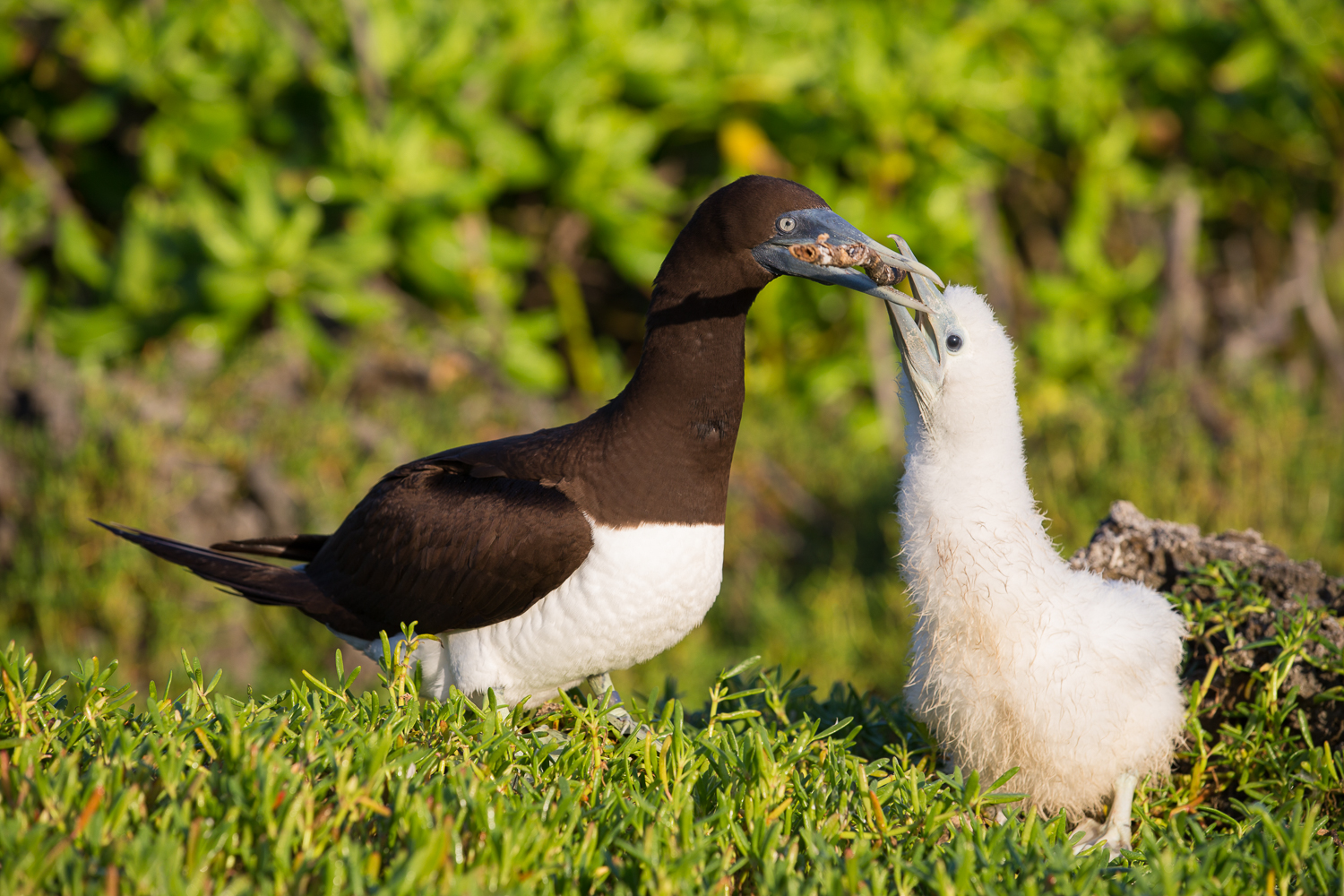
Places to Photograph
While Christmas Island is not a big island, there are a number of spots that are worth checking out at different times of the day.
Flying Fish Cove
Located near the only significant housing development on the Island, it is hard to miss Flying Fish Cove. Here you will find a small beach that runs down a portion of the cove as well as a number of rocks that can act as perfect foreground elements for your photos. Because the best views typically face North (ish), this spot can be good for both sunrise and sunset, depending on the weather. GPS location
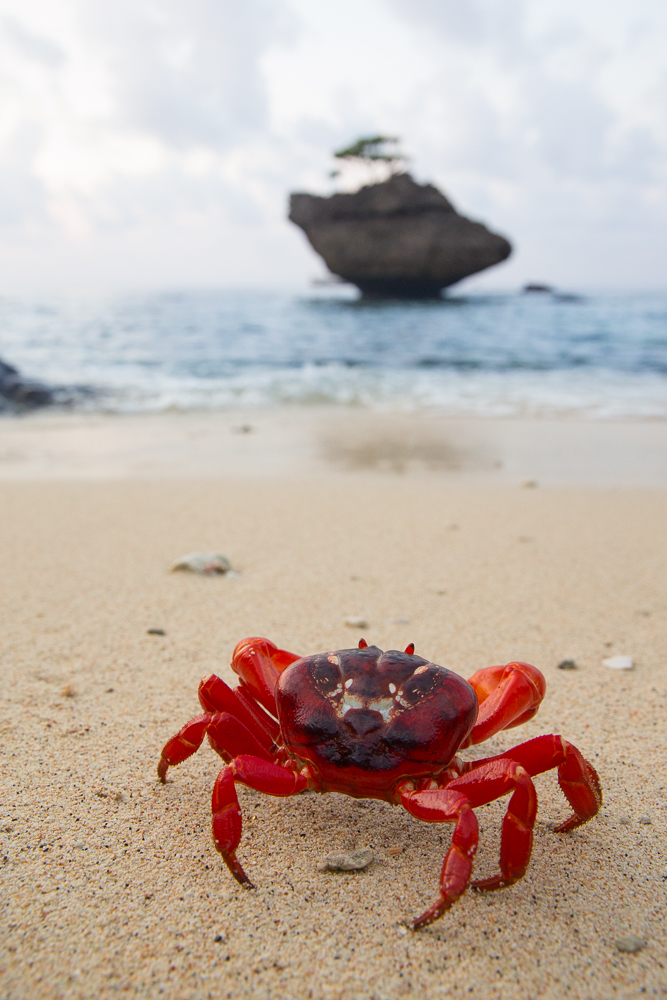
While there is a nice little beach alcove at this spot, my favorite views come once you leave the beach area and start exploring around the rugged limestone rocks along the coast. Just be careful, much like parts of Hawaii, these rocks are razor sharp and a fall would not be pretty! GPS location
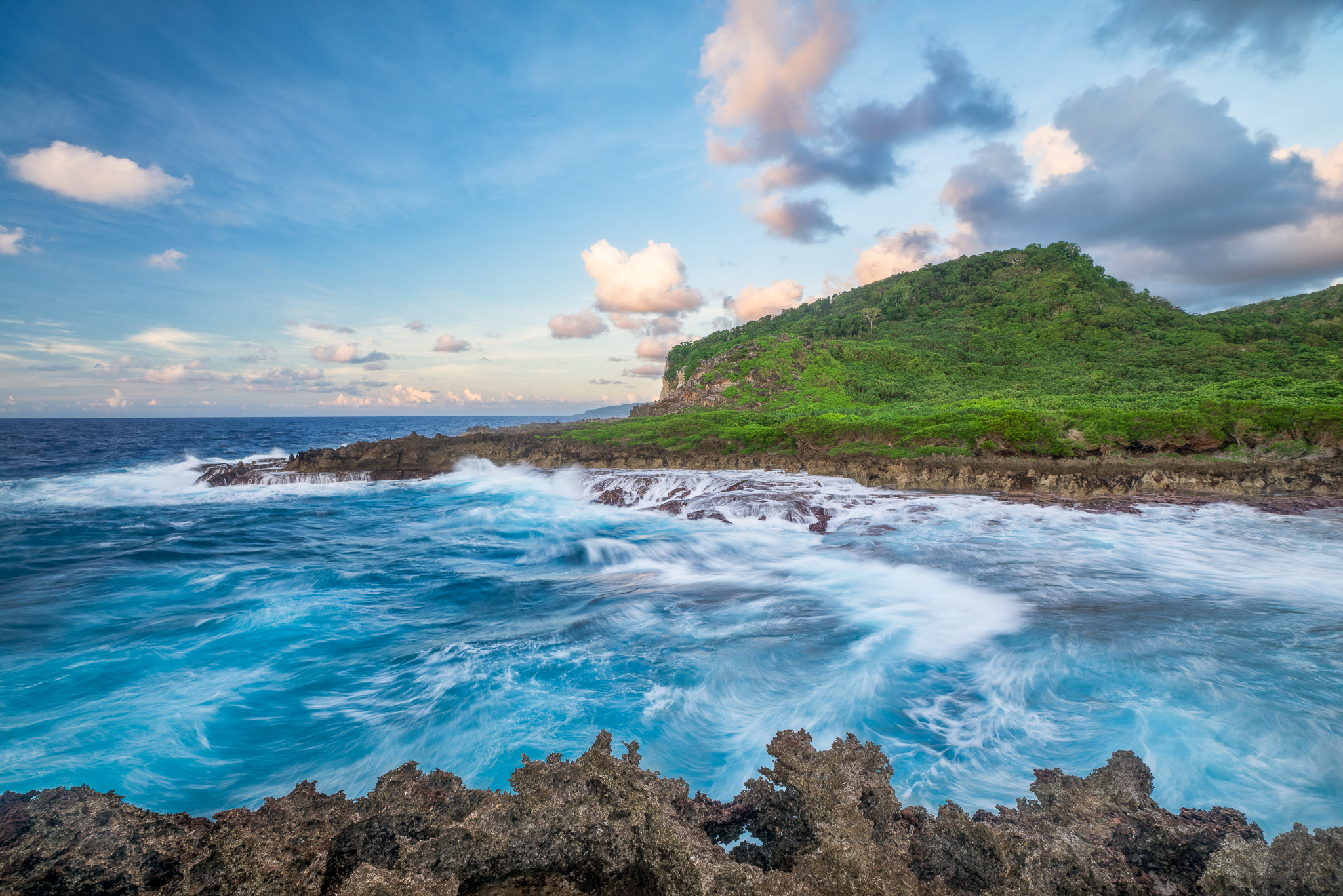
Ethel Beach
Located right next to Lily Beach, Ethel Beach is much smaller and different in nature. While Lily does have some sand and a protected alcove, Ethel beach is made up mostly of shells, with some sand mixed in. It is also much more susceptible to tidal shifts, which means that you often might find yourself getting your feet wet as the “beach” isn’t very deep to begin with. Is a nice sunsrise spot as the length of the beach faces North East. GPS location
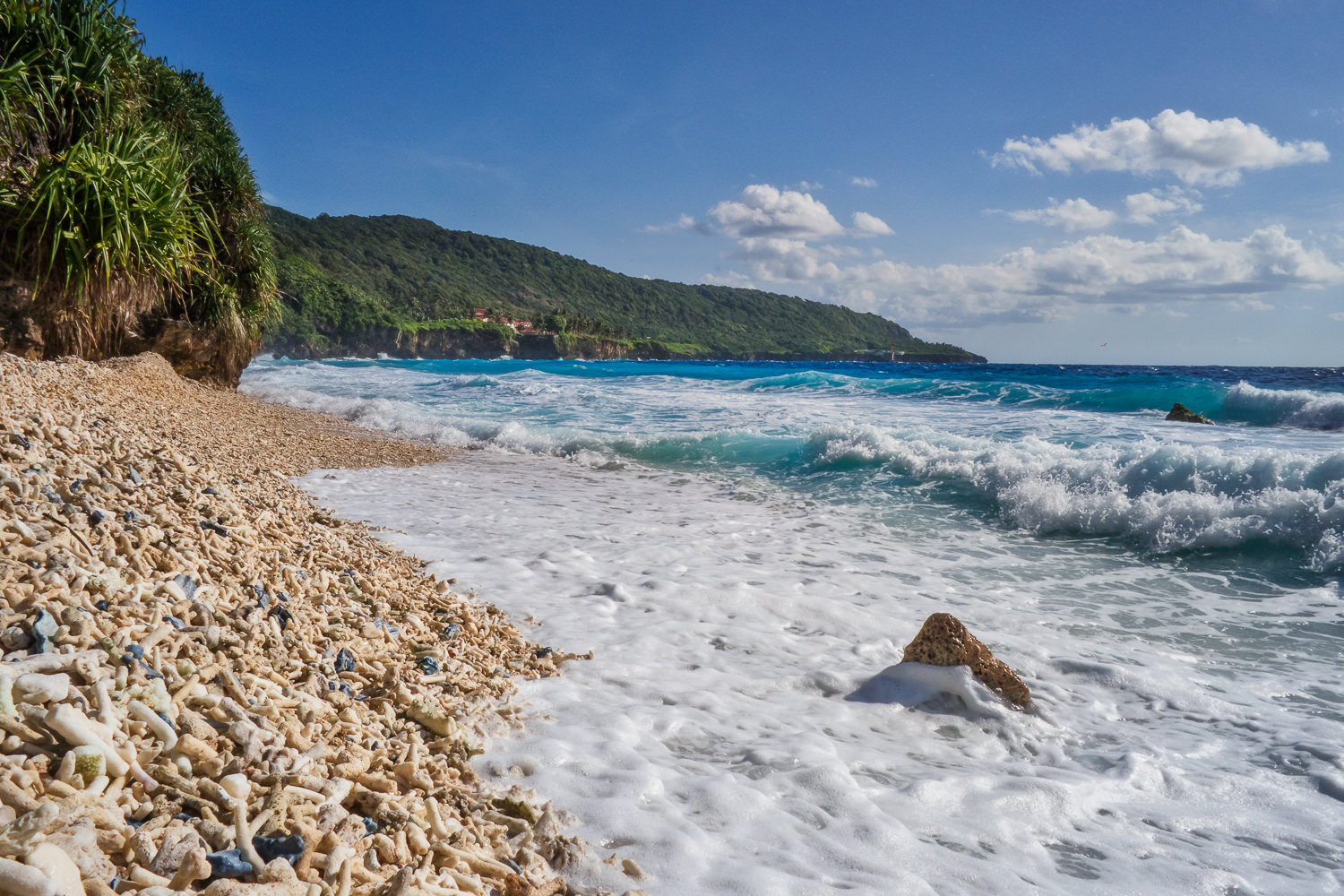
Just off one of the main roads on the island is a small coastal cave that is pretty impressive. After parking on the side of the road and enjoying a short 3 minute hike down a well marked trail that will most likely have any number of red crabs crawling all over it, you will find The Grotto. With the stalactites coming down from the roof of the cave and the crazy blue water found inside, it has been given the name “The Mouth of the Dragon”. While the water in the cave does come in with the ocean waves (which you can hear rolling in and out), it is also feed by a freshwater spring that helps keep the water itself cool, clear and blue. On hot days, there is nothing quite like taking a quick dip in The Grotto. GPS location
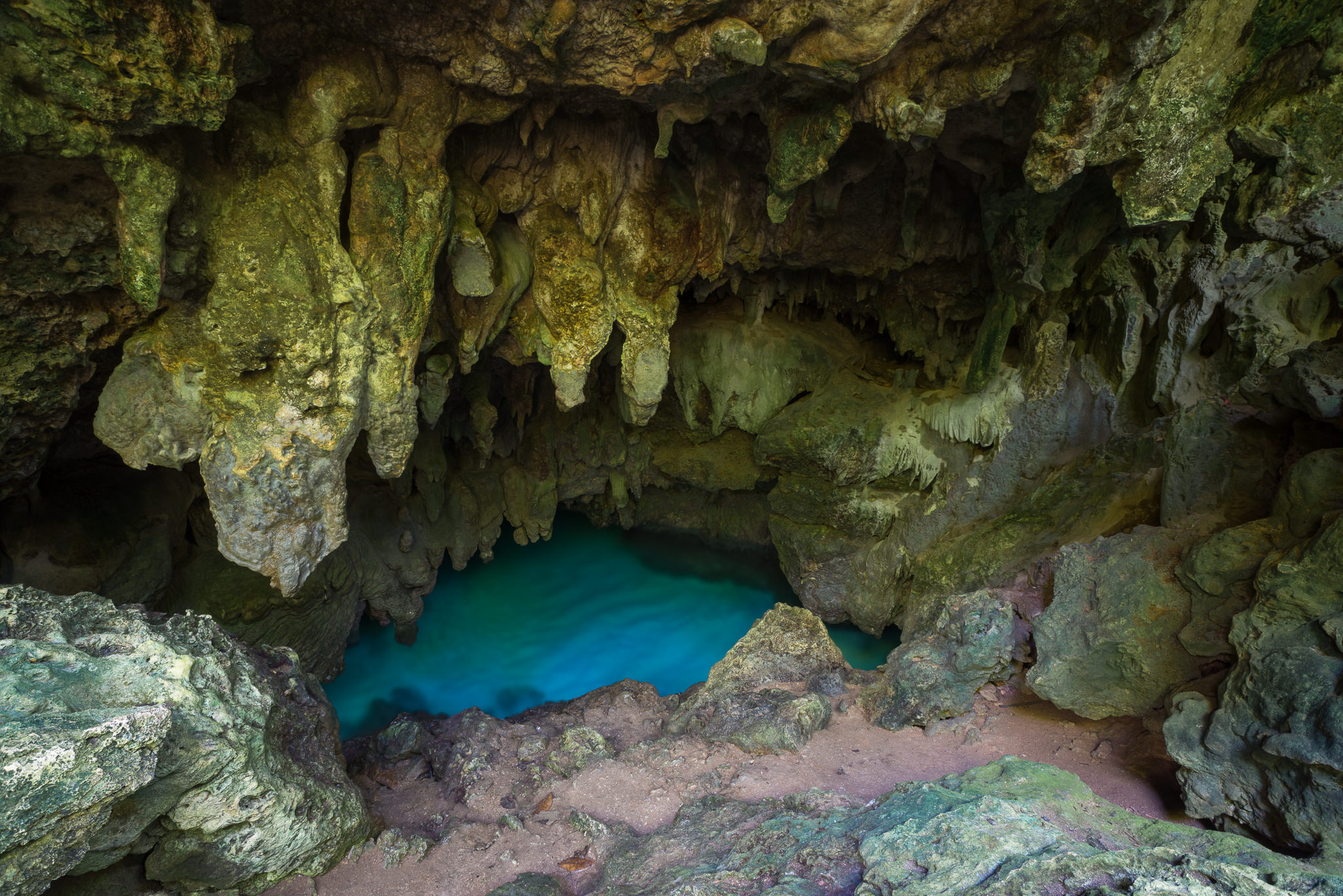
On the southern part of the Island, you can find the area known as “The Blowholes”. Here you find a large number of natural blowholes coming out of the limestone rock formations on the coast. As the tide and waves roll in, these holes direct the water moving through these chambers into a controled burst of energy as water is thrown up into the sky. The stronger the waves, the more powerful the blow holes tend to be. While you can visit this location at sunset to try to capture some gorgeous clouds off to the west, a mid day trip with abundant sunshine might provide mini rainbows over each of the blow holes doting the area. GPS location
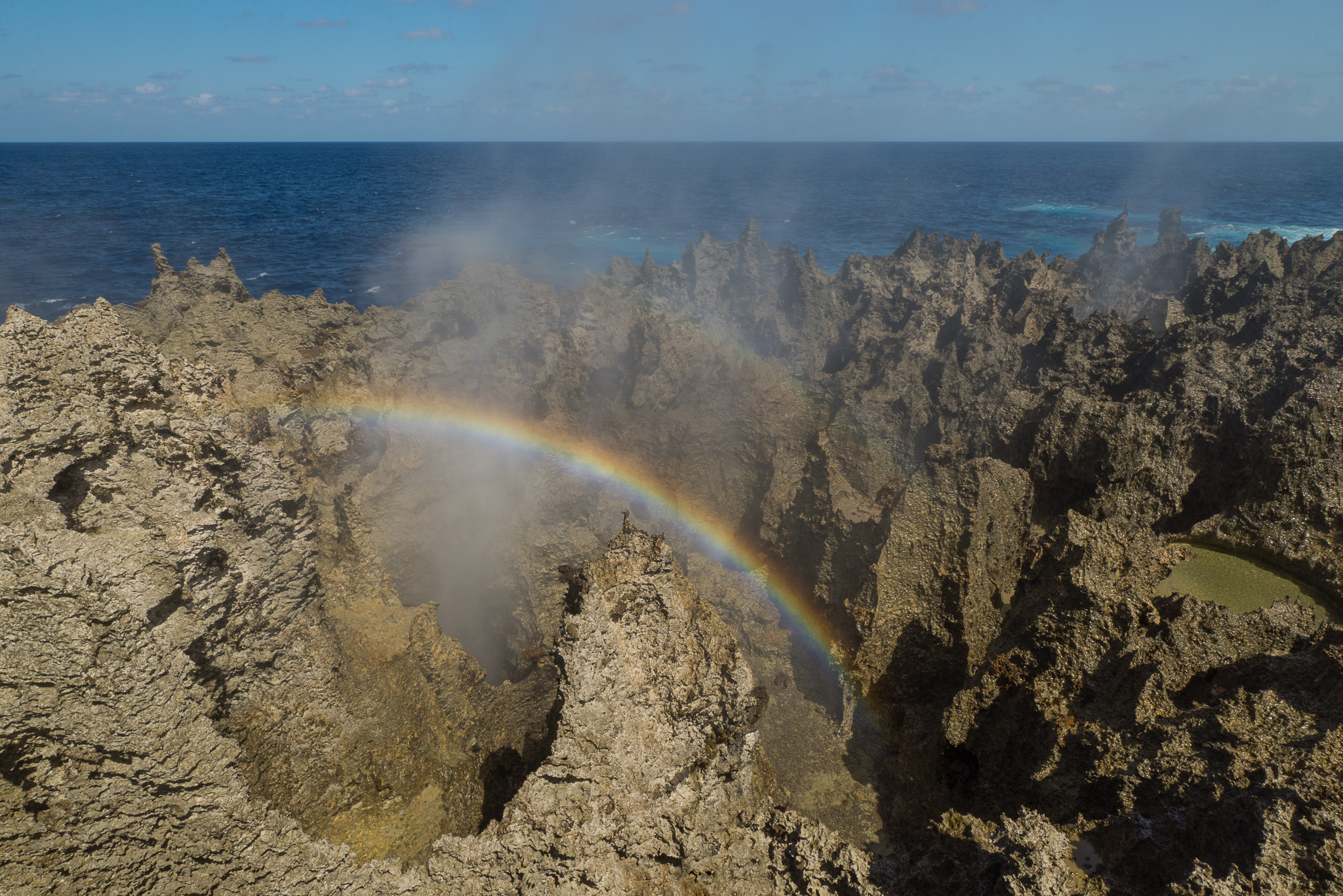
Dolly Beach
While Christmas Island is not known for its beaches, there is one main exception known as Dolly Beach. While it doesn’t necessarily have a pristine white sandy beach, it is one of my favorite spots on the island. The beach itself is beautiful, although ocean debris does wash up here because of the direction the beach faces mixed with the ocean currents. However what makes this place special is the abundance of small tide pools and limestone rock formations right at the water. It is truly a photographer’s paradise. Top that off with the fact that the beach is known for is Robber/Coconut Crab population, especially towards the back of the beach…near the coconut trees, and you begin to see why it is a favorite of mine. The caveat is that the road to Dolly Beach is relatively unpaved and requires an SUV or 4×4 of some kind. On top of that, once you get to the trailhead, it is roughly a 2km hike in along a mostly wooden walkway to get to the beach itself. Regardless, it is worth the effort if you get the chance, especially for sunrise…just don’t forget your flashlight! GPS location
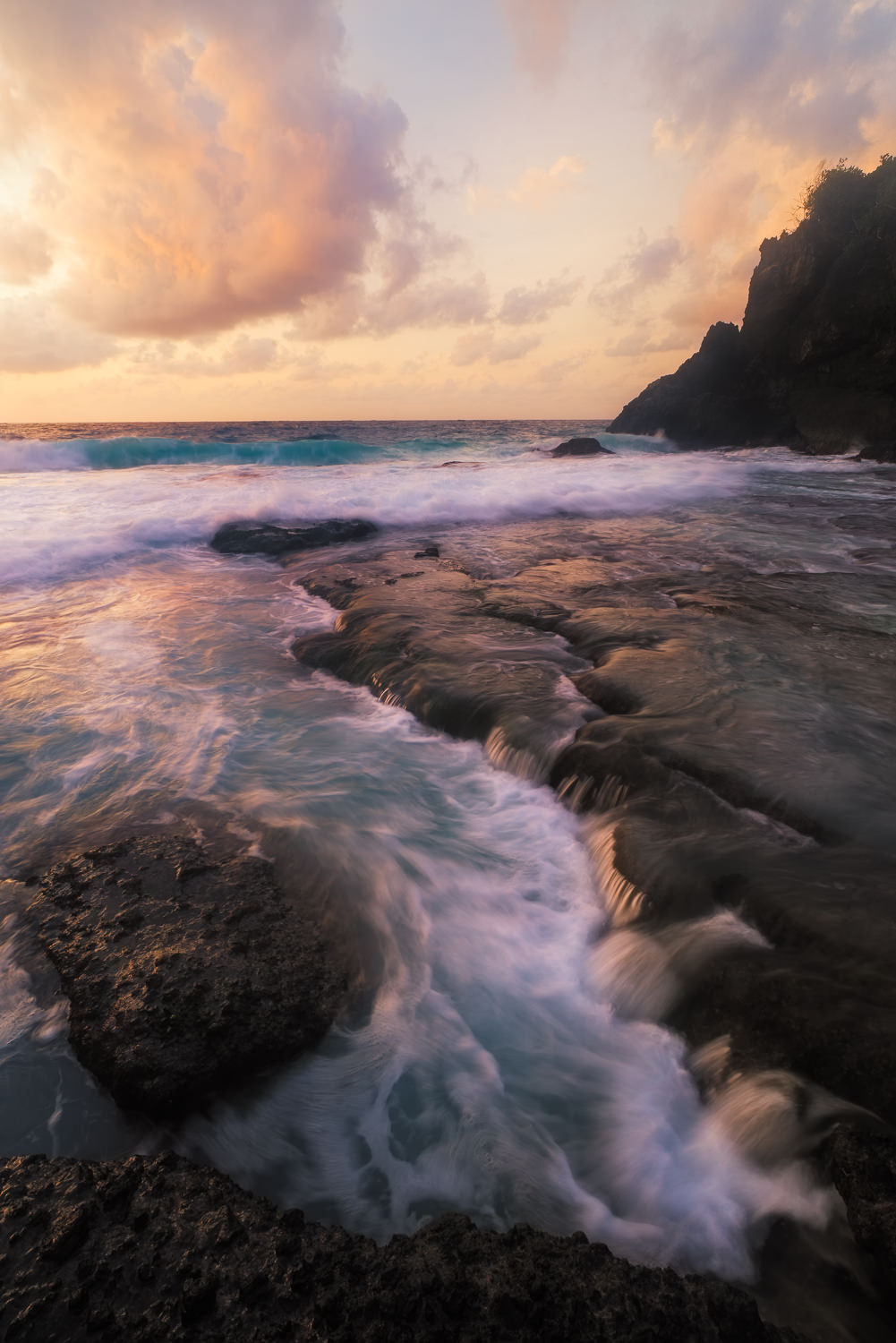
Martin Point Overlook
With excellent views of a gorgeous sea cliff mixed with a comfortable viewing platform and picnic area, Martin Point is a great location to check out for sunset or in the late afternoon. It is important to note that a 4×4 is required to get to the trail-head, which leads you to a very short walk up to the point. Additionally, if you bring food for a late afternoon picnic, make sure that everything is in sealed containers. Coconut Crabs are known in this area to skip the pleasantries of introducing themselves before feasting on whatever goods you might of brought with you. GPS location
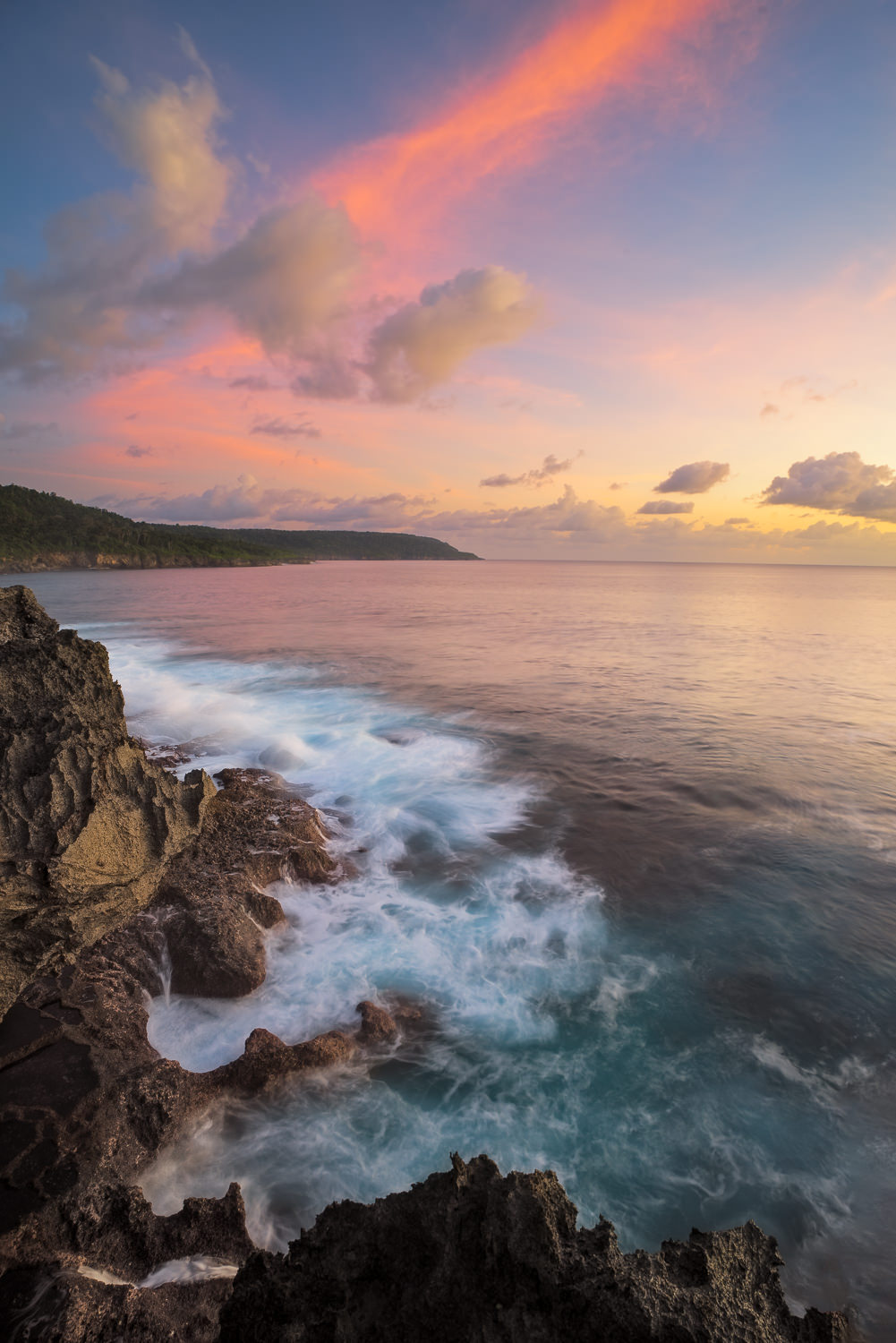
Image Gallery
In addition to all the places listed above, Christmas Island is full of tons of incredible random photo opportunities.
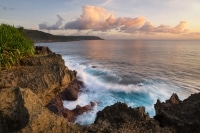
Final Thoughts
As you can see, when it comes to Christmas Island there is a lot to love. Between the wildlife, gorgeous landscapes, friendly locals and excellent diving…it is hard not to walk away from this place already planning your second visit.
While it is certainly remote, could use a bit more tourism infrastructure and is not as easy to get to as other tropical destinations…it is these characteristics that make Christmas Island truly unique. As I said above, if you are looking for white sandy beaches and beach resorts with hundreds of other tourists…this isn’t the place for you. But if you want to check out an island paradise that resembles how The Galapagos Islands might of looked 30 years ago, start planning your trip to Christmas Island NOW!
About the Author
Colby Brown
Additional articles worth checking out....
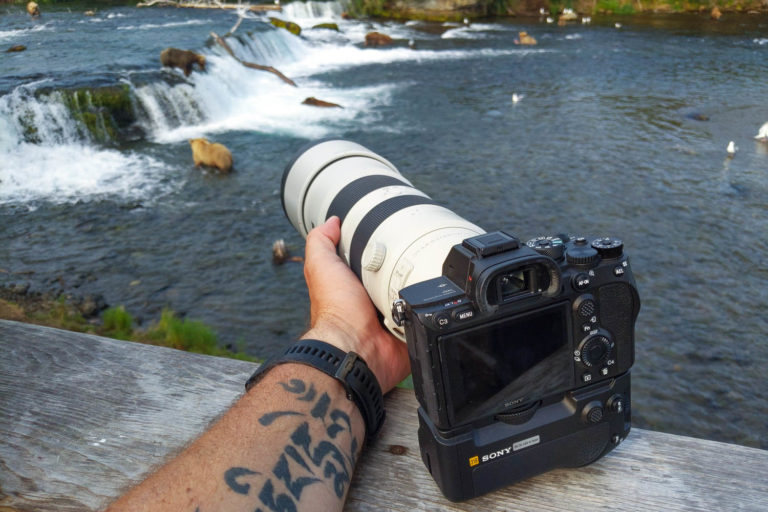
Taking The New Sony a7R IV to Alaska
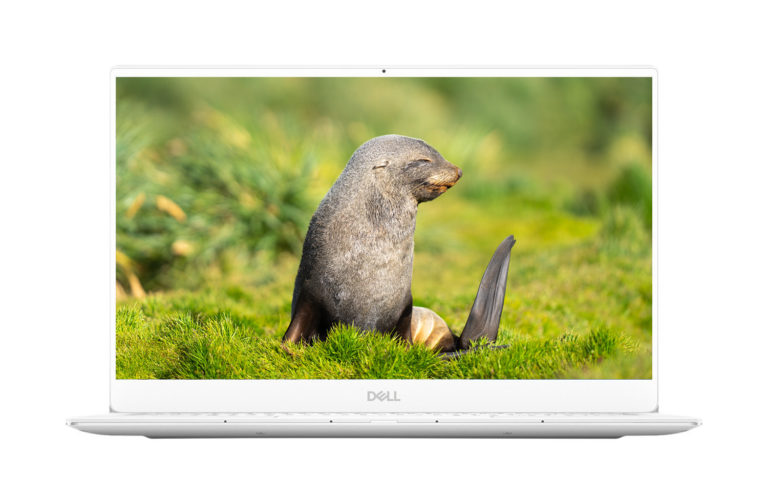
Gear Review – Dell XPS 13 9380
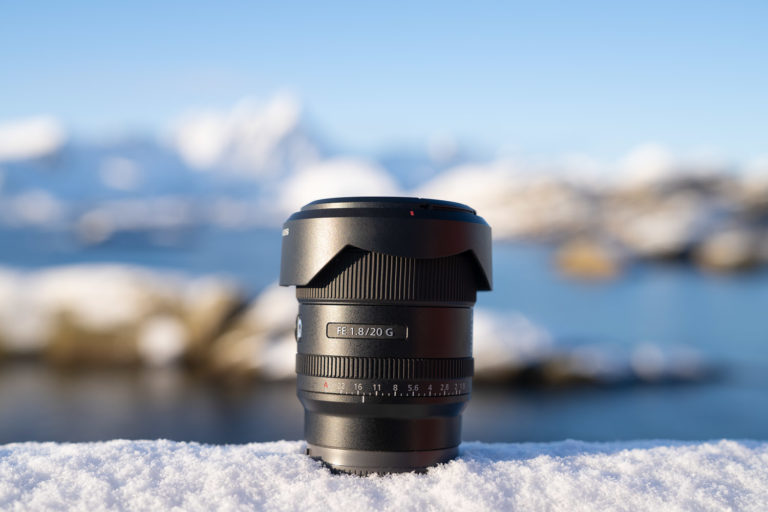
Gear Review: The New Sony 20mm f/1.8 G Lens

Sony RX0 II Review
Upcoming photo workshop adventures..., patagonia photography workshop adventure.
April 1st – 10th, 2025 Patagonia is one of the most wild, beautiful & dramatic mountain ranges on the planet. We split our time between the incredible Torres del Paine National Park in Southern Chile and Los Glaciares National Park in Argentina, home to both Cerro Torre and Mt. Fitz Roy.
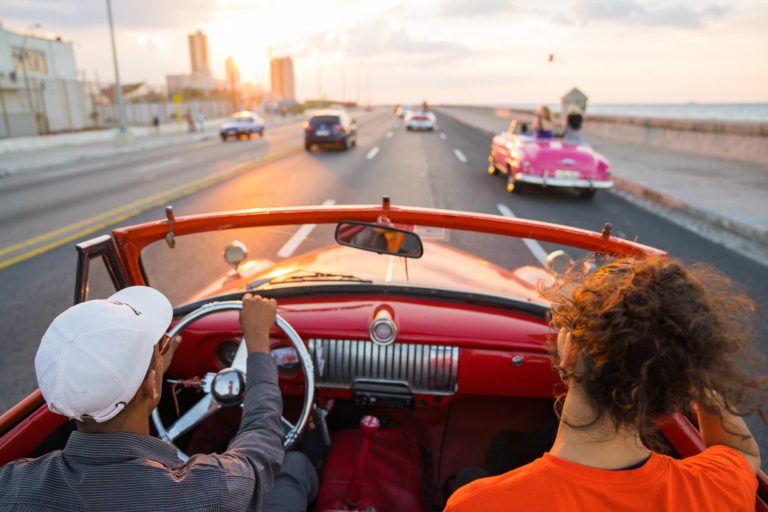
Discover Cuba
February 1st – 8th, 2025 With this adventure, our focus will be on capturing the beauty of the Cuban people, culture, and architecture throughout the Island of Cuba. From the classic cars and ocean side highways in Havana to the cobblestone streets of Trinidad and everything in between. With so much uncertainty in the US/Cuban relationship, NOW is the time to go!
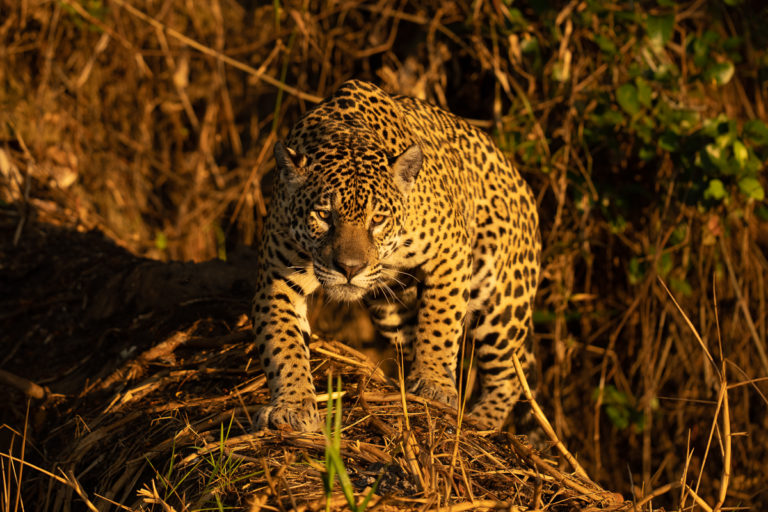
Wildlife Photography Workshop in Brazil Jaguars of the Pantanal
July 31st – Aug. 7th, 2025 The Pantanal region of Brazil is known as the land of the Jaguar. Nowhere else on Earth is there a higher concentration of these elusive big cats than this remote region of Southern Brazil, close to the Southern Amazon Basin. In addition to Jaguars, you will see Caimen, Capybara and a wide assortment of birds.
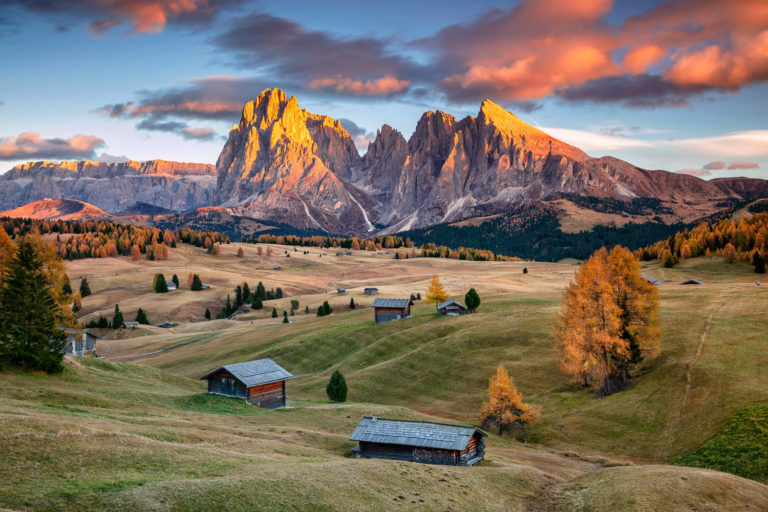
Dolomites Photography Workshop
October 19th – 26th, 2024 Come join us on an adventure of a lifetime to the amazing Italian Dolomites. We will photograph and explore incredible mountain peaks, beautiful reflected lakes and gorgeous fall colors as we move throughout one of the most impressive mountain ranges in the world.
Leave a comment
Don't miss out.
Join 34k other photographers who have signed up for my monthly Newsletter full of gear reviews, workshops announcements, giveaways & MORE!
Christmas Island: 10 Amazing Things To Do On This Hidden Indian Ocean Gem
Tucked away in the shimmering Indian Ocean, Christmas Island is a hidden gem destination teeming with nature, beauty, and exciting adventures.
- Christmas Island offers a range of exciting activities including water adventures, exploring the capital Flying Fish Cove, tasting delicious food, and enjoying incredible views from lookouts.
- Visitors can witness the fascinating blowholes on the south side of the island, explore the streets of Flying Fish Cove, shop for local crafts, and savor diverse cuisines including Malaysian, Western, and Chinese.
- Christmas Island boasts stunning lookout points that provide breathtaking views of rainforests, cliffs, beaches, and coastlines. History enthusiasts can also tour the Tai Jin House Museum and learn about the island's past.
Christmas Island is a scenic and magnificent island tucked away in the Indian Ocean with a fascinating history. It was first sighted by the Europeans around the 1600s and was named on Christmas Day in 1643 by Captain William Mynors, hence the name.
The island is an Australian external territory and is made up of forests and imposing limestone cliffs with coves and small beaches in between them. Hence, the island offers an array of exciting activities for visitors, earning it a place among the most beautiful tropical islands near Australia .
From water-oriented adventures like swimming, snorkeling, and scuba diving, to watching the migration of crabs and birds, here are some of the best things to do on Christmas Island.
A Complete Guide To Scuba Diving In India (An Underrated Dive Destination)
10 see the blowholes of christmas island, the famous blowholes on christmas island make loud whooshing sounds.
Blowholes are popular on Christmas Island and are fascinating to behold. These blowholes are formed due to the porous nature of some limestone formations and caves. So, when the ocean’s tide rises, water fills up the limestones and caves from their bases, and pressure causes them to eject waters dramatically into the air from openings at their top.
On the south side of the island, there is a long boardwalk along the coasts where one can spot these blowholes in action as they make loud whooshing sounds.
- Location: Shire of Christmas Island 6798
9 Explore Flying Fish Cove
Flying fishing cove is the capital of christmas island.
Beyond water-based adventures and beaches, there are also incredible things to do in Flying Fish Cove - the capital of Christmas Island. Visitors can take a walking tour of the streets of Flying Fish Cove, interact with friendly residents, taste BBQs, and even hit the gym.
It is also fun to shop for some clothing and gift items at the Christmas Island Supermarket or grab local craft items at one of the local shops. Also, the island's visitor information center is a great stop for first-time visitors to learn more about the island, including relevant information on what to do.
- More exciting things to do at Flying Fish Cove: Snorkel, dive, and relax on the beach
8 Taste The Best Food On Christmas Island
Different cuisines are available on christmas island, including malaysian, western, and chinese.
A visit to Christmas Island is not complete without tasting the island's delicious dishes, which are a mix of Australian and Asian flavors.
The Flying Fish Cafe is an ideal place to taste some of the best food here like laksa soup and curry puffs. CI Bakery is another top-tier destination for tasty bread, egg rolls, donuts, and even curry puffs.
- Best places to eat at Christmas Island: Poon Saan Coffee Shop, the Flying Fish Cafe, Golden Bosun Tavern
7 Enjoy The Best Views On Christmas Island From Its Lookouts
Christmas island has many lookout points that offer incredible views.
One of the best activities on Christmas Island for tourists is to observe the gorgeous scenery from a lookout. From these lookouts, one will be able to see everything from rainforests to coves, cliffs, mountains, beaches, and coastlines.
Some of the best lookouts on Christmas Island include Territory Day Park Lookout, Golf Course Lookout, Martin Point Lookout, and Margaret Knoll Lookout.
In addition to the views, these elevated lookouts offer visitors the opportunity to spot elegant birds like the Frigate, Imperial Pigeon, Nankeen Kestrel, and Emerald Dove.
6 Tour The Tai Jin House Museum
This museum was once the home of the british administrator of christmas island.
History lovers can learn about the rich history of Christmas Island at the Tai Jin House Museum. The museum features relics and exhibitions as well as guided tours to give visitors a detailed look at the Island's past.
In addition to the historical exhibitions, this museum sits atop a cliff that offers bewitching views of the Indian Ocean and Flying Fish Cove.
- Hours: Sun-Sat 12:00 PM - 3:00 PM
Travelers walk to Tai Jin House from Territory Day Park. Also, visitors can see naval guns and buildings set up to defend the island during World War II by continuing their walk past the house.
Lesser-Known Islands Around The World Worth Your Vacation Budget
5 hike to the hughs dale waterfall, hike the short highs dale track to one of the most beautiful waterfalls on christmas island.
The Dales region of Christmas Island National Park is one of the best places to visit on Christmas Island, courtesy of the waterfalls there. This area is wet all year round and the waterfall is permanent, so visitors can catch its magnificent sights any time of the year.
Getting here is via a 30-minute’ walk on the short Hughs Dale Track , which includes sights such as walking crabs, and Tahitian chestnut trees.
- Hike Length: 0.75 km
- Difficulty: Easy
- Time to Complete: Around 30 minutes
Once at the waterfall, visitors can immerse in its beauty by showering under the cascading waters, which are clean and safe for drinking.
4 Explore Christmas Island National Park
This national park almost occupies the entirety of christmas island.
Christmas Island National Park occupies around two-thirds of the island's land area. Hiking is the main activity in the park with well-marked trails like Martin Point Walk that leads to a viewpoint on a cliff, where one can capture the island's best sunset views. Another scenic trail to explore the park's rainforests and coastal views is the Territory Day Park , which is about 0.6 miles (1 km).
In addition, some of Christmas Island's beaches like Dolly, Merrial, and Winifred Beaches are inside the National Park to explore, with side attractions like sea turtle and crab sightings.
- Top things to do in Christmas Island National Park: Hiking, wildlife watching, beach hopping, swimming
3 Watch The Annual Migration Of Red Crabs
Christmas island is the only place in the world where people can watch red crabs migrating in their millions every year.
Christmas Island has the largest diversity of land crabs more than any island in the world, and Red Crabs are the most popular of these crabs. If visiting in October just as the wet season begins, visitors can watch the annual Christmas Island Red Crab migration and be stunned at the incredible occurrence.
It is an amazing sight that features millions of Red Crabs moving from the forest to the ocean to breed and release eggs into the water. The migration is considered a wonder and a must-see for every visitor.
- Best places to watch the Red Crab migration on Christmas Island: Ethel Beach, Flying Fish Cove, and Greta Beach.

2 Go Beach Hopping And See All Of Christmas Island's Best Beaches
Christmas island is home to some of the most beautiful beaches in the world.
Christmas Island is worth visiting for its beaches especially; in fact, it's one of the reasons Australia is among the countries with the best beaches in the world (as it's an external Australian territory).
The island is filled with enchanting white sand beaches at the backdrop of magnificent cliffs and coves. Hopping these beaches to capture some of the finest views of nature and the ocean will expose visitors to some of the island's most beautiful areas.
Some of the best beaches on Christmas Island to see include Lily Beach, Dolly Beach, Ethel Beach, Greta Beach, Flying Fish Cove, Winifred Beach, and West White Beach. Across these beaches, visitors can stroll on their snow-white sandy shores, enjoy picnics, sunbathe, watch birds, and swim in the ocean.
On some of the beaches, there are shallow rock and grotto pools to swim in or just float on the waters.
- Best beaches on Christmas Island: Lily Beach, Dolly Beach, Ethel Beach, Greta Beach, Flying Fish Cove, Winifred Beach, West White Beach.
Here Are 10 Best Things To Do On The Unique Island Of Samoa
1 enjoy a watersports adventure in flying fish cove, christmas island is surrounded by water, so there are a lot of water-based activities to do here.
Christmas Island is among the most beautiful islands in the Indian Ocean ; that means water-based adventures here are sensational. The Flying Fish Cove in the heart of the island is one of the best places to engage in watersports activities.
With several dive sites in this central region of the island, visitors can dive into the water for snorkeling, scuba diving, and swimming with dolphins and sharks. For visitors who prefer not to immerse in the water, surfing the waves, paddleboarding, and fishing in the ocean from a boat are alternate options.
- Flying Fish Cove Watersports and Dive Operators: Christmas Island Wet 'n' Dry Adventures , Extra Divers Australia
Martin Symington | 21 December 2022
Yes, christmas island does exist.
No, Santa doesn't live there. But red crabs do, and they migrate en masse to the sea every autumn creating a spectacular natural phenomenon... and a few traffic jams

Before you begin...
Listen to Martin's Christmas Island adventures be brought to life in this episode of the Wanderlust: Off the Page podcast
Listen on Spotify , Apple Podcasts , Amazon Prime Music and other steaming platforms .
At first the fork-tailed shapes reminded me of pterodactyls, gliding low over the rainforest with huge wings outstretched. Soon the birds were zooming on the ocean squalls like jets, just feet above my cliffside lookout point. Repeatedly they tore at the tails of red-footed boobies, causing the smaller birds to drop the fish from their bills, which these hovering heisters then caught mid-flight. As vicious as it was captivating, this display of nature in the raw left me feeling a bit unsettled.
“Christmas Island frigatebirds are kleptoparasitic,” explained guide and wildlife expert Lisa Preston, introducing me to a wonderful word as well as to one of the island’s many endemic species. You would never even guess that these flying menaces were seabirds at all, with their poorly webbed claws and lack of oily feathers. But why swim or dive for food when you have evolved perfectly to steal other creatures’ prey?
It was Charles Darwin who first posited that remote islands gave rise to a greater number of endemic creatures, and while he never found his way to Christmas Island, he would have discovered a rare muse in this dog-shaped outpost in the Indian Ocean. Measuring just 19km from nose to tail, its isolation is compounded by the fact that it went unsettled until the late 1800s – a feat in itself. It didn’t even have a name until a passing English sea captain, William Mynors, christened the volcanic speck on 25 December 1643.

A male frigatebird flies overhead in search of a partner to mate with (Shutterstock)
Even today, few find their way here. Until recently, the only way to reach it from the UK was via Perth, which meant a crazy four-hour flight back the way you came. But now a weekly hour-long hop can be chartered from Jakarta (itself now a direct flight to London with Garuda International) has finally opened up the island to European visitors.
The main lure is undoubtedly the territory’s unique wildlife, from its mercenary frigatebirds to the Christmas Island red crabs whose annual migration from forest to ocean so awed the naturalist Sir David Attenborough that he named the phenomenon one of the most mesmerising that he’d experienced. In 2018 it was 375 years since this wild outpost was first christened, and with new connections off ering the chance to rediscover its biodiverse wonders for myself, I set off in search of a Christmas miracle.
Starting over
It wasn’t until 1888 that Christmas Island was finally settled. Then a part of the British Empire, the discovery of rich phosphate deposits proved irresistible to prospectors. But it didn’t remain in British hands long, and the island has been an Australian territory since 1958, despite lying far closer to Indonesia (just 375km away).
Today, the territory’s main settlement of Flying Fish Cove still owes its character to the activities of the first colonials. As I wandered the capital, I spied a huge yellow cantilever crane stretched over the harbour, ready to load ships with phosphates. Mining remains the island’s economic mainstay, but that is slowly being phased out to protect arguably its most precious resource: the environment.
In town, industry and island life seemed to meet around the main jetty of this laid-back melting pot, where I found scattered Taoist temples and a golden-tipped mosque. Ethnic Malays and Chinese, the descendants of the workers brought here under colonial rule, make up the bulk of the population (some 85 per cent) while white Australians – who still refer to themselves as ‘Europeans’ – account for the rest. As I walked the beachfront, I passed a smattering of small hotels, ready to welcome the handful of tourists who made it this far, and spied a communal barbecue station where one grill was reserved purely for halal.
I was on my way to find the town’s sole surviving relic of the colonial age, the stately green-and-cream former governors’ residence that stood strategically on Smith Point headland. I wound up a path through tangles of undergrowth to ‘Buck House’, as the locals call it, a grand mansion with commanding views over the cove. I imagined the uniformed overlords that would have once stood sipping G&Ts on its balcony. The building is now a cultural museum, though its most arresting exhibit was a tree made by the islanders, created using jetsam such as plastic dolls, flip-flops and toothbrushes – the true relics of civilisation.
Next, I hired a battered, salt-encrusted 4WD to head for the territory’s furthest points. The island rises towards the interior in narrow terraces like a wedding cake, reaching a wide plateau about 200 metres above sea level. Outside town, the landscape quickly turned a chalky white, scarred by the open-cast phosphate mines. But this changed completely at the boundaries of Christmas Island National Park, as the soil became a rich, reddish colour.
The national park occupies two-thirds of the island but its forest – or ‘jungle’, as the locals call it – does not reveal its secrets readily. In one place I stumbled on the remnants of a ‘hidden garden’, where the island’s indentured workers had once grown papaya and chilli pepper plants in the clearings. But this was just the tip of it.

Crabs migrating in Christmas Island (Shutterstock)
What's in a name?
I followed trails leading to concealed beaches named after the wives of former governors and administrators, such as Ethel and Winifred – to me, they sounded like grumpy great-aunts. An hour’s hike from the nearest drivable path, I reached Dolly Beach. Its cove, cradled by jungle-draped cliffs, was bisected by a freshwater stream and swept with the tractor-like flipper tracks of nesting sea turtles. I walked across fine sand that was curiously squeaky underfoot and strewn with driftwood and coconuts.
Here I lay on the shore with my feet in the surf, pondering the plight of five Dutch sailors shipwrecked here in 1855. With an abundance of seafood, coconuts and wild fruit washed down with fresh spring water, the castaways lived here for a year before being rescued. Why, I wondered, would they ever have wanted to see a windmill or clog again?
While the women were remembered by beaches, the male colonial bigwigs gave their names to the island’s extremities, such as Jackson Point and Anderson Dale. There were several ‘dales’ here, forested valleys veined with streams and christened with old-world names. I felt a strange sense of magic at Hugh’s Dale Waterfall, where a build-up of calcium carbonate deposits on the moss and ferns under its spray had effectively fossilised them. This exquisite natural sculpture looked so feathery and delicate that I hesitated to touch it while I stood cooling in the cascade. When I did, I found it was rock hard.
After drying off, I took to the forest with my field guide and binoculars to look for some of the endemic species that draw birders from all over the world. Eventually, I spotted a gorgeous golden bosun winging over the treetops with an otherworldly grace, its long tail feathers streaming behind, the glistening relic of another age.

Dolly Beach on Christmas Island (Alamy)
And red all over…
Like the tortoises of the Galápagos, there is one creature that stands out amid all other wildlife here: the crab. There are 20 species of land crab on Christmas Island, but it is the reds that make all the headlines, and have had perhaps as big an influence on the island’s history as its human settlers.
Red crabs were everywhere I looked – never mind that it wasn’t even migration season. These bright-scarlet crustaceans were a constant presence: scuttling across roads, sidling along beaches. I even saw a few in the settlements, scurrying boldly around gardens and verges, unfazed by humans. There are some 45 million of them here, though the vast majority burrow in the damp, dappled rainforests of the National Park; it was there that I headed next with Lisa, the island’s main guide for 15 years.
As we drove along the bush tracks, time and again we stopped to coax oblivious crabs out of our path while Lisa elaborated on their mysteries. “Nobody knows why the red crabs predominate here, or for that matter, what evolutionary advantage their intense colour gives them,” she explained.
What we do know is that the crabs have been able to sustain their dominance here because theirs is one of the world’s few sizeable islands that, until comparatively recently, had never been inhabited by humans. In the years before man arrived, they made it their own, and I was slowly discovering how much of the island’s environment is designed by, and increasingly for, the crabs.

The mass of red crabs is really quite the spectacle (Alamy)
I wandered the park, shaded under a canopy of strangler figs and Tahitian chestnuts, amazed at how the forest floor below seemed as if it has been swept clean. The crabs are the decomposers of the ecosystem, Lisa had explained, eating and recycling every scrap of vegetation. A boardwalk raised me up above this canvas, and as I looked more closely, I could see that the ground was honeycombed with delicate crab burrows that would easily collapse underfoot.
It is from these burrows that the red crabs emerge every year, synchronised with the climate, the tides and the lunar cycle to a baffling degree. So much so that, each autumn, soon after the start of the rainy season (no one knows exactly when), females in their tens of millions will simultaneously cascade en masse to the shore and release their eggs into the Indian Ocean. Three weeks later, the larvae emerge from the waves, metamorphose into land crabs and scramble back to the forests.
“The trouble is, despite heaps of research into these crabs, we humans are still basically clueless,” admitted Lisa. “In 2016, for example, we predicted that they would emerge mid-December and the world’s crab-mad hardcore booked their trips. Then it all happened three weeks early. The latest theory is that the crabs somehow knew how El Niño and La Niña would interact. Crazy or what?”

Red crab, Christmas Island (Shutterstock)
One last present
The red crabs don’t have the limelight all to themselves, though. It was their less common yet conspicuous cousins, the robber crab, that bewitched Professor Brian Cox in his 2013 Wonder of Life TV series, and they remain a curious sight for visitors.
Measuring about the size of a football, with legs and pincers spanning out a metre or more, I watched these huge crustaceans – which began life in the sea, remember – climb trees in search of fruit and coconuts. At close quarters, they looked quite threatening, but the only real harm they might do is make off with any shiny objects you might leave unguarded, hence their name.
On my final day, I toured the island with Rob Muller, the National Park head ranger. He told me that the robber crabs could seek out food by means of a sense of smell that can detect a single molecule in the air.
“We had some Swedish scientists here once,” he recalled, “looking to see if they could replicate the robbers’ olfactory senses and develop it into a technology that could detect explosives or illicit drugs. They failed.”
Rob was full of stories, though one in particular stuck with me. Despite the overwhelming presence of 45 million red crabs on the island, their numbers have perhaps halved in the last 50 years. This is largely thanks to an infestation of nonnative yellow crazy ants that are driving down the population. But plans are afoot: National Parks Australia has introduced a tiny wasp that kills a bug that helps the ants that kill the crabs (…that lay in the house that Jack built). It’s a remarkable plan, and one Rob is cautiously optimistic about.

Flying Fish Cove from Territory Day Park lookout (Shutterstock)
At the ‘Pink House’ research station, where such schemes are fine-tuned, I walked through a fine mesh-protected enclosure of rocks and shrubs in the darting, watchful company of blue-tailed skinks and Lister’s geckos. Both of these endemic reptiles were on the brink of extinction, and now probably only exist in captivity.
“The ecology of a small island is easily upset. Humans are the main introduced species, and they have had the biggest impact,” lamented Rob. But there is hope. Some 120 years after they first settled here, people may also hold the solution.
Later that night, in the company of a few other islanders, we sipped sundowners while darkness fell on Flying Fish Cove and the call of the muezzin echoed across the water. A school of spinner dolphins was in the harbour and we watched a flying fox unhinge itself from a palm and float into the gloaming. The conversation turned to Christmas Island’s future and everybody agreed that, with the phosphate mines winding down, the long-term survival of the island and its residents, both human and animal alike, lay in eco-tourism.
In a world where people and the environment are often in conflict, it was uplifting to hear that on this far-flung and little-known speck, the reverse may be true. Christmas Island was named 378 years ago, but its new accessibility presents us with an exciting gift, waiting to be unwrapped by a whole new wave of visitors. And this time we won’t take it for granted.
Getting there: Although no direct flights to Jakarta, there are many options with one stop, including Garuda International . Flights take around 18 hours. There is a weekly Garuda charter flight from Jakarta to Christmas Island; flight time is 80 mins. More information on christmas.net.au
Accommodation: The Sunset is a well-named two-storey hotel that is stupendously located on a west-facing headland overlooking the sea, with its own small swimming pool.
The rather chic Mango Tree Lodge is a stylishly decorated, comfortable hotel with striking artwork on the walls.
VQ3 Lodge is modern and functional, and set in a lush array of gardens.
Christmas Island highlights
1. flying fish cove.
The main settlement, only natural harbour and the island’s largest beach. It has a multicultural atmosphere thanks to its Chinese, Malay and ‘European’ quarters.
2. The Grotto
A natural sea cave with access from the land. Swim in gin-clear water strangely lit by slanting shafts of light.
3. Margaret Knoll
Epic lookout point on a precipitous cliff. Excellent for watching frigatebirds battle with boobies.
4. The Blowholes
A series of rocky lava promontories that rumble with waves and tidal pressure, erupting in frequent geyser-like explosions of seawater.
5: Dolly Beach
This remote, Robinson Crusoe-esque beach is cradled by cliffs and remains a year-round nesting site for sea turtles.
6. South Point Temple
Incense drifts ghost-like across statues and food offerings at a forlorn Taoist temple on one of the remotest headlands.
7. Hugh's Dale Waterfall
A deep depression in an enchanted forest where exquisite natural rimstone pools have formed under the torrent of a waterfall.
8. Pink House
A wildlife research station in the heart of the National Park, where endangered critters (and the projects helping to save them from extinction) can be seen.
You may also like:
8 things to do on easter island, 14 of the world's most incredible islands, the world's most remote hotels, related articles, looking for inspiration.
Join our newsletter
Get the very best of Wanderlust by signing up to our newsletters, full of travel inspiration, fun quizzes, exciting competitions and exclusive offers.
THE 10 BEST Things to Do in Christmas Island
Things to do in christmas island.
- 5.0 of 5 bubbles
- 4.0 of 5 bubbles & up
- 2.0 of 5 bubbles & up
- Budget-friendly
- Good for Kids
- Good for Couples
- Good for Big Groups
- Good for a Rainy Day
- Good for Adrenaline Seekers
- Hidden Gems
- Adventurous
- Honeymoon spot
- Things to do ranked using Tripadvisor data including reviews, ratings, photos, and popularity.
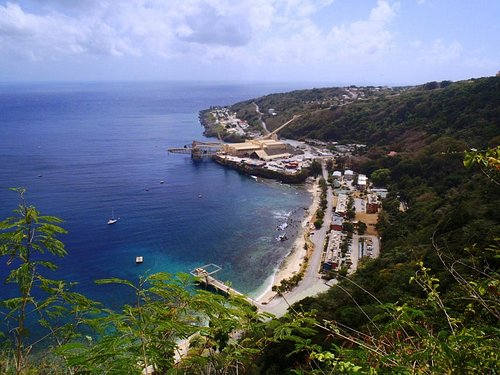
1. Christmas Island National Park

2. Christmas Island Visitor Centre
3. The Dales Hiking Trail
4. Dolly Beach
5. Lily Beach
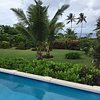
6. The Grotto
7. The Blowholes

8. Ethel Beach
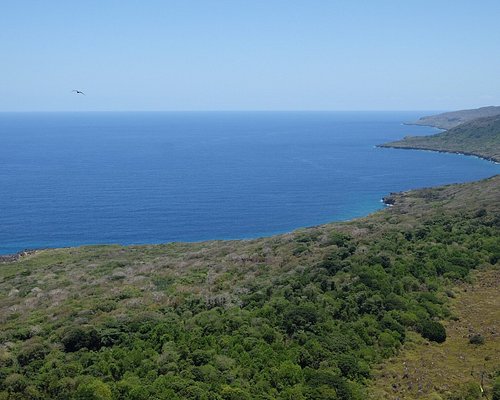
9. Margaret Knoll Lookout

10. National Park Bird Feeding
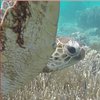
11. Gun Emplacement
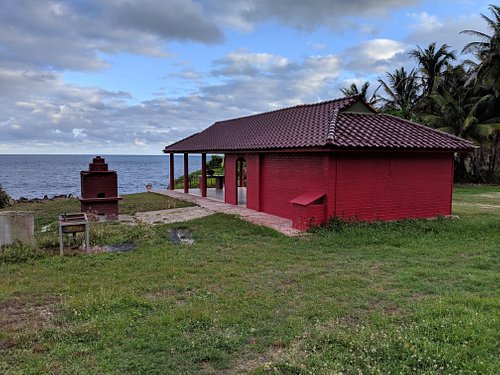
12. Ma Chor Nui Nui Temple

13. Greta Beach
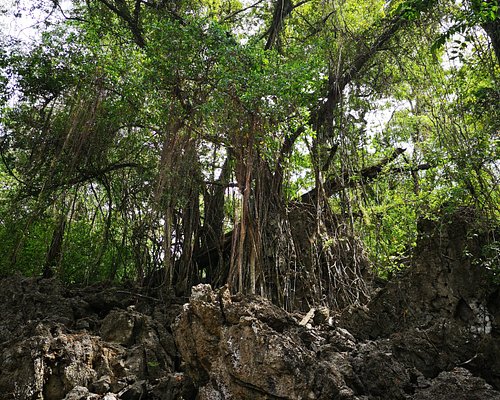
14. Territory Day Park
15. Golf Course Lookout

16. Tai Jin House
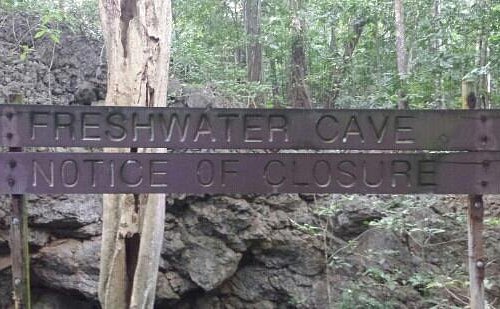
17. Freshwater Cave
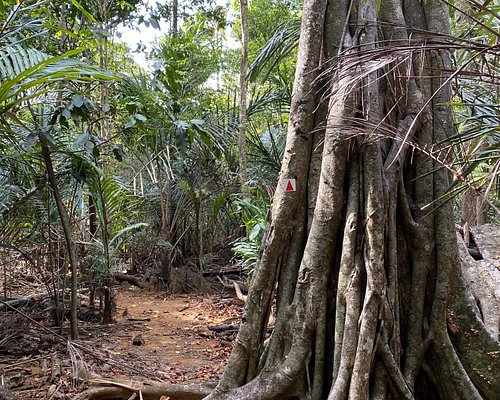
18. West White Beach

19. Soon Tien Kong Temple
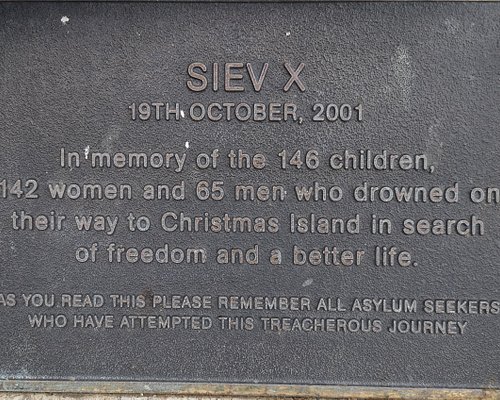
20. SIEV-X Memorial

21. South Point Railway Station
22. siev-221 memorial.
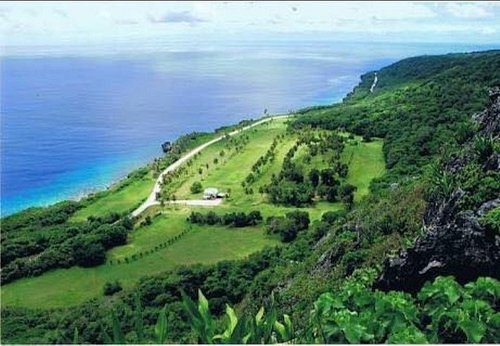
23. Christmas Island Golf Course
24. tai pak kong.

25. Wild Papaya
26. Si Mian Fo
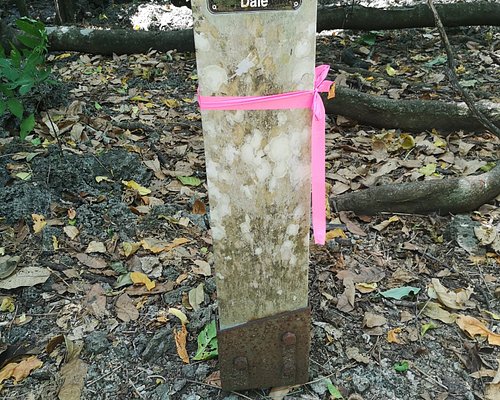
27. Anderson Dale Walk
28. catholic church.
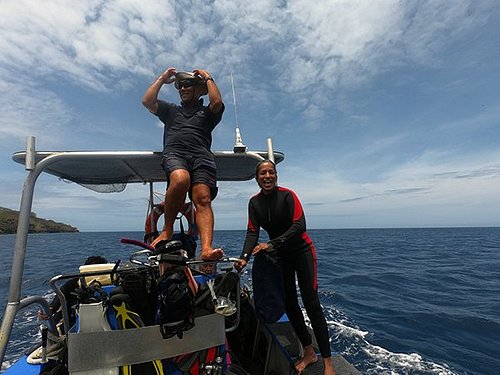
29. Christmas Island Wet n'Dry Adventures
30. Extra Divers Australia
What travellers are saying

- Christmas Island National Park
- Christmas Island Visitor Centre
- The Dales Hiking Trail
- Dolly Beach
- Christmas Island Fishing & Adventure
- The Blowholes
The best snorkelling and diving sites around Christmas Island
Carla Grossetti
Sub-Editor & Journalist
13 February 2023
| THIS ARTICLE WAS CREATED IN PARTNERSHIP WITH |
This article was created in partnership with, as a newly proclaimed australian marine park, there’s no better time to plan a snorkelling or diving adventure to the pristine waters off christmas island..
Christmas Island first appeared about 60 million years ago when the peak of a basalt volcanic seamount (submarine volcano) rose steeply some 5000 metres from the ocean floor. Located in the Indian Ocean, which wraps around the bays and beaches like a piece of glittering tin, Christmas Island is a magnet for ocean lovers, divers and snorkellers who are drawn to the unique marine environment that is oft-described as Australia’s Galapagos. Christmas Island has now been declared a marine park – here is our guide to the best snorkelling and diving sites dotted around Christmas Island, where the average water temperatures range from a balmy 27 to 29°C.
Best beaches and coves for snorkelling on Christmas Island
Flying fish cove.
Snorkellers are advised to wear reef shoes to protect their feet from sharp coral and stonefish as they enter the warm clear waters of the Indian Ocean from Flying Fish Cove. The cove is popular with families due to the fact it’s a relatively protected swimming area and has BBQ facilities to boot; it’s also a top spot to surf when there’s a swell running. According to Diveplanit.com, 90 per cent of all the species that are found on Christmas Island can be found in Flying Fish Cove, including the freckled hawkish, octopus, hawksbill turtles, lionfish and blue-lined surgeonfish. The beach faces west, so arrive to see the setting sun colour the horizon, cold drink in hand. Join Christmas Island Freedive instructor David Mulheron in the clear, calm waters off Flying Fish Cove, which is an 80-metre swim from the jetty. The champion freediver believes Christmas Island to be one of the best freediving locations in the world and will guide you to some amazing coral gardens. Flying Fish Cove is also a popular surfing spot.
Best for : Families and freediving enthusiasts
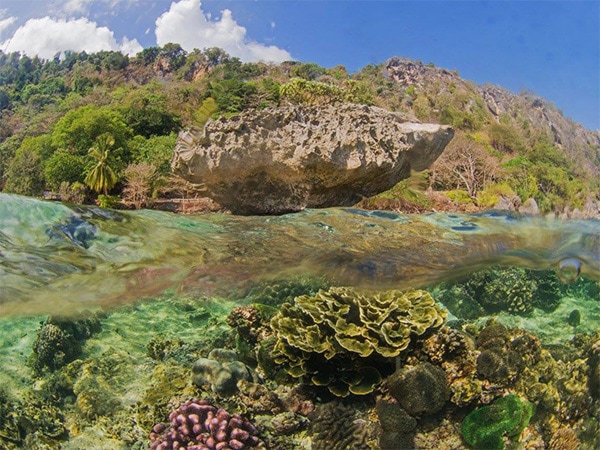
Underneath Flying Fish Cove.
Ethel Beach
The waters off Ethel Beach are a great option for snorkelling and swimming if the seas off Flying Fish Cove are too rough. As with all of the beaches on CI, you will need to consider the prevailing conditions on the day before you make a decision to enter the water. The colourful reefs that fringe Ethel Beach are teeming with marine life and this northern section of the Christmas Island coastline has some of the most pristine examples of unspoiled coral in the world just offshore. Look out from shore for giant frigate birds and the flick of a whale shark tail during the season and keep your eyes peeled for pelagic fish such as wahoo while in the water. Again, reef shoes should be worn on the beach to protect your feet. Those who suffer from seasickness will be pleased to know it’s just a short boat ride away to encounter whale sharks and manta rays.
Best for : Keen snorkellers
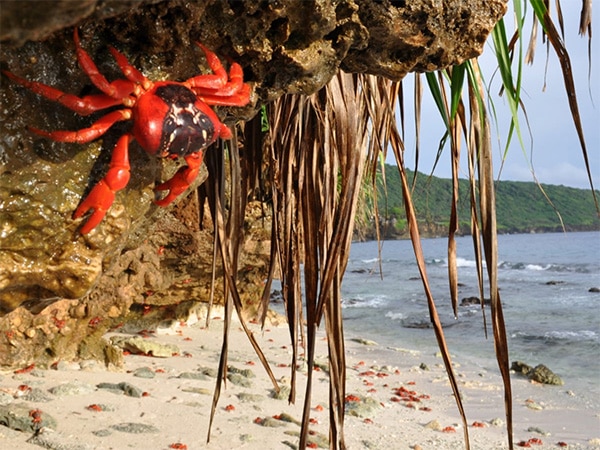
Ethel Beach is teeming with marine life in and out of the water.
West White Beach
West White Beach is located on the island’s north coast and features a tall forest of trees that seem to dance and sway in unison, like a chorus line. The trek to get to the beach is quite challenging and, after a moderately difficult hike through the beautiful rainforest, access to the beach is gained via a rope designed to facilitate the descent down a small but steep section of the cliff. Make sure you wear sturdy walking shoes and bring a backpack so you can fill it with water bottles and snorkel gear. A pair of polarised sunglasses are also required to cut down on the glare bouncing off the gleaming white-sand beach and better appreciate those spectacular views. Snorkelling is a must-do while on Christmas Island due to the dazzling array of fish and the fact you might find yourself swimming alongside turtles or dolphins.
Best for: Fitness freaks
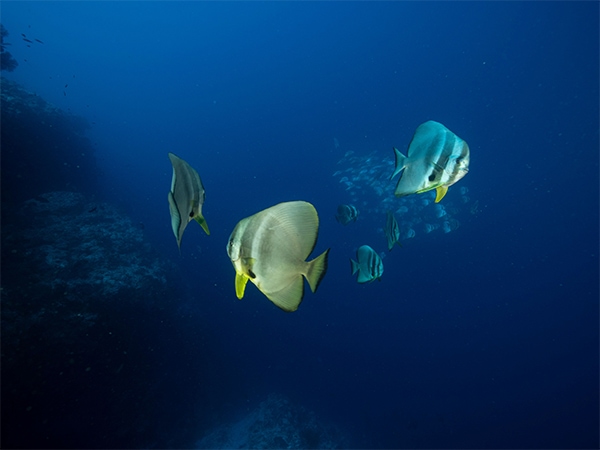
Swim alongside tropical fish.
Dolly Beach
The trees act as a windbreak on Dolly Beach, which is a pretty, quiet pocket just 30 minutes from town and accessible by a boardwalk that meanders through the rainforest. Understand why the tag Australia’s Galapagos has merit when you dance barefoot along this secluded beach which is a nesting place for marine turtles; visitors to the beach will often come across the tracks of adults and hatchlings who have waddled across the sand. Dolly Beach is fringed by palms, which appeals to the resident coconut crabs. The giant crabs, also known as robber crabs, are the world’s biggest land crustaceans and seeing them lurching along the sand is surreal.
Best for: Wildlife lovers
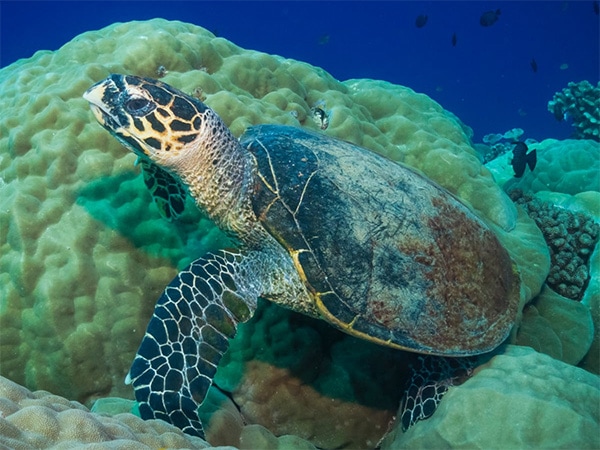
Marine turtles nest on and around Dolly Beach.
Winifred Beach
This pretty little beach can only be accessed by 4WD at low tide, which means you will often have it to yourself. After bouncing along a rough section of the pot-holed track, which runs like a frayed ribbon through the rainforest, you will arrive at Winifred Beach car park, and it’s totally worth it. You must then descend via a steep cliff-face staircase to the beach. After a few hours snorkelling, explore the rockpools where the water eddies around your ankles, write your name in a flowery script in the sand and look out for spinner dolphins frolicking offshore. Check with the Visitor Centre for daily tide times and talk to the team at Extra Divers to arrange a guided snorkelling session or take a deeper dive from their boat on a half-day dive trip. Time your visit to the island between November to April to see giant whale sharks cruising around Christmas Island.
Best for: Intrepid types
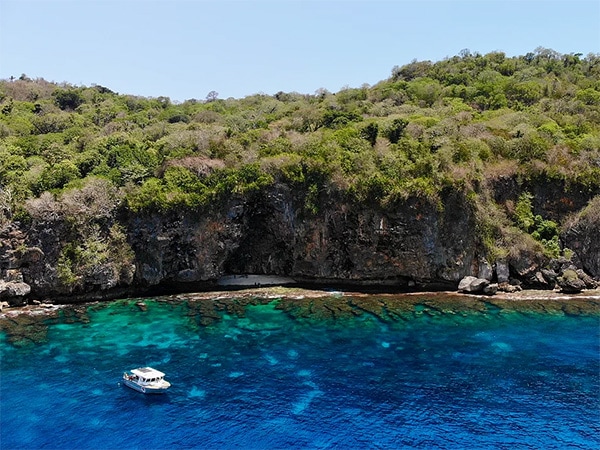
Go diving with the team at Extra Divers.
Best sites for diving on Christmas Island
West white beach cave.
Enter the West White Beach Cave adjacent to White Beach via one of two large entrances separated by a large limestone column, with the walls of the chamber painted a rainbow of colours and shelved with whips, fans and electric clams. Novice snorkellers will be buoyed by the fact the cave is only 12 metres deep, so it is not claustrophobic. Venture outside the mouth of the cave to brave the 12-metre to 18-metre drop-off into the big blue, which is a comfortable descent for those new to diving.
Best for : Diving newbies will appreciate this gentle introduction to cave diving, as they don’t need to venture too deep to see the colourful reef.
Highlight for visitors: Getting a few shots for your Instagram silhouetted against the blue backdrop.
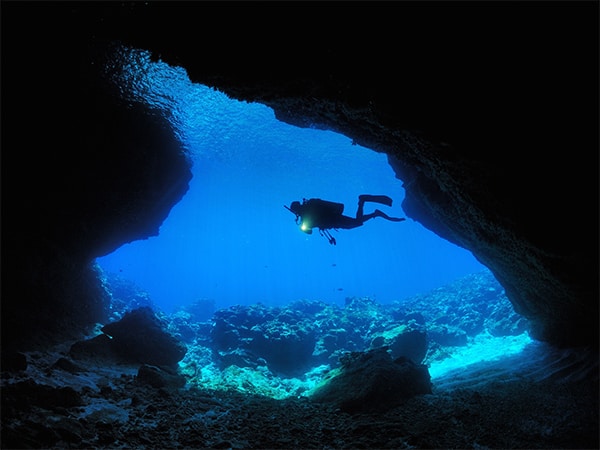
Enter the West White Beach Cave.
Perpendicular Wall
Christmas Island emerges from the Java Trench, which is about 3000 metres deep, and is lapped by seas that change from aquamarine to cobalt blue and minty green. The dive to Perpendicular Wall starts off in a shallow cave, where the seafloor is decorated with red fan coral, like beautiful branching bouquets. Swim out to a wall that reveals schools of triggerfish and pyramid butterflyfish feeding on algae, which spills over sections of the reef like a fuzzy neon-green fringe.
Best for : Divers who like to go to great depths to tick off rare and unusual fish species.
Highlight for visitors : The high probability of seeing manta rays, whale sharks and other large pelagic fish.
Head to the western edge of Flying Fish Cove and follow the boat ramp to the drop-off point, which is about 18 metres deep, where a huge wall of water suddenly turns translucent blue. Ranked by Diveplanit.com as ‘one of the best shore dives on the planet’, Flying Fish Cove is home to a whopping 90 per cent of all the species found around Christmas Island. To be guided by an expert, CI Fishing and Adventure offer intimate snorkelling charters for small groups, or if it’s just you and your diving buddy, be sure to flipper over the edge of the drop-off; it’s like falling in slow-motion through melting glass.
Best for : Those new to diving who are looking for an easy, accessible experience.
Highlight for visitors: According to locals, you will see more fish and coral species in one dive here than you’ll see across the island.
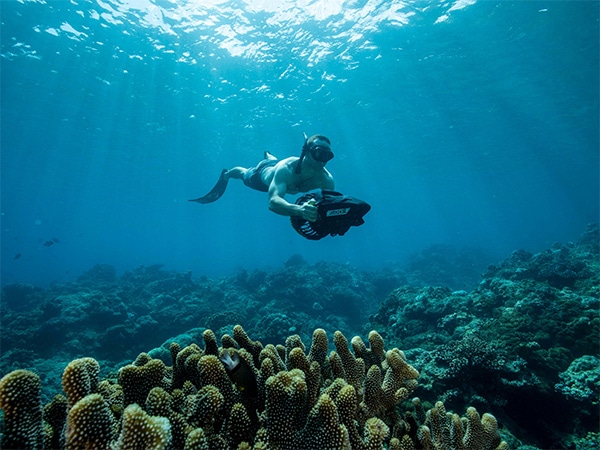
Flying Fish offers an easy, accessible experience.
Thundercliff Cave
The entrance to Thundercliff Cave is submerged, so to access it, you must first descend six metres to a corrugated sandy bottom and then swim into the inky gloom through an almost Gothic archway. You can surface once inside Thundercliff Cave as there is a large air pocket. The large limestone cavern features a spectacular collection of stalactites, like Gaudi-esque chandeliers dripping down from the ceiling. This almost make-believe landscape also includes a smaller tunnel then opens out into a second large chamber where you can also surface for a breather.
Best for : Beginner-level divers with cave certification.
Highlight for visitors : The beautiful beds of coral resemble flower gardens and attract huge flocks of resident batfish.
Million Dollar Bommie
Underwater photographers from around the world have the Million Dollar Bommie on their bucket list. It’s considered one of the best diving spots on Christmas Island and is certainly up there as one of the best diving spots in the world. The bommie is about seven metres high, growing up from a base of about 26 metres, and wearing a pretty pettiskirt made out of delicate sea fans. Find pigfish, mimic surgeonfish and red fire gobi peeking out between the sea fans and coral overhangs, which offer spectacular backdrops for photography . You might also spot Meyer’s butterflyfish, coral trout, damsel fish, fusiliers, triggerfish, and rock cod.
Best for : Advanced, experienced divers
Highlight for visitors: The Million Dollar Bommie is a huge draw for divers because of the variety of fish living in a single, concentrated area. The light on the top of the bommie is cinematic, and the candy-coloured coral makes it a great place to photograph fish. Keep your eye out for a majestic manta ray, which can often be found flying through the water.
Rhoda Wall is a magic place for pelagic lovers and, on a clear day, the visibility is so good it’s like looking through a pane of glass. Peer down into the pale blue from the comfort of your dive boat and you may be able to see grey reef sharks gliding through the water 30 metres below. There is no shortage of great diving sites around Christmas Island, but this coral-lined wall off the northwest coast of the island is full of wonders, sloping down gently in graded shades of blue before falling into a vertical wall at the 20-metre mark. Find great examples of fractal coral and hydrocorals here and colourful tropical reef fish swirling about. Beyond the slope there are some beautiful coral stacks, like packs of colourful cards, and large plate corals, too. Be one of just six divers on an intimate tour with Christmas Island Wet n Dry Adventures , who have been operating on the island since 1996. Japanese-born operator Teruki Hamanaka says while most divers are happy with a full-length 3mm wetsuit, those who feel the cold can also request a 5 mm steamer or a neoprene hood.
Best for: Advanced divers
Highlight for visitors: There are some beautiful royal blue hydrocorals attached to the wall like artworks and yellow and pink fusiliers that dart up and down the wall. Look out for megafauna: during the season (November to March), you are likely to see massive whale sharks swimming by.
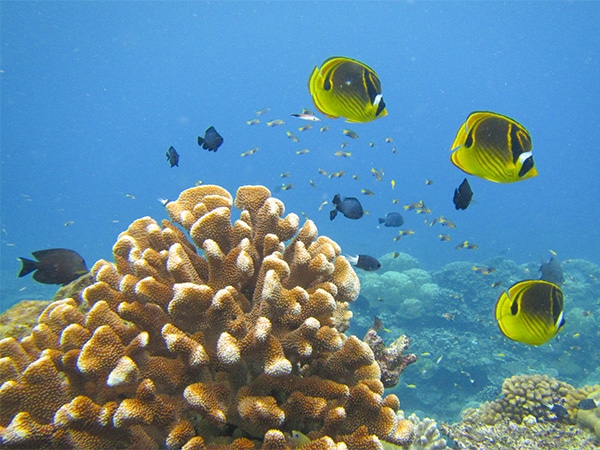
Be one of just six divers on an intimate tour with Christmas Island Wet n Dry Adventures.
LEAVE YOUR COMMENT
Cancel reply.
Save my name, email, and website in this browser for the next time I comment.
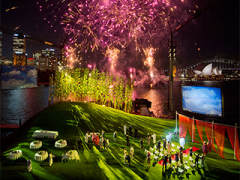
Handa Opera on Sydney Harbour: Madama Butterfly
Take your seat under the stars for Sydney’s best night out!
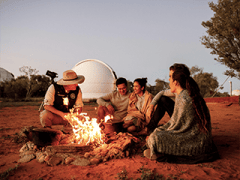
Save up to $800 per couple* On AAT Kings Outback Adventure
See the best of South Australia and the Northern Territory with the experts. This epic tour traverses record-breaking canyons and gorges, national parks and World Heritage Sites. Be inspired by nature writ large.
- Save up to $800 per couple*
- Promo code: NTSALE
- Sale: 27 Feb – 21 Jun, 2023
- Travel: 1 Apr, 2023 – Mar 31, 2024

Need a holiday? Stop dreaming & start planning!
Book your AAT Kings holiday today & save up to 20%* on selected 2023 tours. This is your chance to roam beyond the ordinary. *T&C’s apply.
- Hassle-free travel
- The best inclusions
- Authentic experiences
- 100+ years of expertise
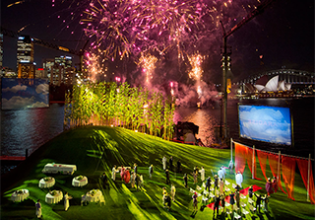
You might also like
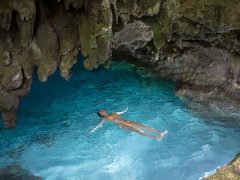
15 things you didn’t know about Christmas Island
Located 2600 km north-west of Perth and closer to Asia than to mainland Australia, Christmas Island is unlike anywhere you’ve ever visited before. ...
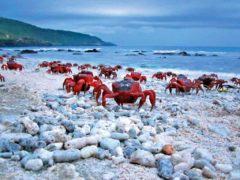
Exploring Christmas Island – a photographic journey
Photographer Inger Vandyke reveals a beautiful yet unfamiliar side to Christmas Island, Australia's most politically charged territory. Christmas I...
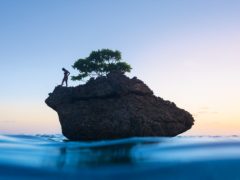
Christmas Island – Our Galapagos
Christmas Island is a rugged, isolated natural wonder - perfect travel for those seeking well off the beaten track. OUR GALAPAGOS 2400 kms to the l...

© Australian Traveller Media 2024. All rights reserved.

Australia Recommends 2024

Come and Say G'day

G'day, the short film

Discover your Australia

Travel videos

Deals and offers

Australian Capital Territory

New South Wales

Northern Territory

South Australia

Western Australia

External Territories

The Whitsundays

Mornington Peninsula

Port Douglas

Ningaloo Reef

Airlie Beach

Kangaroo Island

Rottnest Island

Hamilton Island

Lord Howe Island

Tiwi Islands

Phillip Island

Bruny Island

Margaret River

Barossa Valley

The Grampians

Hunter Valley

McLaren Vale

Glass House Mountains

Alice Springs

Uluru and Kata Tjuta

The Kimberley

Flinders Ranges

Kakadu National Park

Eyre Peninsula

Karijini National Park

Great Barrier Reef

Blue Mountains

Daintree Rainforest

Great Ocean Road

Purnululu National Park

Cradle Mountain-Lake St Clair National Park

Litchfield National Park

Aboriginal experiences

Arts and culture

Festivals and events

Food and drink

Adventure and sports

Walks and hikes

Road trips and drives

Beaches and islands

Nature and national parks

Eco-friendly travel

Health and wellness

Family travel

Family destinations

Family road trips

Backpacking

Work and holiday

Beginner's guide

Accessible travel

Planning tips

Trip planner

Australian budget guide

Itinerary planner

Find a travel agent

Find accommodation

Find transport

Visitor information centres
Deals and travel packages

Visa and entry requirements FAQ

Customs and biosecurity

Working Holiday Maker visas

Facts about Australia

Experiences that will make you feel like an Aussie

People and culture

Health and safety FAQ

Cities, states & territories

Iconic places and attractions

When is the best time to visit Australia?

Seasonal travel

Events and festivals

School holidays

Public holidays
How to get to Australia's most iconic cities

How long do I need for my trip to Australia?

How to travel around Australia

Guide to driving in Australia

How to hire a car or campervan

How to plan a family road trip

How to plan an outback road trip

14 incredible days on Christmas and Cocos (Keeling) Islands
Island hop between these extraordinary locations on an unforgettable 14-day adventure.
By Sue Gough Henly, Georgia Rickard
Get close to unique birdlife, bizarre crab migrations, coral reefs , turtles and whale sharks on this 14-day itinerary. Go deep sea fishing and kitesurfing and relax on some of the world's most beautiful beaches. On these islands, closer to Asia than mainland Australia, you'll discover a distinctive Malay culture and dine on unique Chinese island cuisine. The ideal time to visit Christmas Island and the Cocos (Keeling) Islands is during the south-east wind season between April and November. This coincides with the annual red crab migration on Christmas Island (October to November) and the Hari Raya Puasa (end of Ramadan) cultural celebration on Home Island in the Cocos (Keeling) islands.
What to expect
- See rare birdlife and an extraordinary crab migration
- Bask on exquisite white sand beaches
- Snorkel or dive on pristine, remote coral reefs
- Time: 14 days
- Distance: 1,000 kilometres (684 miles)
- Transport: plane, boat, car and bike
- Nearest major city: Perth
- Price: $$$$
,url-https%3A%2F%2Fwww.australia.com%2Fcontent%2Fdam%2Fassets%2Fimage%2Fmapbox%2Fmarkers%2F1x%2F1.png(105.63333,-10.48333)/auto/600x400@2x?access_token=pk.eyJ1IjoidG91cmlzbWF1c3RyYWxpYSIsImEiOiJja2ExdXdsNzYwNTZsM2dsd24zNnFqMTN2In0.An2c1t_cPfn8R7-LR5glLg)
Day 1: Perth to Christmas Island

View of Flying Fish Cove from Territory Day Park, Christmas Island © Tourism Australia
Take the four-hour flight from Perth to Christmas Island , 135 square kilometres (52 square miles) of steep cliffs, tropical rainforest, rare birdlife, national parks and crabs. Sir David Attenborough labelled Christmas Island the "kingdom of the crabs", and for good reason. This fascinating place is home to an abundance and diversity of land crabs not matched anywhere else on Earth. Tens of millions of endemic red crabs live here, and you'll see them everywhere: in trees, on footpaths, under boardwalks and on beaches. There are also another two dozen species to look out for, including endemic blue crabs (you'll find them inhabiting the island's wetlands), and the harmless, but enormous robber crabs. Named for their propensity to stealing anything that catches their eye, these colourful, basketball-sized creatures are often seen on forest floors and on the island's roads.
Pick up your hire car (4WD is essential as the roads outside the townships are unsealed) and drive to the island's main settlement (known simply as Settlement), where you'll check in to comfortable motel-style accommodation at The Sunset . Then take the 10-minute drive to Territory Day Park , which sits at the top of a mountain crest and offers spectacular views of Settlement and the popular adjacent swimming spot, Flying Fish Cove, below. Enjoy a two-kilometre (1.2-mile) return rainforest walk around the park and get your bearings before taking the 10-minute drive to Tai Jin House , a grand manor that was originally the residence of the island's British administrator. You'll find a permanent exhibition detailing Christmas Island's fascinating history. Enjoy dinner with the locals at the Golden Bosun Tavern , a relaxed pub by the water serving tap beer and affordable meals.
Day 2: Christmas Island

Swimming with whale sharks, Christmas Island © Tourism Australia
Today you'll explore Christmas Island's remarkable underwater world in the area's warm, translucent waters. Because the island is perched on the edge of the Java Trench (the Indian Ocean's deepest point), it offers some of the world's best wall dives in exquisitely clear water. Divers are likely to see large pelagic fish such as tuna, barracuda and reef sharks, as well as some of the 88 coral species and 600 fish species living here, spinner dolphins, and green and hawksbill turtles. Between November and April it's possible to swim with whale sharks on their annual migration. During the October to November's red crab migration – a sight that Sir David has called one of the most memorable moments of his television career, due to the millions of crabs that move down to the water like a giant red carpet – you can take a tour with Indian Ocean Experiences and watch the female crabs spawn. Afterwards, play golf on the lush fairways of the nine-hole Christmas Island Golf Course . Or take a short, steep rugged walk to the Golf Course Lookout, where you can watch red footed boobies, endangered Christmas Island frigate birds and golden bosuns soar past as you admire the spectacular views along the north-east coast. Visit the nearby Mar Chor Nui Nui Temple facing out to sea and dedicated to the Sea Goddess. Enjoy dinner at the Chinese Literary Association, which is not a bookstore but a restaurant serving authentic Chinese fare. Christmas Island's population is 60 per cent Chinese.
Day 3: Christmas Island

Snorkelling at Dolly Beach, Christmas Island © Tourism Australia
Today you'll visit the remarkably pretty Dolly Beach. Enjoy breakfast at your accommodation, then pack a picnic and drive 16.5 kilometres (10 miles) to the beginning of the Dolly Beach walking track , where you'll take the leisurely one-kilometre (0.6-mile) boardwalk through rainforest to arrive at this special place. Dolly Beach is a powdery white stretch of sand framed by a dramatic grove of coconut palms and surrounded by shallow, azure waters complete with a coral reef. Pack a snorkel; you can borrow one at your accommodation. Be sure to take a dip in the natural rock pool in the middle of the beach (it's nicknamed Dolly Beach Spa for the gentle waves that swoosh into it, creating bubbles) and look out for the area's robber crabs as well as the turtles that nest here all year round. Afterwards, drive 11 kilometres (7 miles) south through the rainforest to the Blowholes , where you'll see a dramatic natural performance. The waves here spurt upwards through hundreds of holes in the rocky coastline, creating airborne jets of water in a landscape of black rock pinnacles. Return to Settlement via the stunning Margaret Knoll lookout , which offers panoramic views of the island's east coast and is a perfect site to watch seabirds soaring.
Day 4: Christmas Island

Hugh's Dale, The Dales, Christmas Island © Tourism Australia
Fifteen kilometres (nine miles) from your accommodation, you'll find the Dales, one of the few places on the island with permanent flowing water, providing a significant habitat for the island's endemic blue crabs. Take the boardwalk through Tahitian chestnut trees, strangler figs and banyan trees. On your way, look out for the blue crabs, which are an incredible sky blue colour, and follow the freshwater stream to Hughs Dale waterfall, where you can enjoy a shower (pictured). The Dales is one of Christmas Island's two Ramsar protected wetlands. If you are feeling adventurous, follow another trail from Hughs Dale to Andersons Dale, a small gorge with a stream that flows to the sea. After spending the day here, drive to nearby Martin Point for spectacular sunset views and loads of frigate (booby) birds.
Day 5: Christmas Island

Outdoor Cinema on Christmas Island © Tourism Australia
Spend the day deep sea fishing for big sailfish, tuna, marlin, swordfish and wahoo just a few hundred metres off shore from the boat launch at Flying Fish Cove. Back on land, cool off in the sandy-floored pool beneath a sunlit cave entrance at the Grotto, just a 10-minute drive from the Settlement. Enjoy an authentic Chinese meal at Lucky Ho outdoor restaurant in Poon Saan, and, if it's a Saturday, take in an evening movie under the warm, tropical sky at the Outdoor Cinema .
Day 6: Christmas Island

Lily Beach, Christmas Island © Inger Van Dyke, Christmas Island Tourism
Pack a picnic and drive nine kilometres (six miles) to white coral Lily Beach, one of the island's most accessible and protected beaches, surrounded on both sides by cliffs. At low tide explore the rock pools or swim into the deeper blue water. After lunch stroll the 1.5-kilometre (0.9-mile) limestone karst-lined boardwalk to Ethel Beach. Along the way you'll likely see lots of nesting brown boobies with their fluffy white chicks at close range. These adorable birds are relatively unafraid of humans (and accustomed to cameras), so quietly snap some photos of this rare birdlife encounter, then hop back in your car and take the 20-kilometre (12.5-mile) drive to South Point. This once-thriving community of phosphate mine workers is now a ghost town, but you can see the historic railway station here and visit the Soon Tien Kong Temple, which islanders still visit to practise Chinese Taoism. Stay to catch the sunset before returning to Settlement and enjoy dinner at Rumah Tinggi Bar and Grill . It's an upmarket restaurant housed in a heritage building on the oceanfront.
Day 7: Christmas Island

West White Beach, Christmas Island © Erica Harrison, Christmas Island Tourism
Pack a picnic lunch and drive the 30-minute 4WD track towards West White Beach on a tour with Indian Ocean Experiences . From the car it's a solid one-hour walk with a short cliff descent (rope provided) to reach this secluded long beach edged by a series of rock pools, but well worth it. This is one of the most remote beaches on Earth, where few feet have stood. Make the most of the silence by beachcombing, watching the rock pools for tiny blenny fish that play, mate and chase each other, or watching the crabs that run to and fro in the wash.
Day 8: Christmas Island to Cocos (Keeling) Islands

Direction Island, Cocos (Keeling) Islands © Cocos Keeling Islands Tourism Association
This afternoon you're flying to the Cocos (Keeling) Islands , so spend your morning doing some last minute shopping for Christmas Island art at the Wild Papaya gallery, and shopping for souvenirs at the Visitor Information Centre before boarding your 90-minute flight. You'll disembark directly onto the Cocos runway, in the middle of the West Island golf course – your first clue that the Cocos (Keeling) Islands are rather unusual. An almost perfect circular atoll of 27 islands, each blanketed with coconut palms and surrounded by white sand beaches, Cocos, as it's known to locals, is home to only two inhabited islands: Home Island and West Island. The airport is on West Island. Check in to your accommodation at Cocos Castaway on West Island and have a sunset drink at the Cocos Club before dinner in the beach garden at Tropika Restaurant, which serves a terrific buffet each night.
Day 9: Cocos (Keeling) Islands

Home Island, Cocos (Keeling) Islands © Cocos Keeling Islands Tourism Association
On the opposite side of the atoll to West Island you'll find Home Island, where a small, unique indigenous population of about 450 Cocos Malay people live. The Cocos Malay people are believed to have been settled here in 1826 – as slaves and members of the harem of Alexander Hare, an English explorer – from various parts of Asia, predominantly Malaysia and Indonesia. Today, the Cocos Malay people speak a mixture of English, Malay and Cocos Malay, practise Sunni Islam and maintain their own unique dress code. A two-hour cultural tour of Home Island – only 20 minutes by ferry from West Island – offers fascinating insight into the way these friendly locals live. Discover Cocos Malay traditions, try basket weaving, learn a few Cocos Malay words and visit the museum. Cultural tours take place on Tuesdays, Wednesdays and Thursdays; the restaurant is open for lunch daily and dinner only on Wednesdays. You might consider timing your trip to the Cocos (Keeling) islands to coincide with the Hari Raya Puasa celebrations that mark the end of the Islamic fasting month of Ramadan, when visitors are invited to join locals in wandering from house to house in the Home Island streets, partaking in celebratory open feasts.
Day 10: Cocos (Keeling) Islands

Cocos Dive, Cocos (Keeling) Islands © Cocos Keeling Islands Tourism Association
On nearby Direction Island you'll find Cossies Beach, which, with its creamy white sands, palm-fringed edges and bright blue water, is one of the most beautiful beaches in Australia. To get here, take the 30-minute ferry from West Island to Direction Island (Thursdays and Saturdays only) and orient yourself on the fascinating three-kilometre (1.9-mile) walk around the island. You'll find plaques describing the island's history, including the sinking of SMS Emden, a German ship, during the Battle of Cocos in World War I. Cossies Beach is also home to one of the islands' best land-based drift snorkels, the Rip, in which you can drift above corals, giant trevally, turtles, parrot fish, reef sharks and more. Hire snorkelling gear and receive a detailed brief on snorkelling the Rip before you board the ferry, back at West Island's Visitor Centre, or wait until day 12 when you'll snorkel the Rip with a guide on your dive excursion. This afternoon, join the locals for the Thursday afternoon game on the nine-hole golf course, the only golf course in the world located on an international runway. Then enjoy dinner at Maxi's by the Sea .
Day 11: Cocos (Keeling) Islands

Motorised outrigger canoe safari, West Island, Cocos (Keeling) Islands © Cocos Keeling Islands Tourism Association
West Island is home to a relatively small population (about 100 people), but there's plenty to see and do. Start today with a takeaway coffee or chai latte from Maxi's by the Sea , then embark on a motorised outrigger canoe safari exploring the southern islands of the huge lagoon, where you'll see lots of marine life including turtles, dolphins and tropical fish. The four to five-hour tour departs at different times each day (depending on the tide). You may find yourself enjoying a Champagne breakfast on a floating pontoon, learning about the islands’ history and culture, going snorkelling, strolling on deserted beaches, exploring some of the uninhabited islands and viewing turtle breeding sites. It is estimated there are 30,000 green and hawksbill turtles living in the middle of the atoll. Walk out to the end of West Island's town jetty on the north of the island in the late afternoon to see dozens of them swimming in the shallows. Have dinner this evening at the Flying Fish Cafe (located next to the Cocos Club), which serves fresh-out-of-the-sea tropical fish such as coral trout and sweet lip.
Day 12: Cocos (Keeling) Islands

Kitesurfing, West Island, Cocos (Keeling) Islands © Cocos Keeling Islands Tourism Association
The waters around Cocos (Keeling) Islands are a diver's paradise, and today you'll experience this first-hand on a dive with Cocos Dive . There are more than 25 different dive sites around the atoll, including some with shipwrecks and historical artillery. Marine life that you might encounter includes sea fans, sea anemones, soft corals, black corals, manta rays, dolphins, sharks, moray eels, nudibranches, parrot fish, wrasse, and if you are lucky, the Cocos pygmy angelfish. You may also see Kat, the only dugong to make Cocos his permanent home; he arrived several years ago and has never left. After you've finished your morning dives you'll stop at Direction Island to enjoy a light lunch at Cossies Beach and a relaxed snorkel at the Rip with your guide before enjoying another dive. At the end of your day you'll be returned to West Island. Head to Tropika Restaurant to enjoy another buffet dinner of Cocos Malay and Western dishes.
Day 13: Cocos (Keeling) Islands

Stand-up paddle boarding, Cocos Keeling Islands © Cocos Keeling Islands Tourism Association
The Cocos (Keeling) Islands is one of the best kitesurfing locations in Australia. If you are visiting when the south-east trade winds are blowing, from July to October, join a kitesurfing clinic . Beginners can learn all the basic safety techniques in flat shallow water, where you can simply stand up if you fall over, while more experienced kitesurfers can practise how to jump higher and do back and front rolls. If it's not kitesurfing season, try your hand at fishing – you can buy hooks and handlines at the Visitor Centre, where you'll also be provided with tips on the best spots to fish that day. Alternatively, dedicated fly fishers will be pleased to know this is one of the best places on Earth to practise bonefish fly fishing. December to March is peak season for this, but fish can be caught all year round. Simply bring your own equipment and you can fish from the shore. As the day moves towards its end, head to "the old jetty", on the north end of West Island, where you can usually spot a variety of larger marine animals swimming around its base, including giant trevally, reef sharks, manta rays and lots of turtles. If you've managed to catch anything, cook your catch for dinner at one of the barbecues at Trannies Beach, the Spot Beach or the Gun Club Beach - there are free public barbecues at almost every beach on West Island, but these three offer great views of the setting sun each day. Alternatively, enjoy the locals' Sunday special at the Cocos Club – it might be pizza, hamburgers or something else altogether.
Day 14: Cocos (Keeling) Islands

West Island, Cocos (Keeling) Islands © Rik Soderlund, Cocos Keeling Islands Tourism Association
Spend your final day exploring West Island at your own speed. Most accommodation offers bicycles, but if you prefer you can hire a car or scooter from Cocos Autos Car Hire in town. Next, head to the Visitor Centre to hire some snorkelling gear, then set out for the day: West Island is just 14 kilometres (nine miles) in length and ringed with beaches worth exploring. As you make your way to the northern end of the island, be sure to stop at Trannies Beach or Pulu Maria Beach, both of which have shallow reefs that are perfect for using your snorkel. The Big Barge Art Centre is a community art space that is a work of art itself. It's housed inside a restored wooden copra boat, and inside you'll find the work of local artists that you can admire and buy if you so wish. Owner and artist Emma Washer offers regular art classes here, though you'll need to pre-arrange one. Afterwards, return to town for a final drink at Cocos Club, where you can toast the sunset one last time and vow to return.
Explore more nearby

We use cookies on this site to enhance your user experience. Find out more . By clicking any link on this page you are giving your consent for us to set cookies.
Acknowledgement of Country

We acknowledge the Traditional Aboriginal and Torres Strait Islander Owners of the land, sea and waters of the Australian continent, and recognise their custodianship of culture and Country for over 60,000 years.
- New Zealand (English)
- United States (English)
- Canada (English)
- United Kingdom (English)
- India (English)
- Malaysia (English)
- Singapore (English)
- Indonesia (Bahasa Indonesia)
- Deutschland (Deutsch)
- France (Français)
- Italia (Italiano)
- 中国大陆 (简体中文)
*Product Disclaimer: Tourism Australia is not the owner, operator, advertiser or promoter of the listed products and services. Information on listed products and services, including Covid-safe accreditations, are provided by the third-party operator on their website or as published on Australian Tourism Data Warehouse where applicable. Rates are indicative based on the minimum and maximum available prices of products and services. Please visit the operator’s website for further information. All prices quoted are in Australian dollars (AUD). Tourism Australia makes no representations whatsoever about any other websites which you may access through its websites such as australia.com. Some websites which are linked to the Tourism Australia website are independent from Tourism Australia and are not under the control of Tourism Australia. Tourism Australia does not endorse or accept any responsibility for the use of websites which are owned or operated by third parties and makes no representation or warranty in relation to the standard, class or fitness for purpose of any services, nor does it endorse or in any respect warrant any products or services by virtue of any information, material or content linked from or to this site.
TravelAsker
When and where to see the Red Crabs on Christmas Island?
Travel Destinations
April 15, 2023
By Kristy Tolley
The Red Crabs of Christmas Island
Christmas Island is an Australian territory located in the Indian Ocean. It is famous for its unique wildlife, including the red crabs that inhabit the island. These crabs are an integral part of the island’s ecosystem and play a crucial role in maintaining the balance of the island’s ecosystem. The red crabs are known for their spectacular migration, which is one of the most significant natural events in the world.
The Red Crab Migration: When Does it Occur?
The red crab migration is an annual event that takes place between October and November. During this period, millions of red crabs migrate from the island’s forests to the coast to mate and lay their eggs in the ocean. The migration is triggered by the arrival of the wet season, which provides the crabs with the necessary moisture to survive. The crabs travel up to 8 kilometers to reach the coast, and the migration can last up to two weeks.
The Best Time to See the Red Crabs on Christmas Island
The best time to see the red crabs is during their migration period, which is between October and November. During this period, the crabs are most active and can be seen all over the island, especially around the coastline. It is essential to note that the migration period can be affected by weather conditions, so it is recommended to check with local authorities for the latest information.
Understanding the Red Crab Migration Route
The red crabs migrate from the forests to the coast through a network of established paths that have been used for centuries. The crabs move in a single file, and each crab follows the scent of the crab in front of it. The migration route is carefully monitored by the local authorities to ensure the safety of the crabs and to minimize the impact on the island’s ecosystem.
Christmas Island: Where to Go for the Best Viewing Spots
The best viewing spots for the red crabs are around the island’s coastline, where the crabs gather to mate and lay their eggs. Some of the popular viewing spots include Greta Beach, Flying Fish Cove, and Ethel Beach. It is also possible to view the red crabs from the island’s roads and hiking trails, but it is essential to follow the designated paths and avoid disturbing the crabs.
Exploring the National Park for Red Crab Sightings
The Christmas Island National Park is an excellent place to explore for red crab sightings. The park covers more than half of the island and includes several hiking trails that offer stunning views of the island’s flora and fauna. The park is also home to several other unique animals, such as the Christmas Island frigatebird and the golden bosun bird.
Joining a Guided Tour for Red Crab Observation
Joining a guided tour is an excellent way to learn more about the red crabs and their migration. The tours are led by experienced guides who are knowledgeable about the island’s ecology and wildlife. The tours also provide an opportunity to visit some of the island’s most stunning locations, such as the Dales and the Blowholes.
Adventurous Ways to Witness the Red Crab Migration
For the more adventurous travelers, there are several ways to witness the red crab migration up close. One of the most popular ways is to participate in a night tour, where visitors can see the crabs moving in the dark. Another option is to hike through the forest to see the crabs on their migration route.
The Do’s and Don’ts of Viewing the Red Crabs
When viewing the red crabs, it is essential to follow some basic guidelines to ensure the safety of the crabs and to minimize the impact on the island’s ecosystem. Visitors should avoid touching the crabs, disturbing their habitat, or feeding them. It is also important to stay on designated paths and respect the island’s cultural heritage.
Red Crab Watching Tips for Photographers
For photographers, capturing the red crab migration can be a challenging but rewarding experience. To get the best shots, it is recommended to use a telephoto lens to capture the crabs up close. It is also important to be patient and wait for the right moment to take the shot. Photographers should also be respectful of the crabs and avoid disturbing them.
The Significance of the Red Crab Migration on Christmas Island
The red crab migration is not only a spectacular natural event but also a crucial part of the island’s ecology. The crabs play a vital role in maintaining the island’s ecosystem by turning over the soil and providing nutrients to the forest. The migration also provides an opportunity for scientists to study the crabs and their behavior.
Conclusion: A Unique Natural Phenomenon to Experience
The red crab migration is a unique natural phenomenon that is not to be missed. It is an opportunity to witness one of the most significant natural events in the world and to explore the beautiful island of Christmas Island. Whether you are a nature lover, an adventurer, or a photographer, the red crab migration is an experience that you will never forget.
Related Posts
- Which language is recognized as the official language in Christmas Island?
- What is the reason behind the name of Christmas island?
- What is the origin of the name Christmas Island?
- What is the number of refugees who are being held in detention on Christmas Island?
- What is the creation date of Christmas Island Resort?

Kristy Tolley
Leave a comment cancel reply.

13 Islands You Can Visit Without Leaving The United States
- The United States has over 18,000 islands waiting to be discovered, from famous tourist islands like Maui to hidden gems on lakes and coasts.
- Catalina Island in California offers a unique blend of island paradise, baseball history, and wildlife, including a bison herd protected by the National Park Service.
- From hiking in Isle Royale National Park in Michigan to luxury beach resorts on Amelia Island in Florida, there are amazing United States islands for every kind of trip.
The perfect island escape is a popular bucket list item for many travelers, but actually traveling to one may seem out of reach. While the United States has numerous famous tourist islands, including Maui of the Hawaiian islands, which has many bucket list experiences to enjoy, there are currently over 18,000 islands in the US waiting to be discovered.
From barrier islands along the coast to hidden gems situated on lakes across the country, there are countless islands for every kind of day trip. Whether travelers are hoping to sunbathe on a white sand beach or hike among bison and wildflowers, the perfect island day trip is just waiting to be discovered on any of the following amazing United States islands to visit.
UPDATE: 2023/12/02 23:40 EST BY NICOLE HANSEN
Even More USA Islands to Explore!
With thousands of landscapes to explore, the islands of the US are some of the most unique parts of the country. This list has been updated with even more US islands to visit on vacation. Updates have also been made to the hiking trails and ferry fees to represent current closures and changes. Time to go island hopping in America!
Related: 10 Most Beautiful Mediterranean Islands To Visit In 2024
Catalina Island, Los Angeles County, California
Off the los angeles coast, known for cruise stops, wildlife, and baja california food.
Catalina Island is perhaps one of the most unusual places to visit in California, as well as one of the most historically significant US islands. A strange combination of island paradise, baseball history, and bison grazing lands, Catalina Island has something to attract all audiences . The inhabited part of the island, Avalon, is relatively compact. This, paired with the exceptionally high gas prices that come from island living, means that most people use golf carts to explore the island.
Beyond the borders of Catalina's million-dollar mansions are the undeveloped acres of shrubbery. Numerous native species can be spotted by exploring this region, including the Catalina fox, a smaller cousin to the mainland red fox. There is, however, one truly over-sized resident in Catalina. A herd of bison, left behind after an old western movie was filmed on the island, calls Catalina home. Now protected by the National Park Service, tours of the bison herds are one of the best things to do on Catalina Island.
Visiting Catalina Island
- Ferry Cost: $77/person
Hiking Trails
- Trans-Catalina Trail Hike : 37.6 miles, Strenuous
- Garden to Sky Trail: 2.9 miles, Moderate
Isle Royale, Isle Royale National Park, Michigan
Settled on lake superior, popular for hiking, boating, and fishing.
Not every island in the United States is settled in the ocean. Many of the best US islands to visit for a scenic vacation, like Isle Royale in Michigan, are tucked right in the middle of a lake. Isle Royale is situated on Lake Superior and is so untainted that cars are still not allowed on the island.
Despite the lack of motorized vehicles, there is still plenty to enjoy on Isle Royale. A popular destination for backpacking, boating, fishing, and hiking, Isle Royale is a bit of a step back in time.
Visiting Isle Royal Island
- Ferry Cost: $80/person (one-way)
- Isle Royale National Park Entrance Fee: $7/person
- Scoville Point Hike : 4.7 miles, Moderate
- Suzy's Cave Trail : 4.3 miles, Moderate
Isle Royale is closed annually from November 1 to April 15. Also, no cars are allowed on the island.
St. John, U.S. Virgin Islands
Part of the 90 islands and islets of the virgin islands, great for hiking, snorkeling, swimming, and boating.
The US Virgin Islands are classified as territories instead of states, and, as a result, are frequently forgotten. Despite their underrated status, the Virgin Islands are some of the best islands to visit in the US. With three large islands and over 50 smaller islets and cays , travelers can enjoy an island getaway as well as take advantage of some cheap island hopping among the US Virgin Islands .
Of the Virgin Islands, Saint John is perhaps the most unique stop. Saint John is the smallest of the three major Virgin Islands and has everything from luxury resorts to budget campsites. As part of the free-to-visit Virgin Islands National Park , St. John is also the perfect place for a relaxing day on the beach or hike along the island.
Visiting St. John Island
- Ferry Cost: $8.15/person (one-way)
- Reef Bay Trail Hike : 4.4 miles, Moderately Strenuous
Wizard Island, Crater Lake National Park, Oregon
Situated in crater lake, superb for hiking, scenic viewing, and boating.
It is no small feat to stand out against a masterpiece of Mother Nature like the deepest lake in the United States. In the center of Crater Lake (one of the USA's incredible natural wonders ) lies the 316-acre Wizard Island, a cinder-cone island that stands as the last reminder of the dormant volcano whose remains formed the famous lake.
Named because of its resemblance to a wizard's hat, the best way to visit the island is via boat tour, with both half and full-day options available. Once on the island, visitors can hike to the summit or simply explore the perimeter of this untainted patch of land.
Visiting Wizard Island
- Boat Tour Cost: $55/person
- Summit Hike: 2.3 miles, Moderately Strenuous
Related: 10 Amazing Facts About Crater Lake You Probably Didn't Know
Amelia Island, Nassau County, Florida
A barrier island popular for swimming, wildlife viewing, and luxury beach resorts.
Island getaways are often depicted with white sand beaches and warm ocean waves. Thankfully, Amelia Island can provide that picture-perfect escape without having to break out the passport. This 18.6 square mile island is home to over 40 beaches, a state park, and a charming historic district.
This barrier island along the Florida coast is home not only to clean beaches and an abundance of wildlife but luxury amenities as well. With multiple world-class resorts, restaurants, and spas, as well as a golf course, this little dot of land has everything guests need for a perfect island vacation in Florida.
Visiting Amelia Island
- Ferry Cost: $6/vehicle
- Amelia Island Trail: 11.9 miles, Easy
- Amelia Island State Park Beach Loop: 2.5 miles, Easy
Orcas Island, San Juan Islands, Washington
Off the washington coast, hot for wildlife viewing, luxury activities like golfing, and hiking.
Off the northern coast of Washington lies the San Juan Islands, a popular destination for hiking, sightseeing, and whale watching. The highlight of this archipelago is Orca Island, the 57-square-mile gem of the island chain.
Visitors can plan the perfect vacation to the San Juan Islands by prioritizing the natural beauty of the island, which involves swimming in one of the lakes, sea kayaking around the island, or hiking to the summit of Mount Constitution, the highest point on any of the islands. Guests can also play the 9-hole golf course, go wine tasting at the Orca Island Winery, or dive into the history of the island at the Orca Island Historical Museum.
Visiting Orcas Island
- Ferry Cost: $15.20/person
- Obstruction Pass Trail: 1.4 miles, Easy
- Turtleback Mountain South Trail: 6.6 miles, Moderately Strenuous
- Mount Constitution Summit Hike: 7.9 miles, Strenuous
The San Juan Islands are a true summer destination. While access to Orcas Island is available year-round, some restaurants, attractions, and trails may be closed during the off-season due to weather or low crowds.
Angel Island, Angel Island State Park, California
Off the coast of san francisco, good for hiking, wildlife watching, and wildflower trails.
Situated off the coast of San Francisco is former immigration stop Angel Island. At just over a single square mile, it may be hard to imagine there is much to see, but what Angel Island lacks in size, it makes up for in beauty.
A day trip to Angel Island, which is also a state park, may include hiking one or more of the scenic trails or touring the US Immigration Station. Angel Island also offers some of the best spring hikes in California , as it's one of the standout spots in the state to enjoy natural wildflower blooms during this season, which pop up along the hiking trails and up and down the island’s coastline.
Visiting Angel Island
- Ferry Cost: $15.50/person
- Perimeter Trail: 5.5 miles, Moderate
- Immigration Station Trail: 2 miles, Moderately Strenuous
- Mt. Livermore Summit Trail: 6 miles, Strenuous
Related: Angel Island Is Home To Hiking, Camping, And Plenty Of Sightseeing (And Yes, It's Worth The Boat Ride)
Mackinac Island, Lake Huron, Michigan
Settled on lake huron, superb for hiking, traditional treats, and geological sights.
Of the roughly 30,000 lakes that dot the Great Lakes, perhaps the most notable is Mackinac Island in Lake Huron. With 80 percent of the land designated as a state park, the natural beauty of Mackinac Island cannot be overstated. Multiple hiking trails offer ideal views of the wooded areas and limestone rock formations, including a natural limestone Arch.
The size of the island has allowed some development to thrive, although the island remains a car-free sanctuary. Travelers can enjoy many of the treats offered, including saltwater Taffy, fudge, and caramel corn, while they take a horse-drawn carriage ride through the island town. Finishing the day rocking on the world's biggest front porch, which runs 660 feet, there is no doubt Mackinac Island is worth a visit.
Visiting Mackinac Island
- Ferry Cost: $31/person (online), $34/person (at the booth)
- Mackinac Island Outer Loop: 8 miles, Easy
- Arch Rock: 2 miles, Easy
- Mackinac Island Inner Loop: 7.6 miles, Moderate
This is another US island where cars are not allowed.
Kodiak Island, Kodiak Island Borough, Alaska
Large island off the alaska coast, epic for wildlife viewing, museums, and fishing.
While purposefully planning a visit to Bear Country may not seem like the ideal Alaskan vacation, Kodiak Island is well worth a visit. As the second-largest island in the United States, Kodiak Island is home to a large variety of natural wildlife and human history. The island is home to four unique museums, including the Alutiiq Museum, as well as remnants of the World War II military base that once existed.
While it is important to be aware of the nearly 3,500 Kodiak Brown Bears that call the island home, that shouldn’t stop visitors from enjoying the Kodiak Wildlife Refuge or trying their hand at fishing off the coast of the island. Plus, Kodiak Island is a fantastic road trip destination !
Visiting Kodiak Island
- Ferry Cost: $116/adult (Homer to Kodiak)
- Near End-North End Trail: 2 miles, Easy
- Termination Point: 4.9 miles, Moderate
- Kashavaroff Mountain Trail: 6.3 miles, Strenuous
Bahia Honda Key, Florida Keys, Florida
Part of the chain of florida key islands, great for swimming, beach activities, and ocean wildlife.
There are nearly 1,700 islands in the Florida Keys, but the Bahia Honda Key, which is a state park, is worth a visit of its own. Like many Florida locations, Bahia Honda is full of white sand beaches perfect for soaking in the sun.
The warm ocean surrounding the island is ideal for swimming, snorkeling, or paddleboarding. Meanwhile, the Bahia Honda Bridge is a short half-mile walk that offers an amazing overlook of the keys.
Visiting Bahia Honda Key
- Ferry Cost: $8/vehicle
- Bahia Honda Bridge: 0.4 miles, Easy
Related: Miami To Key West: The Ultimate 3-Day Trip Itinerary
Antelope Island, Great Salt Lake, Utah
Set on the great salt lake, great for scenic drives, hiking, and large wildlife-watching.
The middle of the high desert may not seem like the place to find an island escape, but Antelope Island, surrounded by the Great Salt Lake, is hardly an ordinary destination. Flanked by the shallow waters of the saltiest lake in the western hemisphere, Antelope Island, also a state park, is a snapshot of the desert plains.
Herds of bison, bighorn sheep, and the namesake antelope all call this 42-square-mile island home. Visitors can travel around the island by car or along one of the 15 hiking trails that go both around the perimeter and up to its summit. There is also a Visitor’s Center near the entrance to the island that details the history of the landscape and safety on the hiking trails of Antelope Island that often double as grazing areas for wild bison .
Visiting Antelope Island
- Antelope Island State Park Entrance Fee: $15/vehicle
- Frary Peak Trail: 6.9 miles, Strenuous
- Elephant Head and Mormon Rocks Loop: 21.6 miles, Strenuous
Due to the shallow nature of the Great Salt Lake, a raised highway has been built to allow access to the island, eliminating the need for a boat or ferry.
Related: 10 Things You Didn't Know You Could Do At Antelope Island State Park
Kiawah Island, Charleston County, South Carolina
Off the south carolina coast near charleston, good for ocean wildlife viewing, hiking, and luxury resorts.
With beach access and a sprawling golf course, Kiawah Island offers both luxury and relaxation for travelers who visit. At just over 15 square miles, there is an abundance of natural beauty on the island, paired with multiple luxury resorts that offer excursions like an up-close dolphin or sea turtle encounter.
In order to preserve the natural landscape and habitats of endangered wildlife, much of the island is inaccessible to visitors. However, there are approximately 10 miles of walkable area that allow visitors to experience the marshes and beaches, as well as the wildlife that calls this unique area home.
Visiting Kiawah Island
- Ferry Cost: $12+/vehicle
- Kiawah Island Beach Walk: 13.7 miles, Easy
Much of the island is privately owned by the resorts, but the island is open to the public through Beachwalker Park.
Santa Cruz Island, Channel Islands National Park, California
Off the coast of southern california, loved for hiking, kayaking, and wildlife.
The Channel Islands are a group of five islands that create the Channel Islands National Park, which is easily one of the best nature spots in California . Of the five, Santa Cruz Island is the easiest Channel Island to visit, with the most regular ferry schedule and the widest variety of activities. The park service and private companies provide regular ferries to and from the island, but once there, visitors must use their own two feet to explore (or, they can take any of the epic kayak tours of the Channel Islands' sea caves !)
Numerous species of birds nest on the islands, and both they and a colorful array of wildflowers are easily viewed from the number of hiking trails of varying difficulties. With so much to see and do, Santa Cruz Island is a perfect day trip for those looking for an island adventure.
Visiting The Channel Islands
- Ferry Cost: from $150/person
- Channel Islands National Park Entrance Fee: FREE
- Historic Scorpion Ranch Hike: 0.5 miles, Easy
- Cavern Point Loop Hike: 2 miles, Moderate
- Montañon Ridge Loop Hike: 10 miles, Strenuous
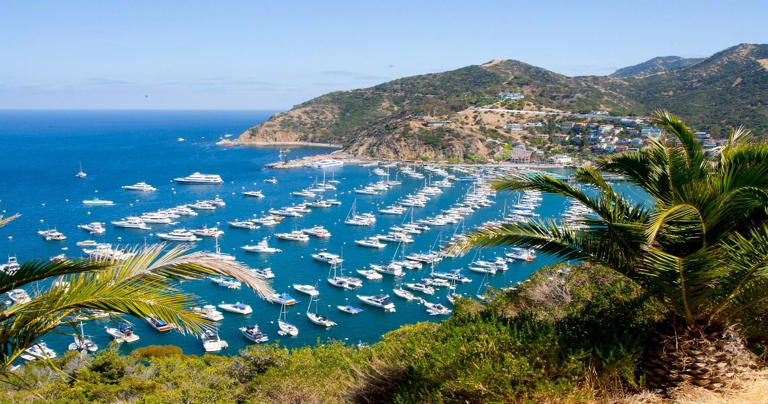
Will solar eclipse be visible in Florida? How much will you see? Enter ZIP code for answers

The 2024 solar eclipse is five days away.
For those still unsure, or have been focused on other news, Florida won't see a total eclipse where the moon totally blocks the sun, but will see a partial eclipse on April 8. How much of the sun will be blocked depends on where you are in the state.
Enter your ZIP code to see specifics on what you will be able to see from any Florida location, along with when the eclipse will start, end and maximum coverage of the sun.
Countdown clock to 2024 solar eclipse
What time will the solar eclipse be visible in florida.
While Florida isn't in the path of totality, residents will be able to see a partial eclipse. Here's when you can watch the eclipse from any Florida location.
Click on your location in the map to see:
- When the eclipse starts at your location
- What the maximum coverage will be
- What time maximum coverage will occur
- When the eclipse ends at your location
- Chances for clear skies based on historical averages for April 8
Roughly speaking, the peak of the eclipse will happen about 1:55 p.m. CDT in Pensacola and 3:02 p.m. EDT on Miami Beach.
Can't see the map? Open in a new browser.
➤ See exact times to go outside to see the eclipse across Florida
Interactive map: Enter your ZIP code to see when the eclipse starts, peak coverage, when it ends
Can't see our graphics? Click here to reload the page.
Enter your ZIP code to see:
- When the eclipse starts at your location.
- When the peak coverage will be.
- What the peak coverage will be.
- When the eclipse ends.
- How long the partial eclipse will last.
- How are you are from the path of totality.
The time lapse graphic shows what the eclipse will look from Orlando.
Timing of 2024 solar eclipse in Pineville, best viewing location in Florida
All times are local.
- Start: 12:36 p.m.
- Peak: 1:55 p.m.
- End: 3:13 p.m.
- Maximum coverage: 78.6%
- Total time: 2 hours 37 minutes
Timing of 2024 solar eclipse in Pensacola
All times are local. ZIP code 32501.
- Start: 12:35 p.m.
- Maximum coverage: 76.6%
Timing of 2024 solar eclipse in Fort Walton Beach
All times are local. ZIP code 32547.
- Start: 12:37 p.m.
- Peak: 1:56 p.m.
- End: 3:14 p.m.
- Maximum coverage: 75.4%
- Total time: 2 hours 36 minutes
Timing of 2024 solar eclipse in Panama City
All times are local. ZIP code 32401.
- Start: 12:38 p.m.
- Peak: 1:57 p.m.
- Maximum coverage: 72.2%
Timing of 2024 solar eclipse in Tallahassee
All times are local. ZIP code 32301.
- Start: 1:42 p.m.
- Peak: 3 p.m.
- End: 4:16 p.m.
- Maximum coverage: 70.1%
- Total time: 2 hours 34 minutes
Timing of 2024 solar eclipse in Jacksonville
All times are local. ZIP code 32034.
- Start: 1:48 p.m.
- Peak: 3:05 p.m.
- End: 4:20 p.m.
- Maximum coverage: 65.2%
- Total time: 2 hours 32 minutes
Timing of 2024 solar eclipse in St. Augustine
All times are local. ZIP code 32080.
- End: 4:19 p.m.
- Maximum coverage: 61.8%
- Total time: 2 hours 31 minutes
Timing of 2024 solar eclipse in Gainesville
All times are local. ZIP code 32601.
- Start: 1:45 p.m.
- Peak: 3:03 p.m.
- End: 4:18 p.m.
- Maximum coverage: 63.4%
Timing of 2024 solar eclipse in Ocala
All times are local. ZIP code 34470.
- Peak: 3:02 p.m.
- End: 4:17 p.m.
- Maximum coverage: 61.4%
Timing of 2024 solar eclipse in Leesburg
All times are local. ZIP code 33585.
- Maximum coverage: 59.8%
Timing of 2024 solar eclipse in Daytona Beach
All times are local. ZIP code 32114.
- Peak: 3:04 p.m.
- Maximum coverage: 59.3%
- Total time: 2 hours 30 minutes
Timing of 2024 solar eclipse in Melbourne
All times are local. ZIP code 32901.
- Maximum coverage: 54.7%
- Total time: 2 hours 29 minutes
Timing of 2024 solar eclipse in Vero Beach
All times are local. ZIP code 32960.
- Maximum coverage: 52.8%
- Total time: 2 hours 28 minutes
Timing of 2024 solar eclipse in Orlando
All times are local. ZIP code 32789.
- Start: 1:46 p.m.
- Maximum coverage: 57.9%
All times are local. Timing of 2024 solar eclipse at Disney World
All times are local. ZIP code 32836.
- Maximum coverage: 57.6%
Timing of 2024 solar eclipse in Lakeland
All times are local. ZIP code 33801.
- Start: 1:44 p.m.
- Peak: 3:01 p.m.
- End: 4:15 p.m.
- Maximum coverage: 57.2%
Timing of 2024 solar eclipse in Winter Haven
All times are local. ZIP code 33839.
- Maximum coverage: 56.6%
Timing of 2024 solar eclipse in Fort Pierce
All times are local. ZIP code 34946.
- Maximum coverage: 52.2%
Timing of 2024 solar eclipse in Stuart
All times are local. ZIP code 34957.
- Maximum coverage: 51.1%
- Total time: 2 hours 27 minutes
Timing of 2024 solar eclipse in West Palm Beach
All times are local. ZIP code 33401.
- Maximum coverage: 49.1%
- Total time: 2 hours 26 minutes
Timing of 2024 solar eclipse in Naples
All times are local. ZIP code 34102.
- Start: 1:43 p.m.
- Peak: 2:59 p.m.
- End: 4:12 p.m.
- Maximum coverage: 50.6%
Timing of 2024 solar eclipse in Miami
All times are local. ZIP code 33101.
- Start: 1:47 p.m.
- End: 4:13 p.m.
- Maximum coverage: 46.2%
- Total time: 2 hours 25 minutes
Timing of 2024 solar eclipse in Key West
All times are local. ZIP code 33040.
- Peak: 2:56 p.m.
- End: 4:09 p.m.
- Maximum coverage: 45.5%
Timing of 2024 solar eclipse in Fort Myers
All times are local. ZIP code 33901.
- Maximum coverage: 52.3%
Timing of 2024 solar eclipse in Sarasota
All times are local. ZIP code 34230.
- Maximum coverage: 56.1%

IMAGES
COMMENTS
Covering a total area of 135 square kilometers (of which 63% is Covered by incredible flora and fauna in Christmas Island National Park), visitors will need to hire a vehicle in order to get around Christmas Island. There is no public transport, and only 1 taxi firm available. As such if you are wanting to get the most out of your visit, you will need car hire.
Christmas Island has distinct wet and dry seasons, with warm daytime temperatures all year round. The wet season starts in October and continues to April, while the dry season runs from May to September. It may still rain during the dry season, so always pack a rain jacket. Birdwatchers will have plenty to see year round, while the dry season ...
When on Christmas Island you can't help but visit the National Park. There are plenty of places to visit and walk and although most of the park is forest the beaches are the prime reason to visit. Read more. Review of: Christmas Island National Park. Written November 21, 2023.
Christmas Island's airport code is XCH and you can get there via Perth, where Virgin Australia runs flights twice a week. The most important thing is to secure a rental car, since that's the main ...
A recreation centre at Phosphate Hill provides a modern swimming pool, gym and sports hall. A crèche and café also operate at the centre. Golf can be enjoyed at the Christmas Island Golf Club. For more information visit the Christmas Island Tourism website. The outdoor Cinema operates every Saturday Night at Poon Saan, even when it is raining.
Christmas Island is a remote, dog-shaped tropical island located 1550 kilometers northwest of the Australian mainland and south of Java. It is an Australian external territory, also called "Galapagos of the Indian Ocean". . 2/3 of the island is covered by a National Park so it is a gorgeous destination to visit for a remote feel where you are surrounded by breathtaking nature, friendly ...
Christmas Island is also an important fishing destination, offering everything from dropping a line off the jetty at Flying Fish Cove to deep-sea game fishing. Giant trevally, wahoo, yellowfin, and dogtooth tuna are some of the larger species. Christmas Island Tourism Association. 5. For A Twitching Good Time.
You can swim, snorkel, climb, hike, and visit the Christmas Island Visitors' Information Centre. There are also several hiking trails, including the one leading to Hugh Dale waterfall. Christmas Island is also a great destination for bird watching. The area has over 80,000 seabirds nesting annually. You can also see over 100 vagrant species.
Accommodation tip: The Christmas Island Bali Style Retreat on Phosphate Hill. Day Two Dive & Snorkel Christmas Island. Day two is a choose-your-own-ocean adventure with a half-day CI Wet n Dry Adventures, Extra Divers or Freedive CI tour or experience, where you can admire colourful fish, vibrant corals and dolphins just metres from shore, take a boat trip to one of the many idyllic diving and ...
As one of Australia's youngest territories, Christmas Island is probably as different as you can get to the Australia you know. The 135 square kilometre island is 60% national park and features a spectacular array of towering cliffs, picture-perfect beaches, stunning coral reefs, and untouched rainforests.
Christmas Island is also known for its incredible birdlife, with an estimated 80,000 seabirds nesting here annually. Along with endemic species such as the Christmas Island frigatebird and the elegant white-tailed tropicbird; red-footed, brown and huge Abbott's boobies can be spotted nesting everywhere from seaside cliffs to locals' front ...
As I mentioned above, Christmas Island is located roughly 1600 miles (2600 km) northwest of Perth and 320 miles (500 km) south of Indonesia. Home to just 2,072 residents, this unique island is only 52sq miles in size (135 square km), of which 63% is actually an Australian National Park. This means that the vast majority of the Island is ...
A visit to Christmas Island is not complete without tasting the island's delicious dishes, which are a mix of Australian and Asian flavors. The Flying Fish Cafe is an ideal place to taste some of the best food here like laksa soup and curry puffs. CI Bakery is another top-tier destination for tasty bread, egg rolls, donuts, and even curry puffs.
7. You can see crabs all year round. Lots of 'em. You might have heard of the annual red crab migration that takes place on Christmas Island and was made famous by Sir David Attenborough; the naturalist has described witnessing this phenomenon while shooting a documentary in 1990 as one of his greatest TV moments.
Listen to Martin's Christmas Island adventures be brought to life in this episode of the Wanderlust: Off the Page podcast. Listen on Spotify, Apple Podcasts, Amazon Prime Music and other steaming platforms. At first the fork-tailed shapes reminded me of pterodactyls, gliding low over the rainforest with huge wings outstretched.
If you visit Christmas Island expect to pay a lot for food, however if you like a drink, the low taxes here make spirits very cheap by Australian standards. Things to do on Christmas Island. Christmas Island is a treasure chest for anyone who likes wildlife and nature. Much like other island wildlife havens such as the Galapagos Islands or ...
Because Christmas Island is an Island, there is some unique and breathtaking wildlife that you can take in. For those who love to watch birds, Christmas Island is the best place to see the Christmas Island Frigate Bird, a seabird that has vibrant black and white coloration. There are, of course, many other species of wildlife to see and experience.
When on Christmas Island you can't help but visit the National Park. There are plenty of places to visit and walk and although most of the park is forest the beaches are the prime reason to visit. Read more. Review of: Christmas Island National Park. Written 21 November 2023.
The Territory of Christmas Island is an Australian external territory in the Indian Ocean comprising the island of the same name. It is located approximately 350 kilometres (190 nautical miles) south of Java and Sumatra and about 1,550 km (840 nmi) north-west of the closest point on the Australian mainland.It has an area of 135 square kilometres (52 sq mi).
About 80% of Christmas Island's 1,700 residents live in Flying Fish Cove. Christmas Island Tourism Association. When it comes to fresh food, the island is largely dependent on imports. "The main ...
Join Christmas Island Freedive instructor David Mulheron in the clear, calm waters off Flying Fish Cove, which is an 80-metre swim from the jetty. The champion freediver believes Christmas Island to be one of the best freediving locations in the world and will guide you to some amazing coral gardens. Flying Fish Cove is also a popular surfing spot.
Or take a short, steep rugged walk to the Golf Course Lookout, where you can watch red footed boobies, endangered Christmas Island frigate birds and golden bosuns soar past as you admire the spectacular views along the north-east coast. Visit the nearby Mar Chor Nui Nui Temple facing out to sea and dedicated to the Sea Goddess.
Every year, Christmas Island becomes a haven for millions of red crabs. The best time to see them is during the annual migration, which usually takes place from October to December. The crabs can be found all over the island, but the best viewing spots include the island's national park and the roads leading to the beaches. Visitors are advised to respect the crabs' habitat and avoid ...
Mackinac Island Outer Loop: 8 miles, Easy. Arch Rock: 2 miles, Easy. Mackinac Island Inner Loop: 7.6 miles, Moderate. This is another US island where cars are not allowed.
The 2024 solar eclipse is five days away. For those still unsure, or have been focused on other news, Florida won't see a total eclipse where the moon totally blocks the sun, but will see a ...